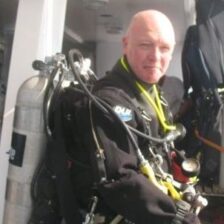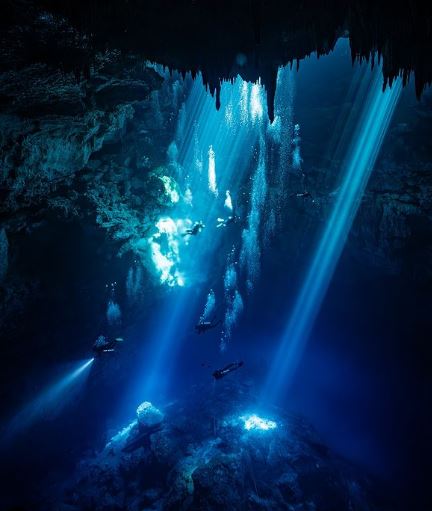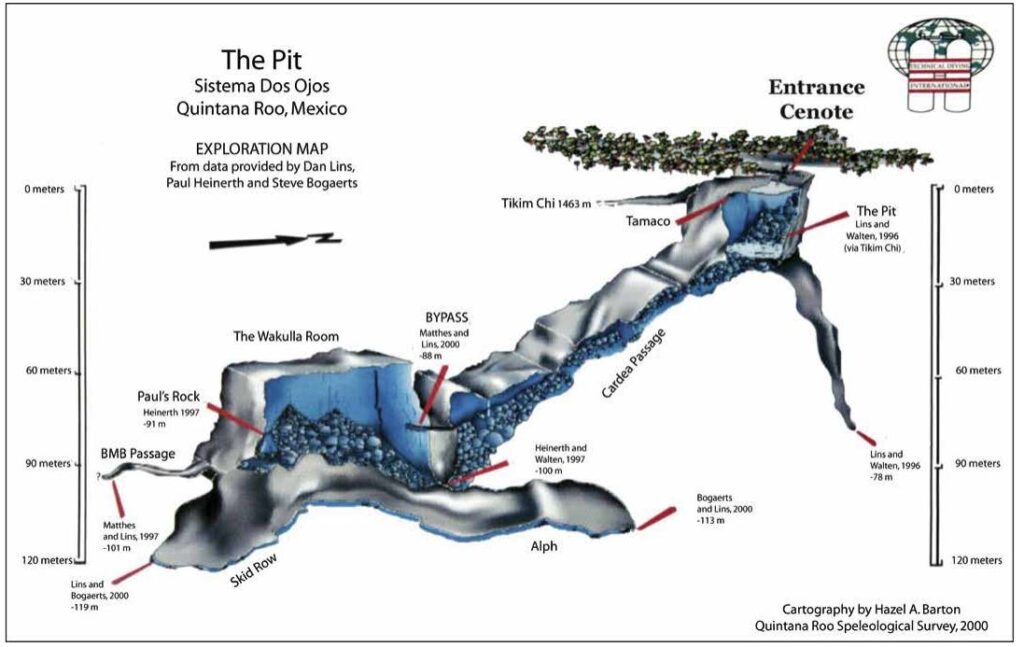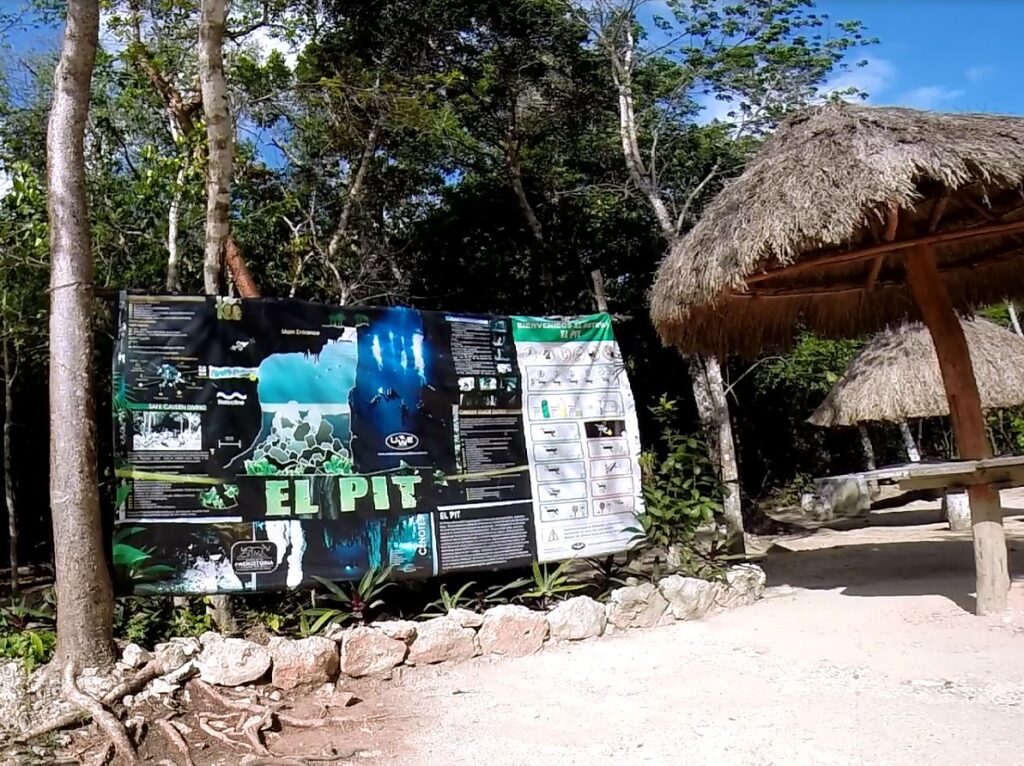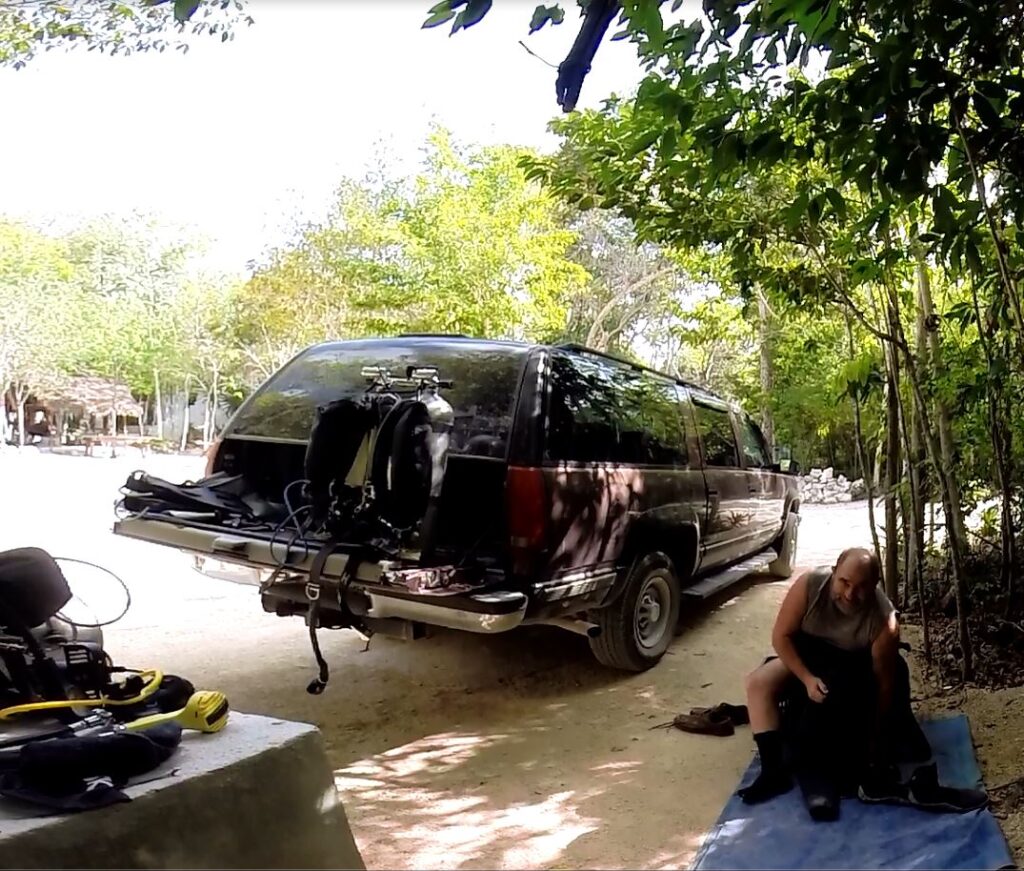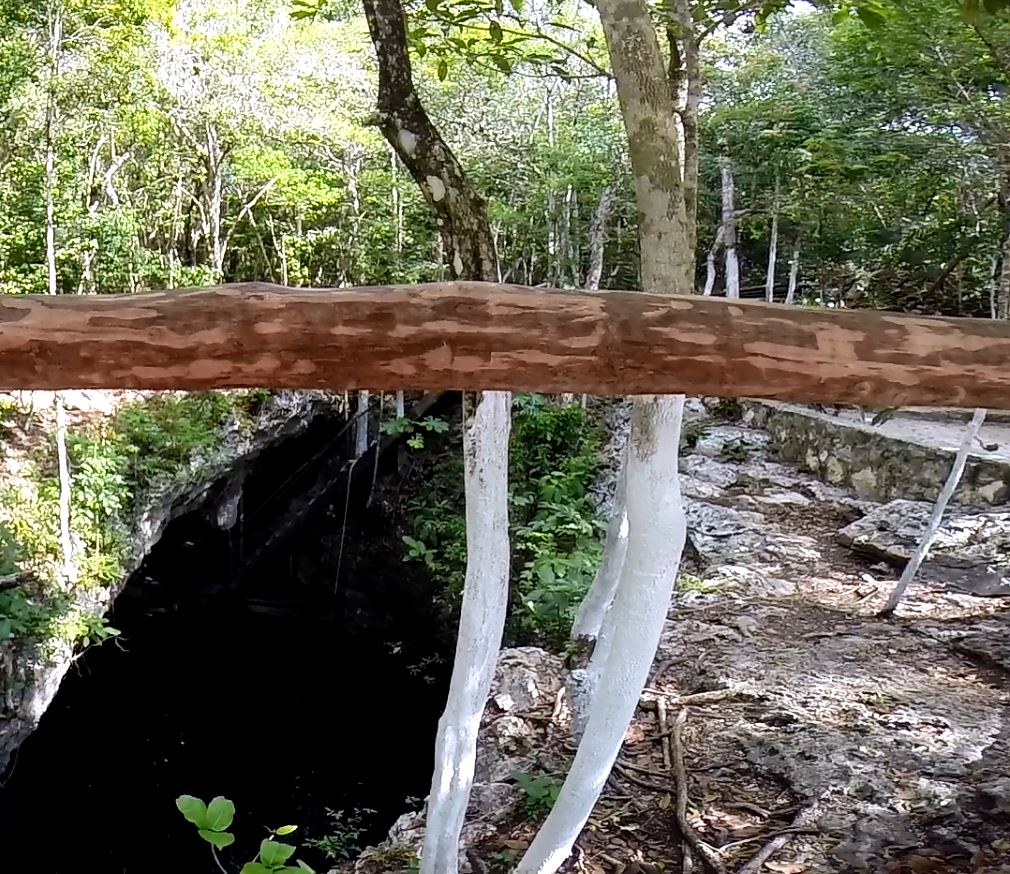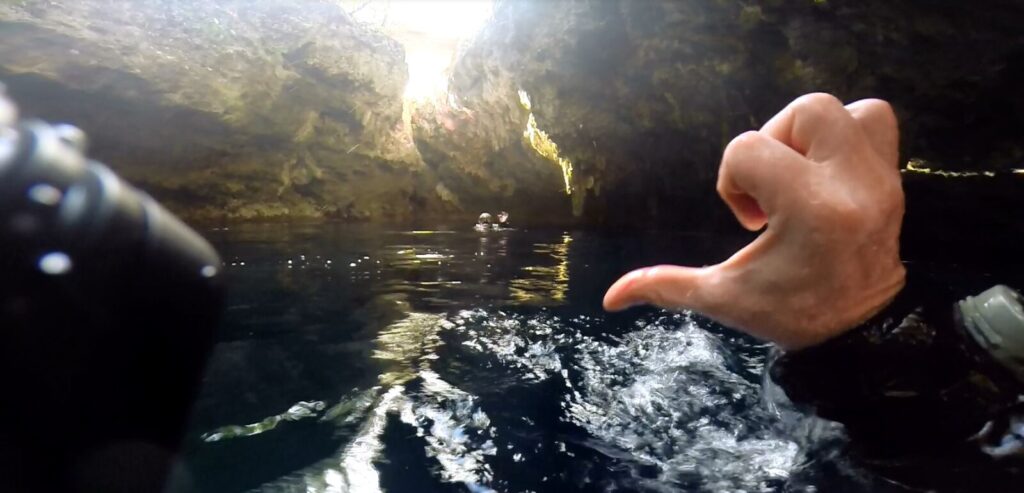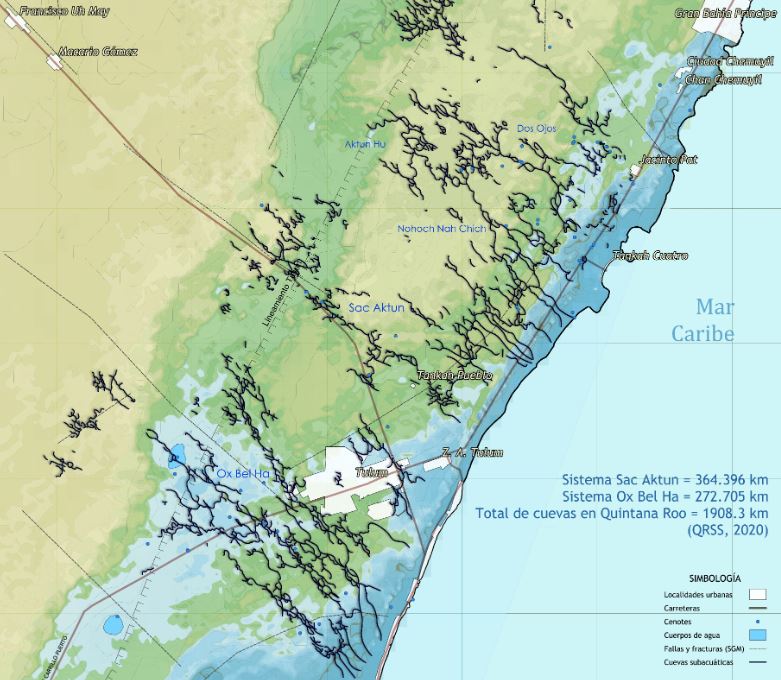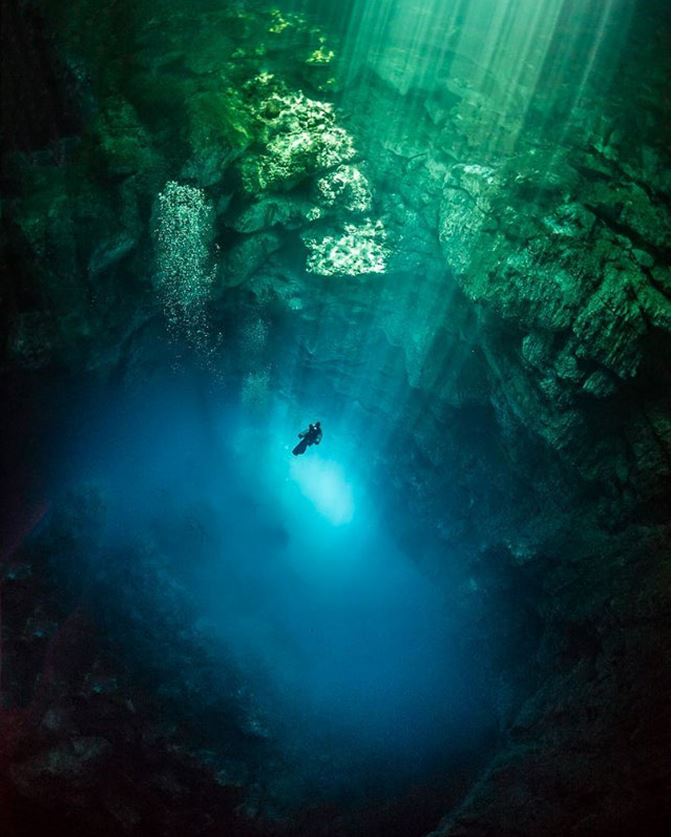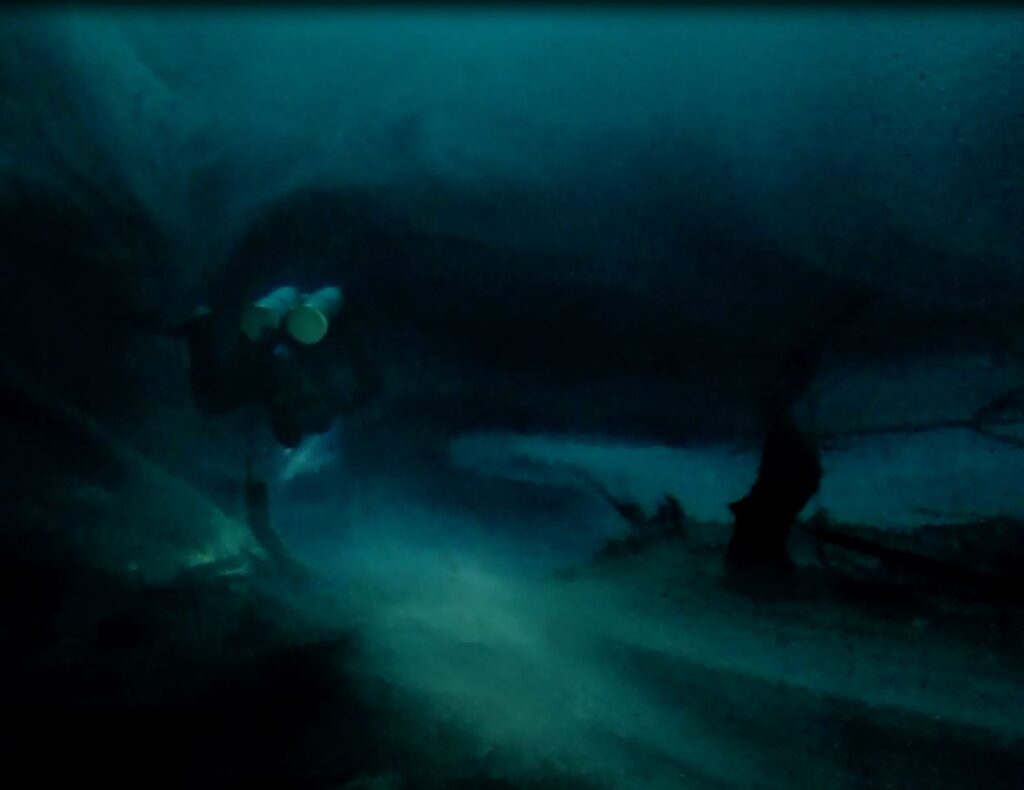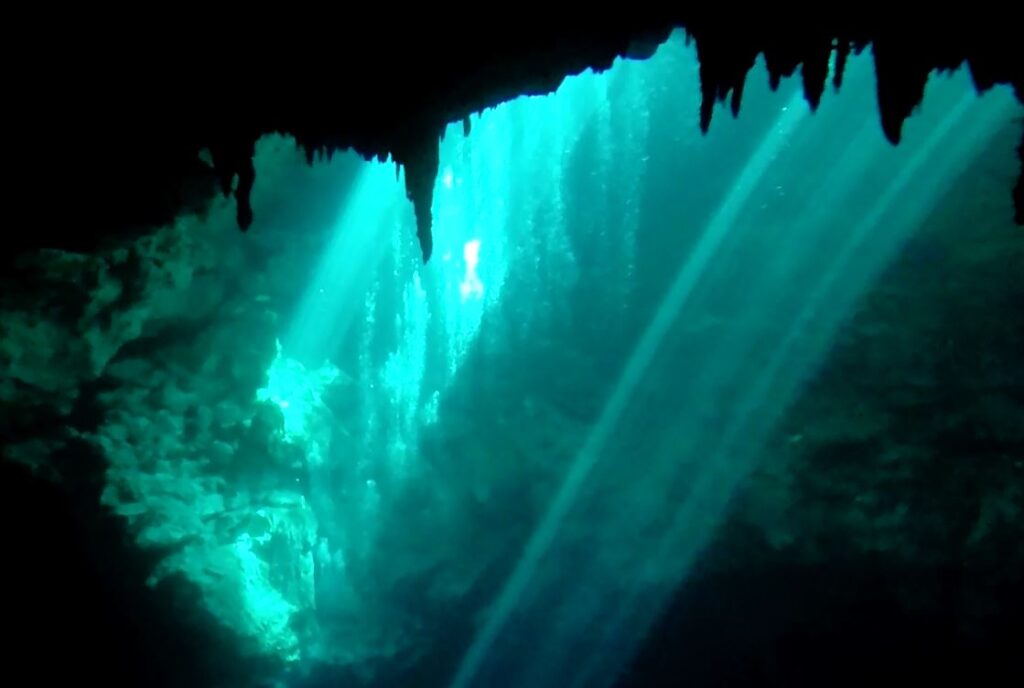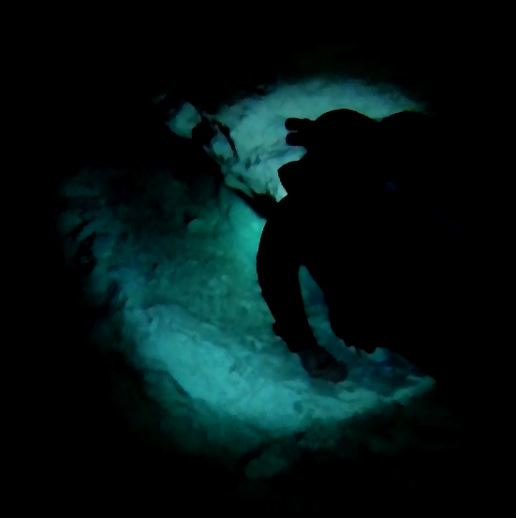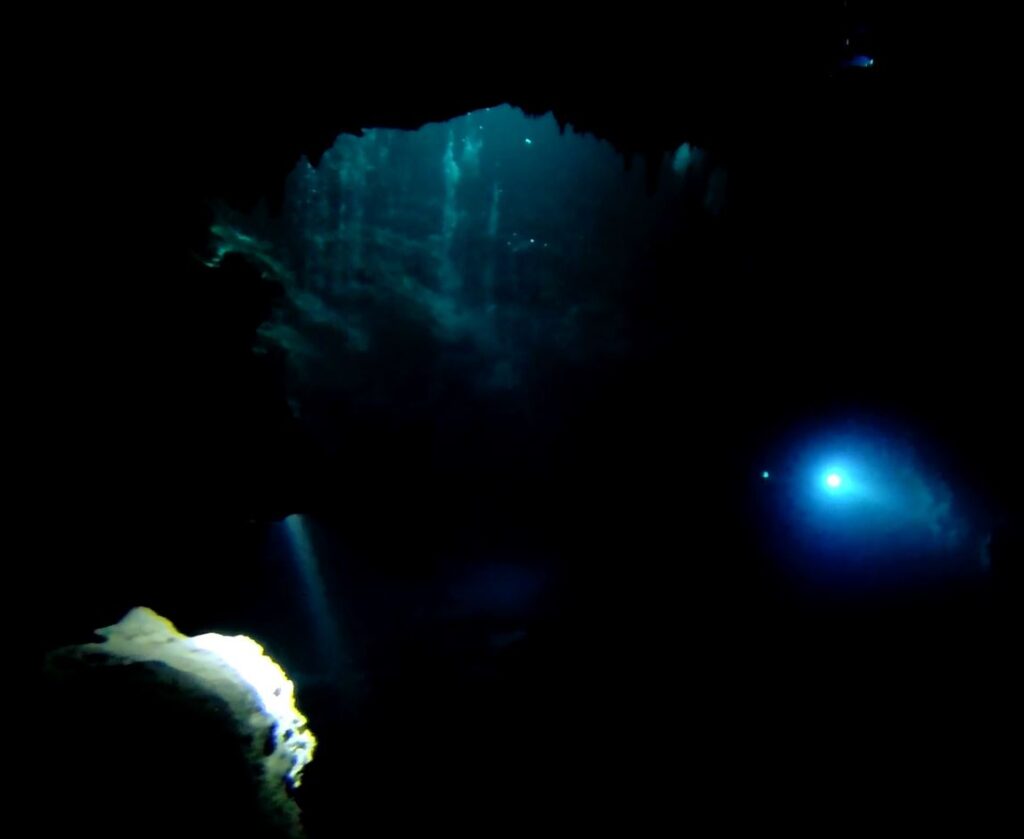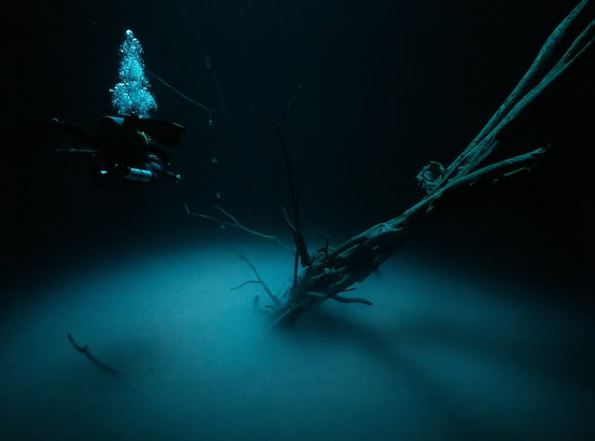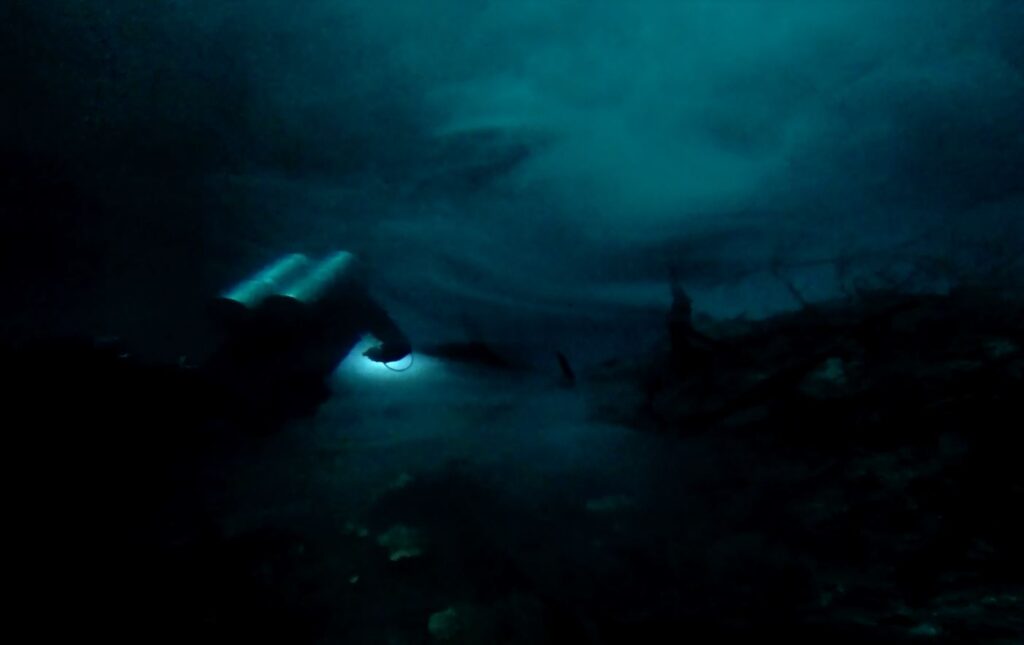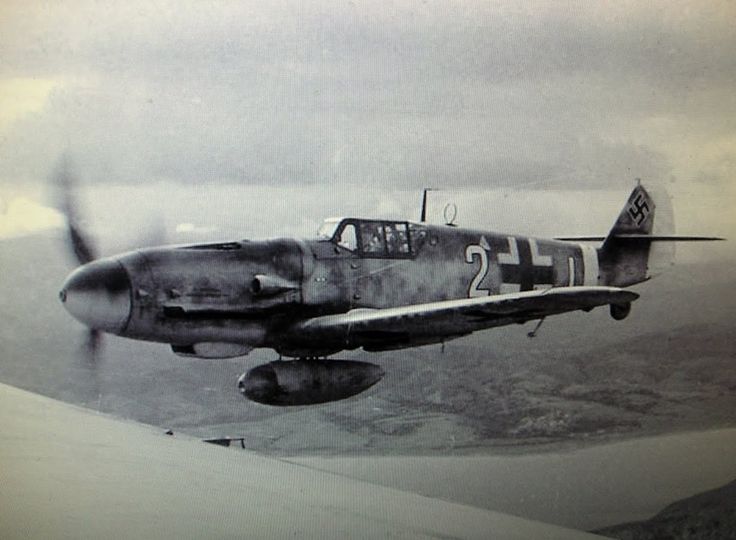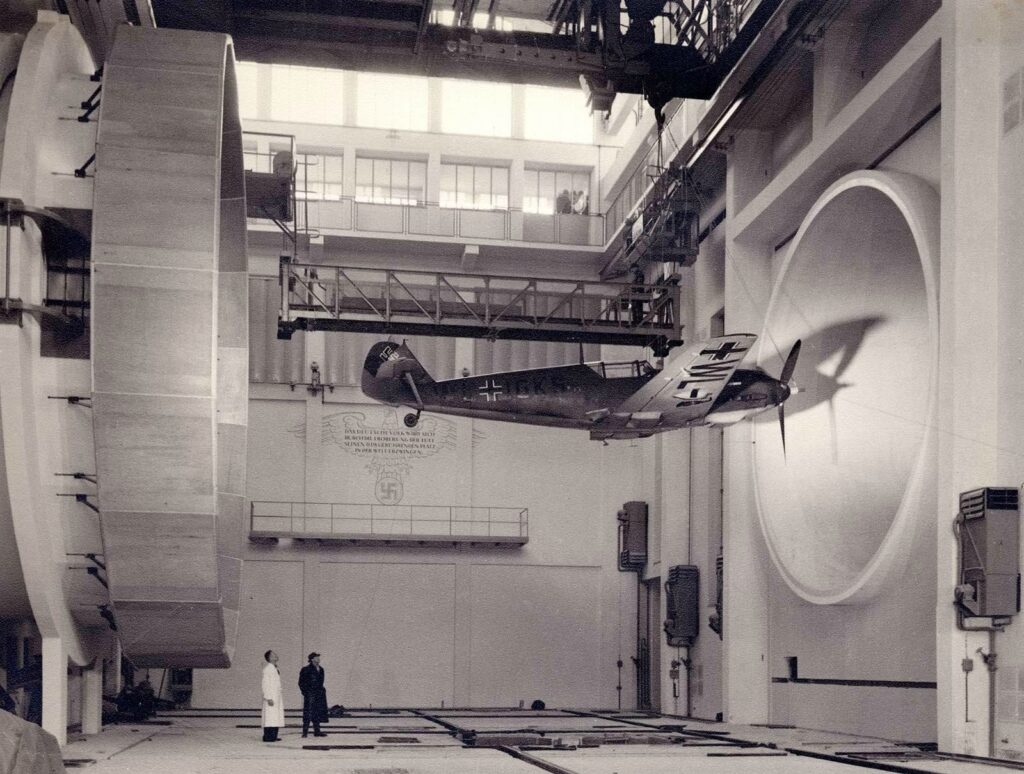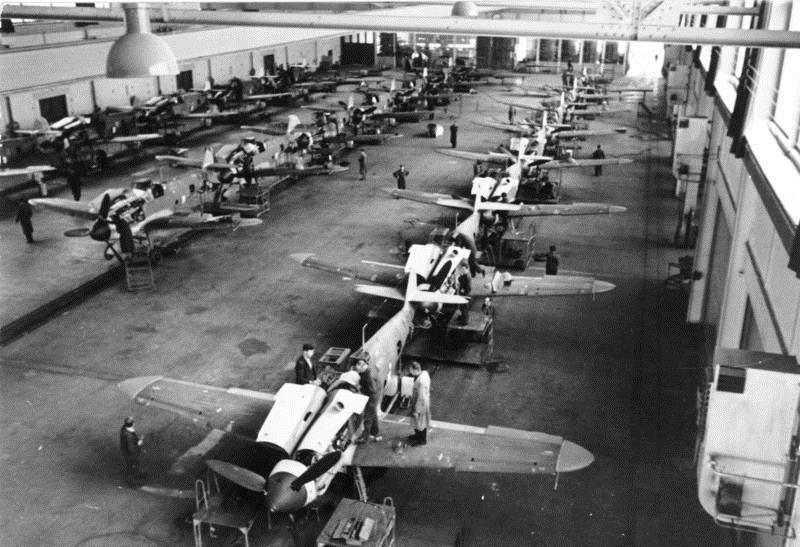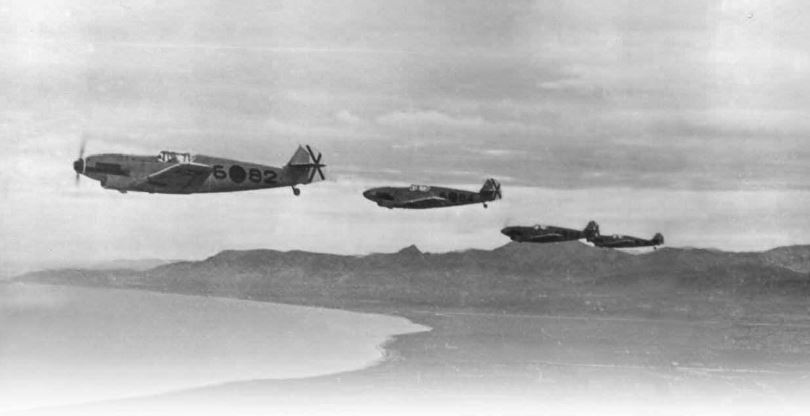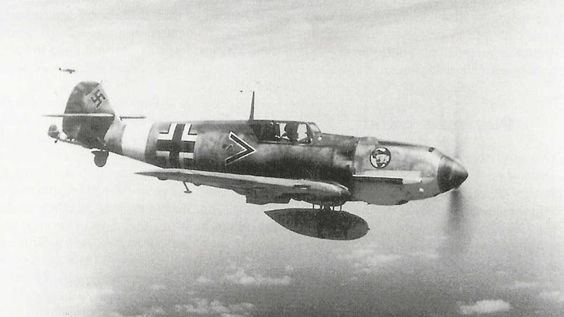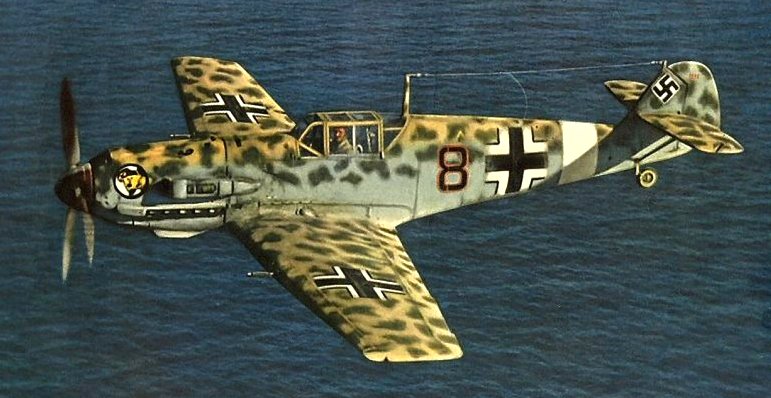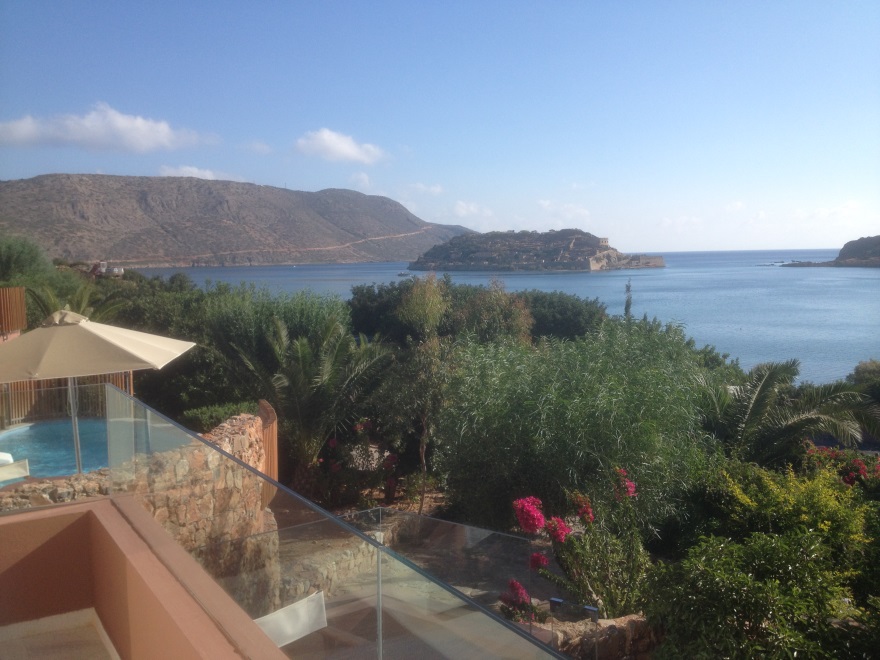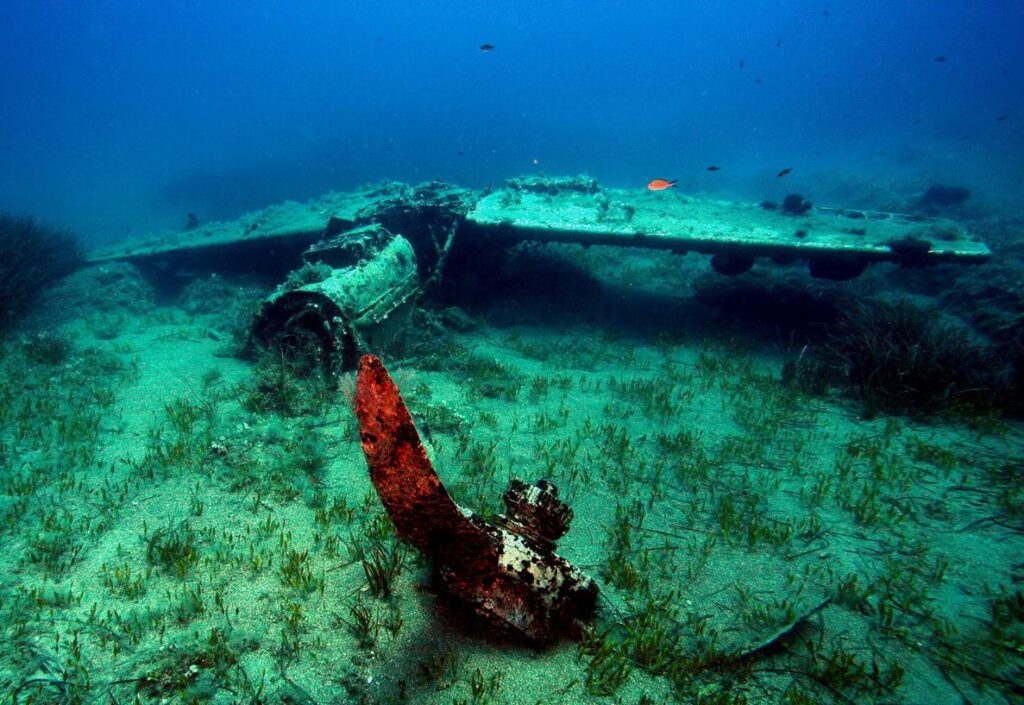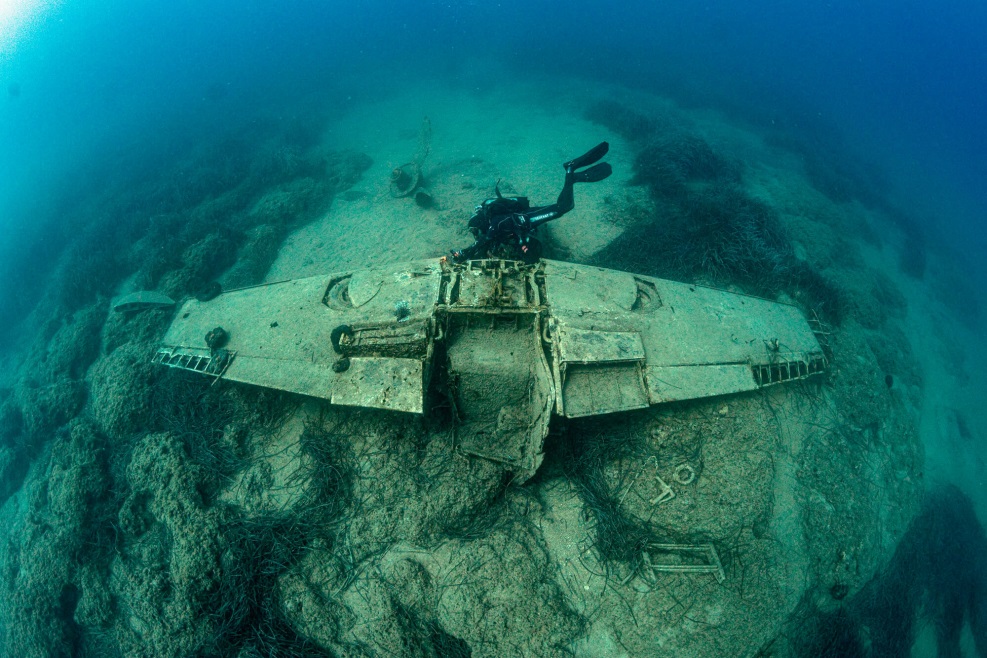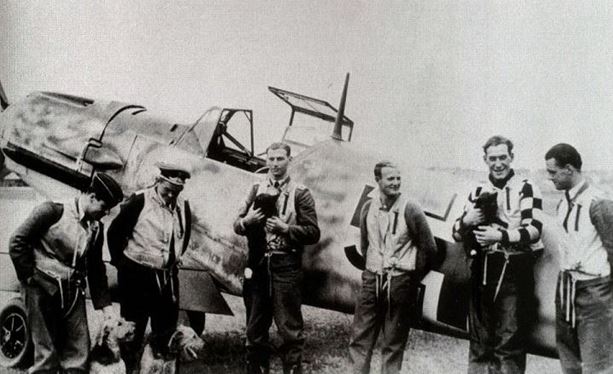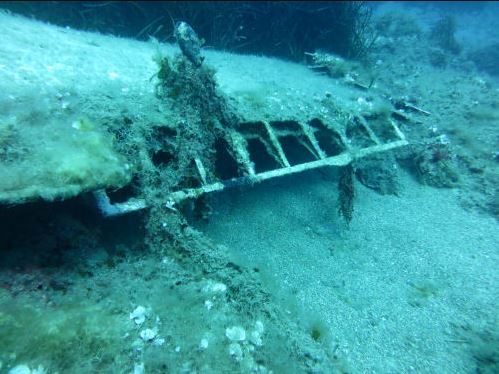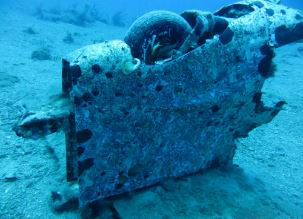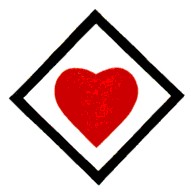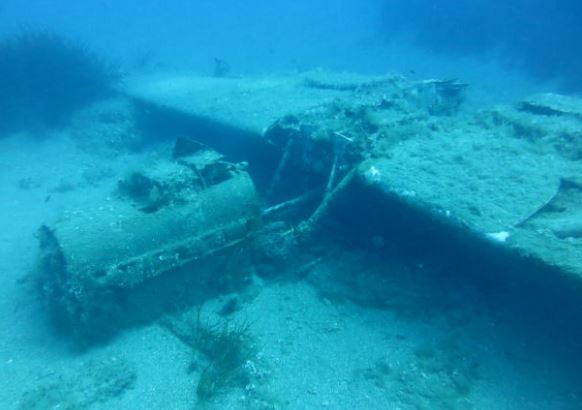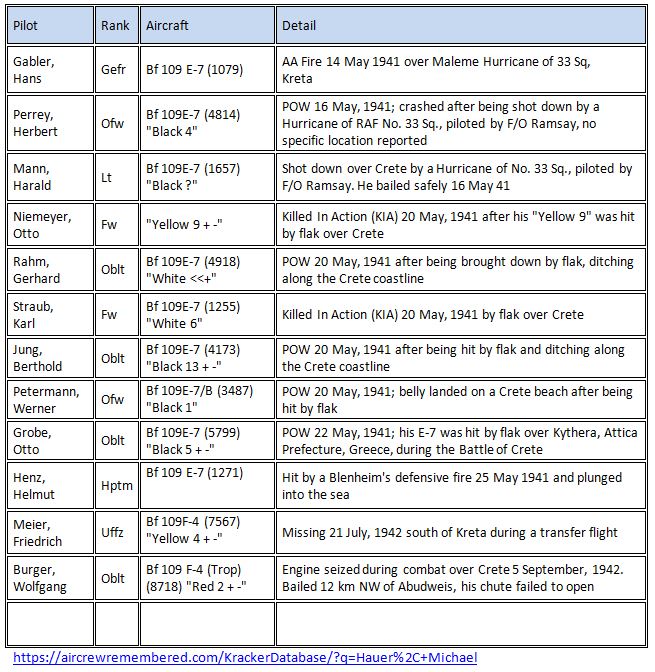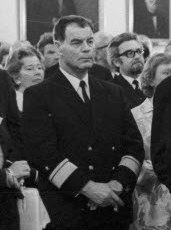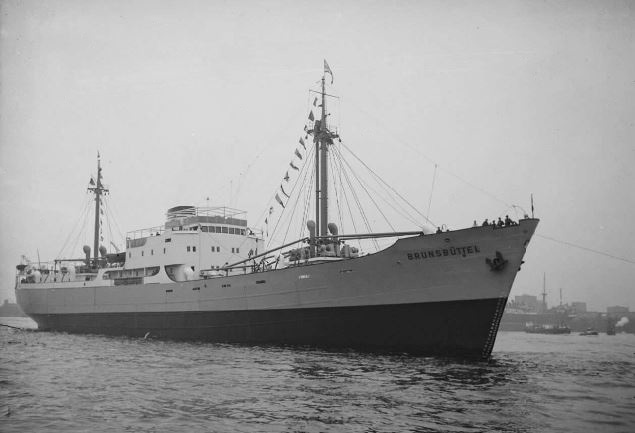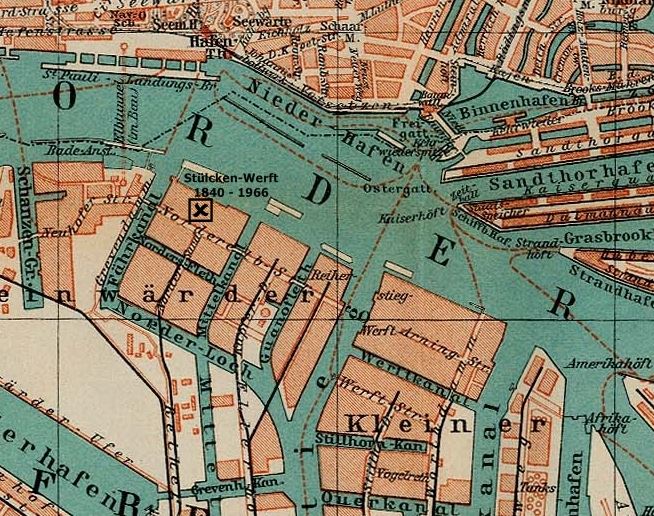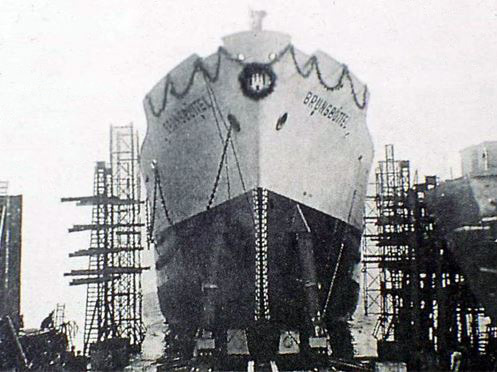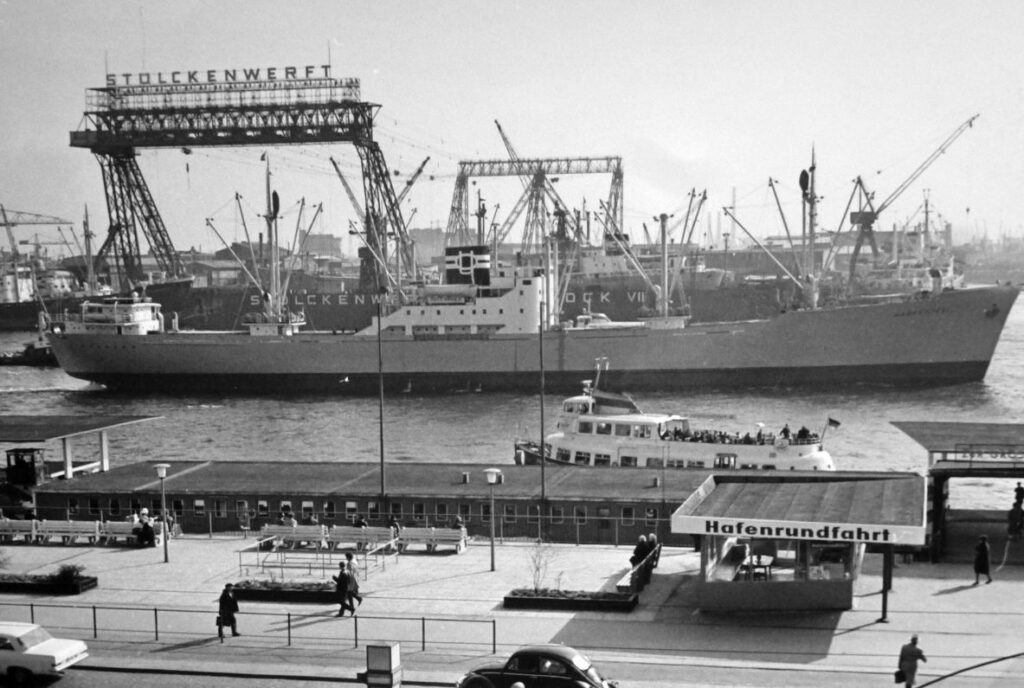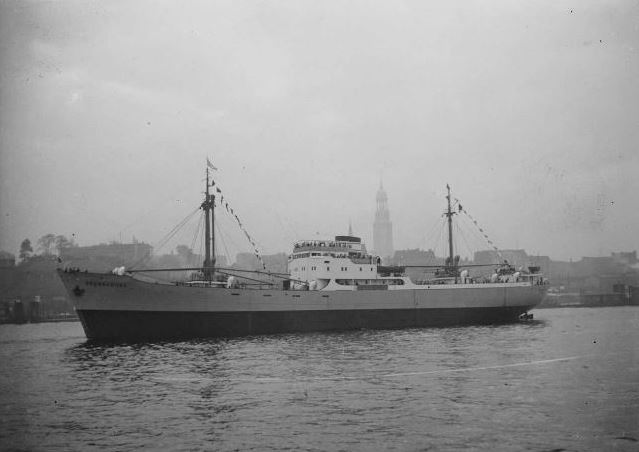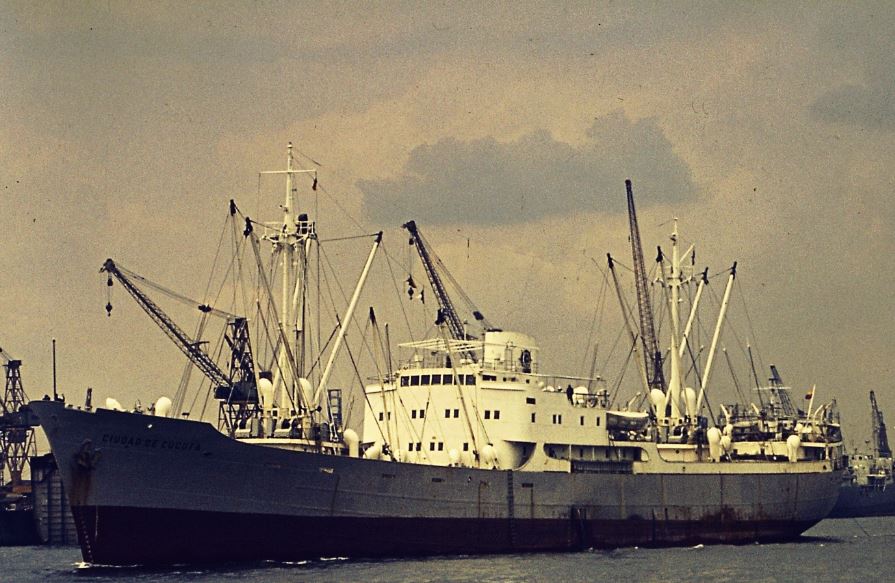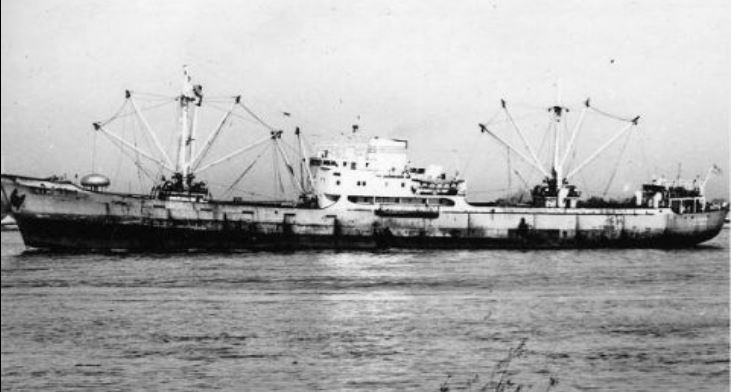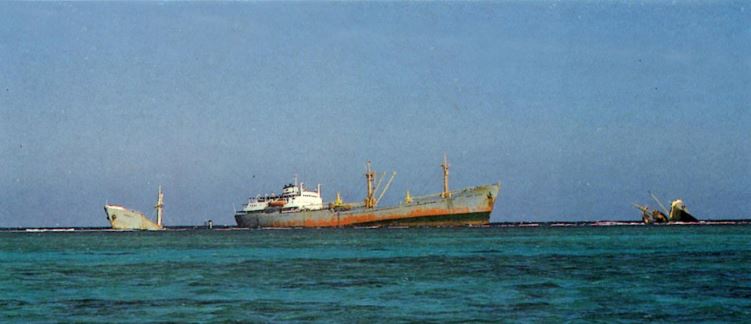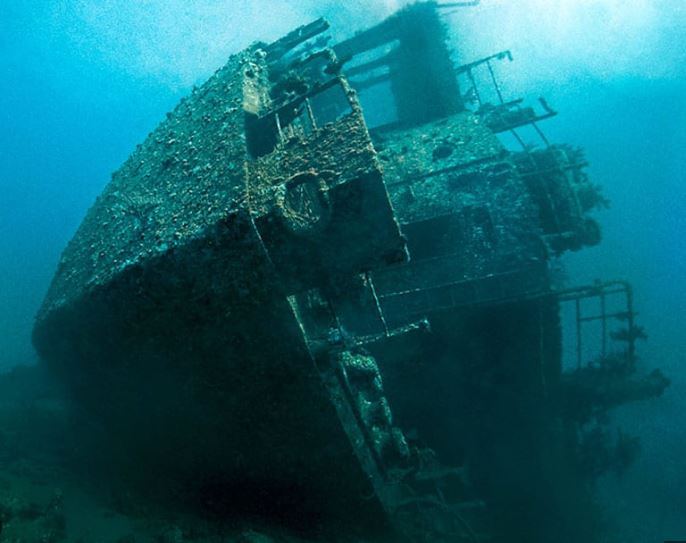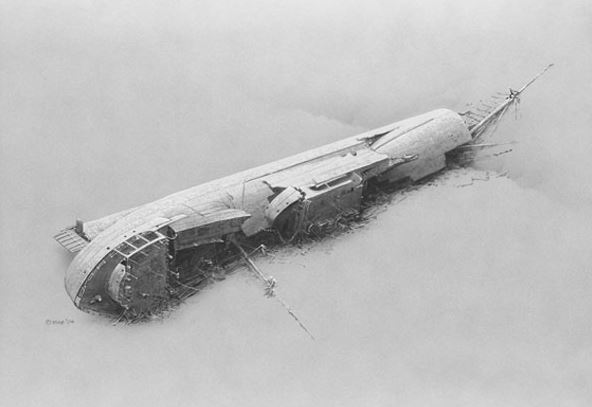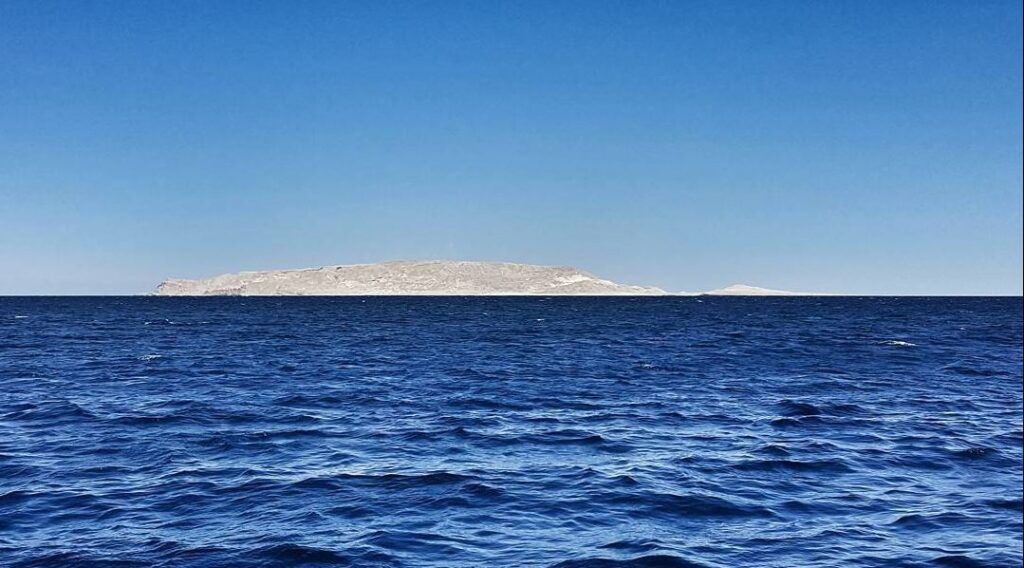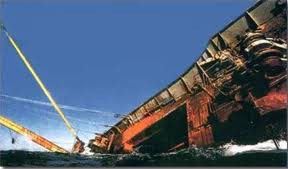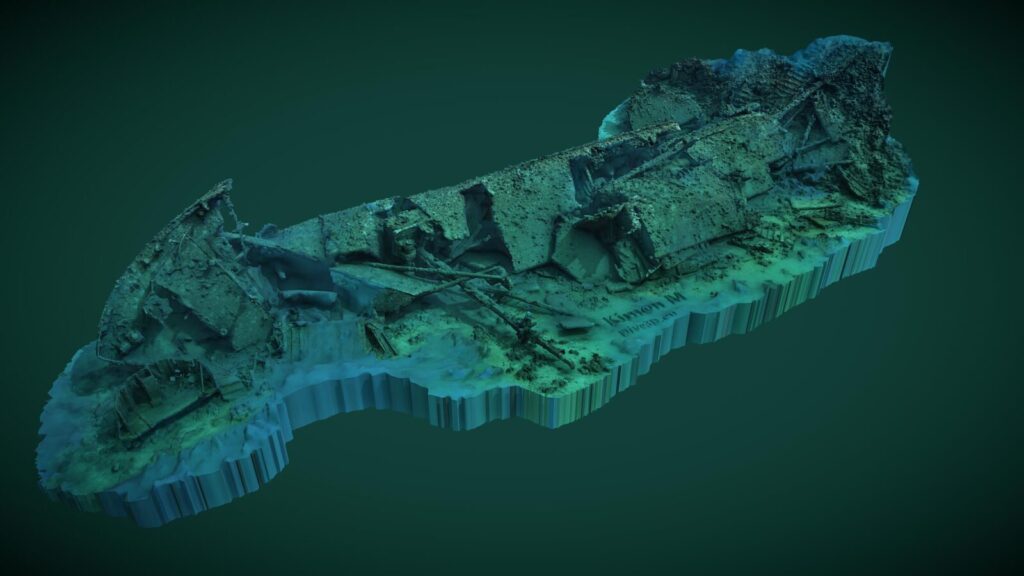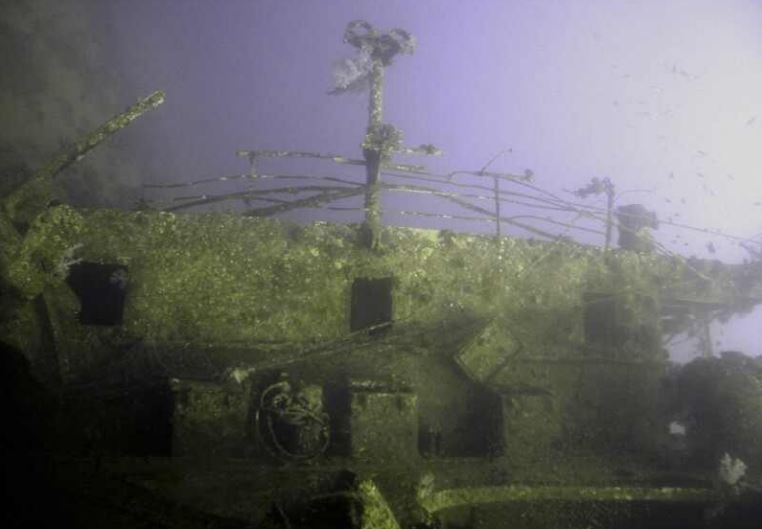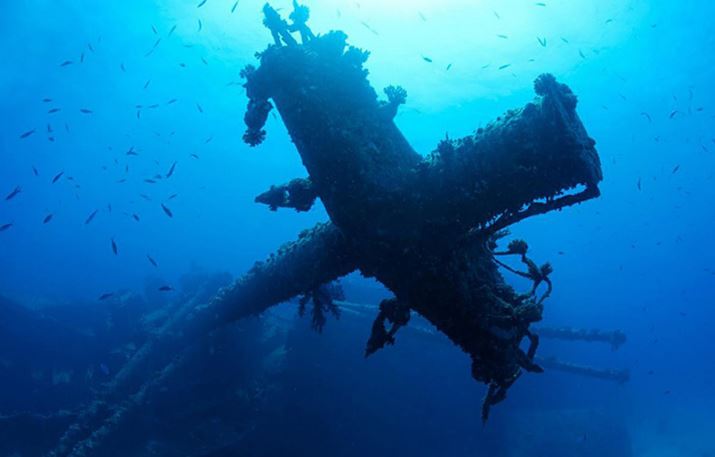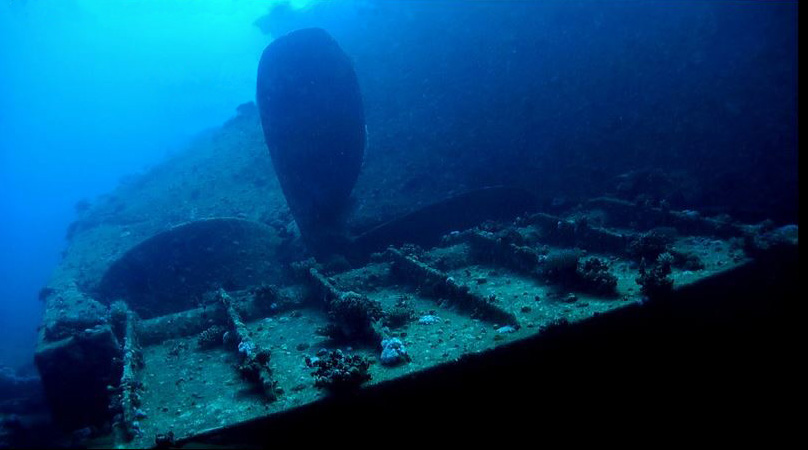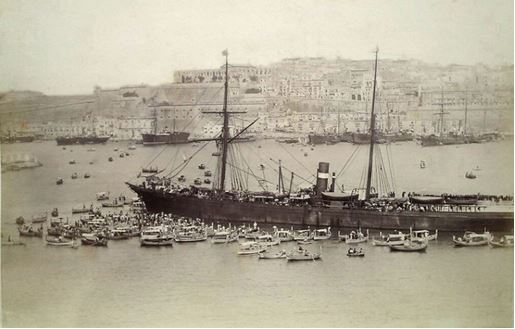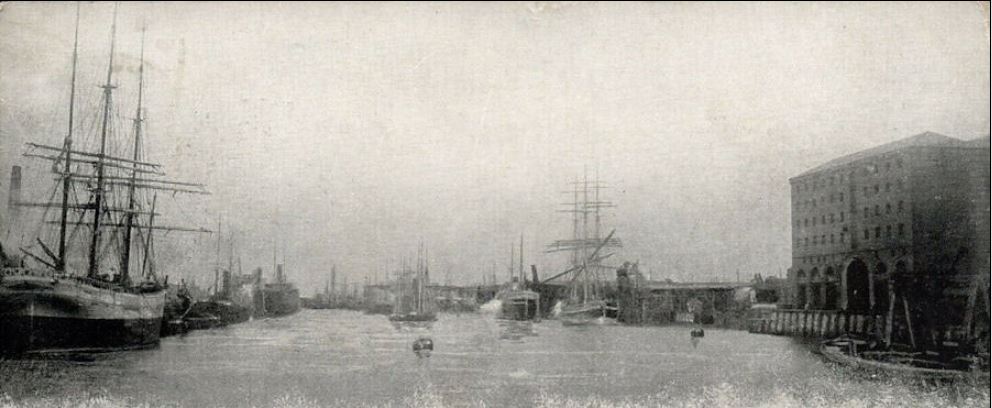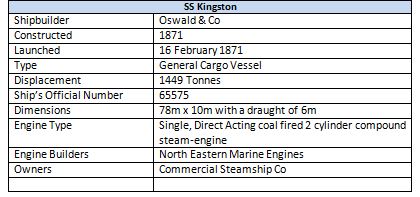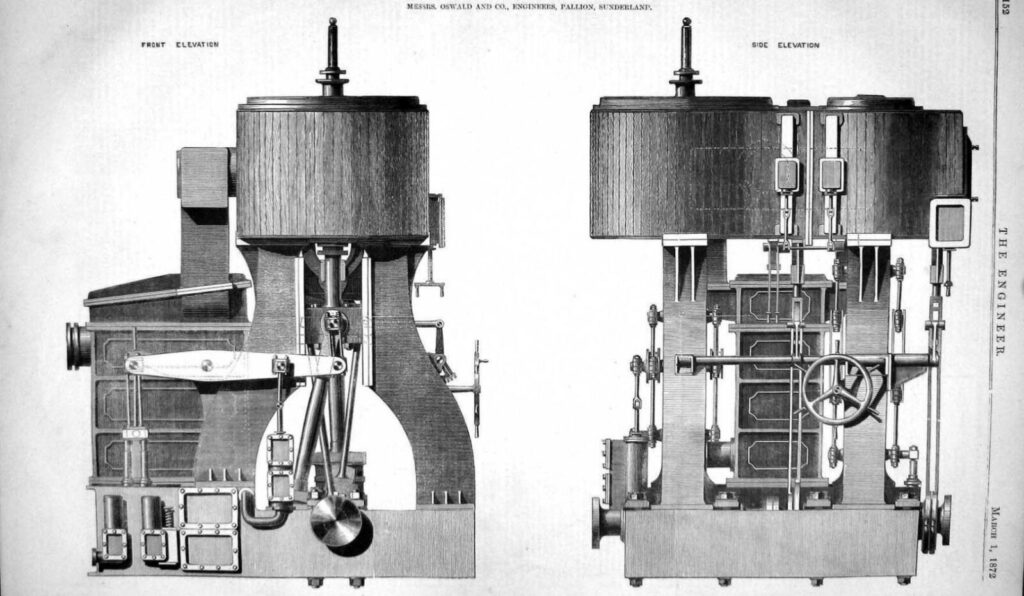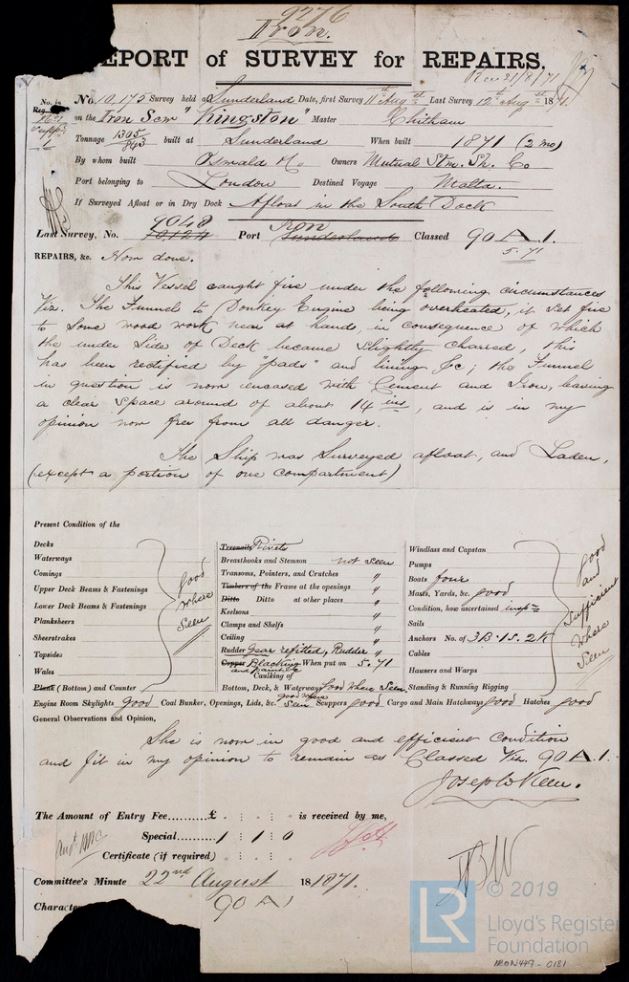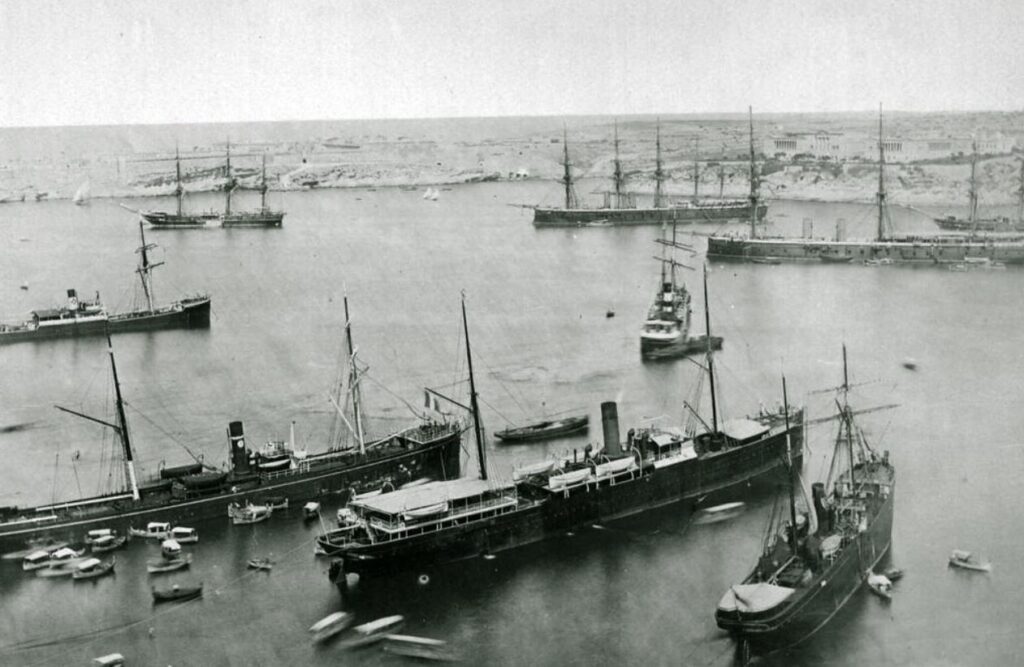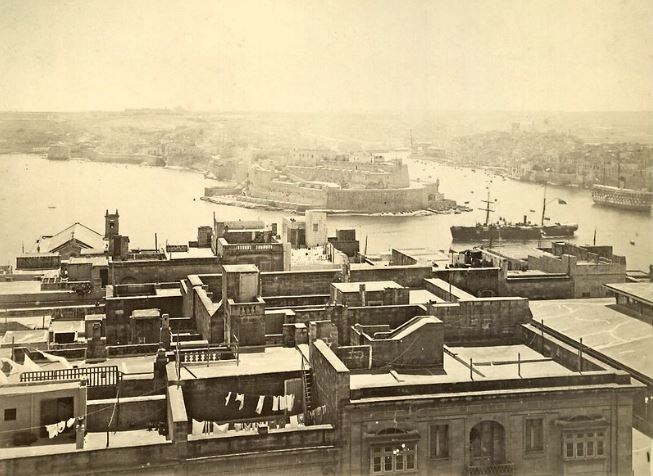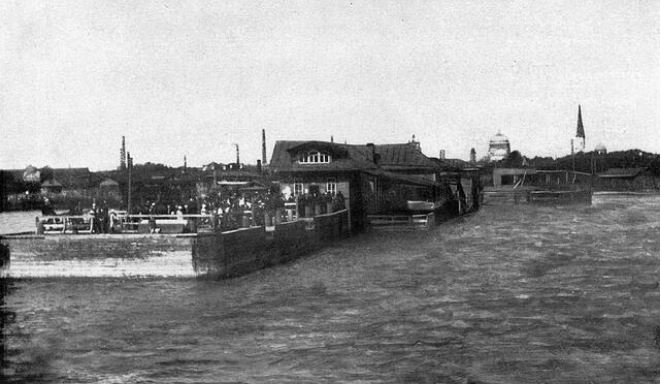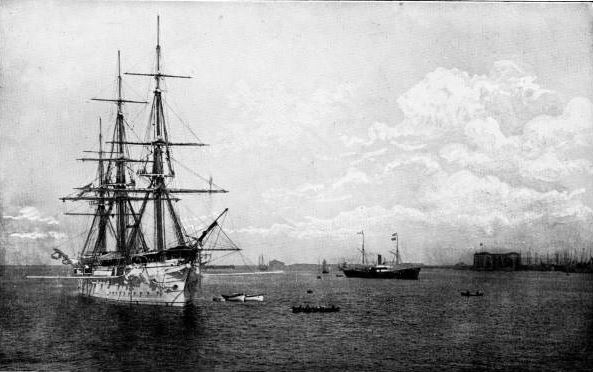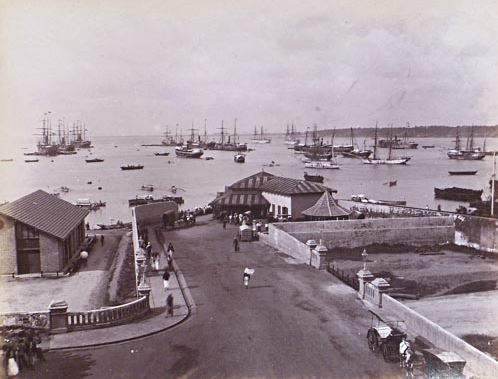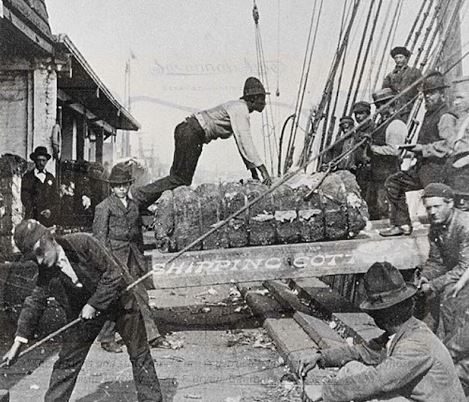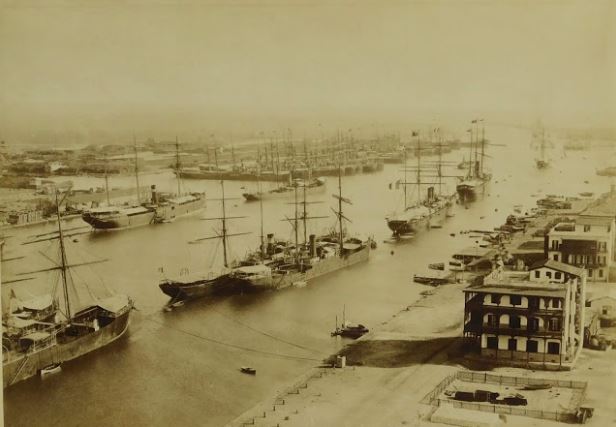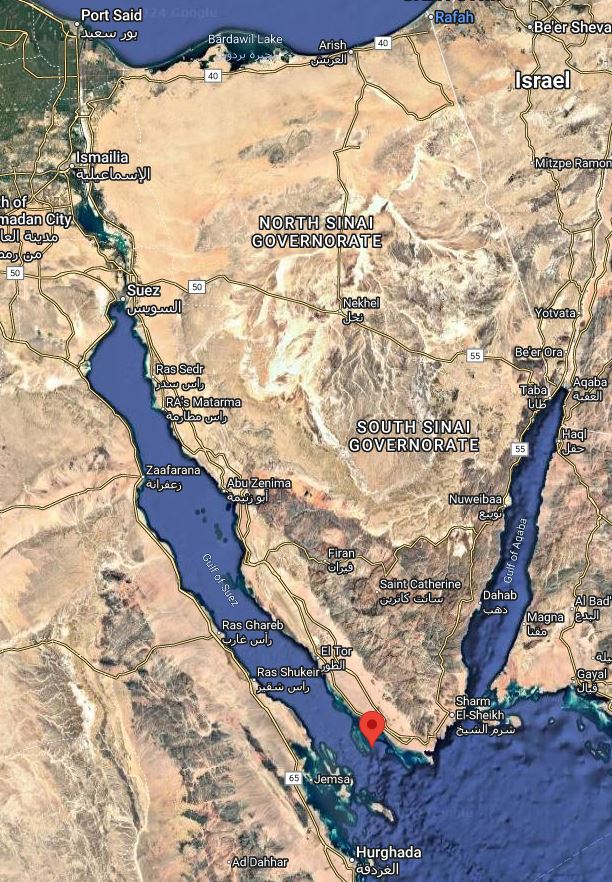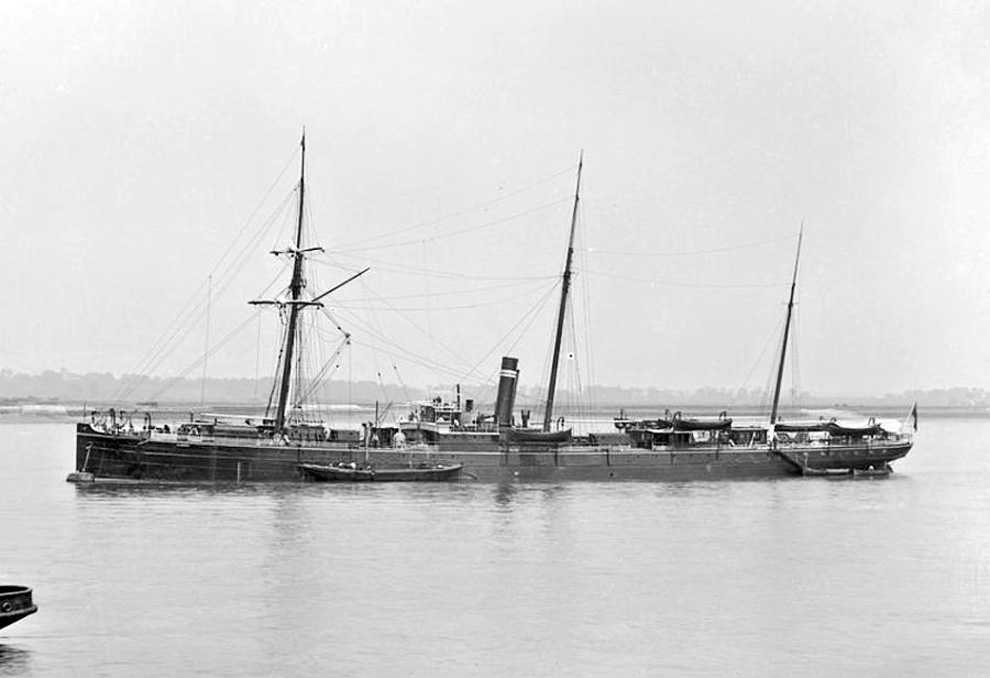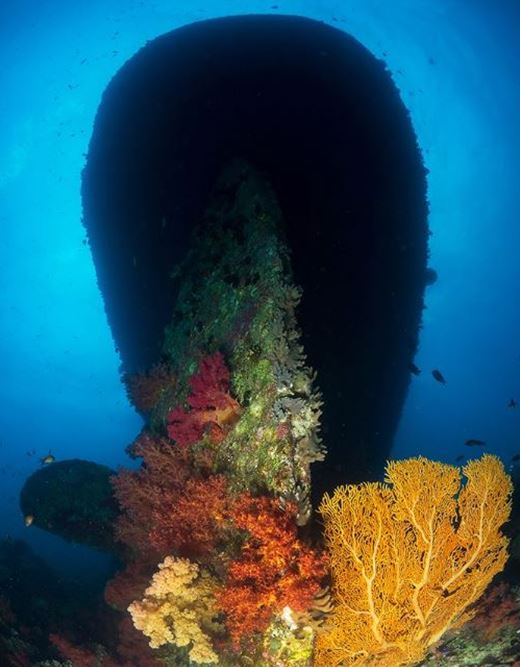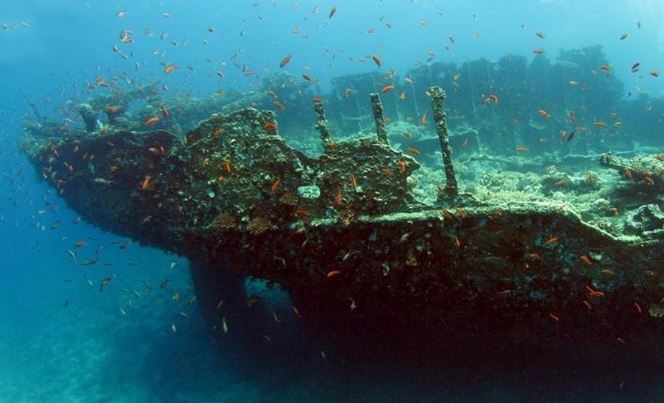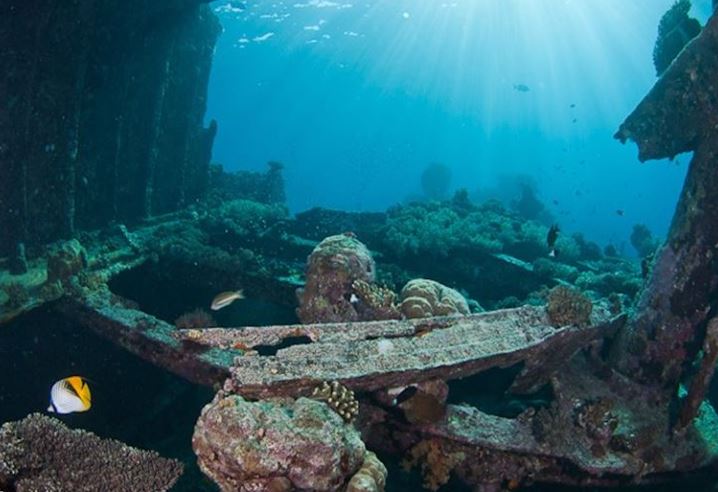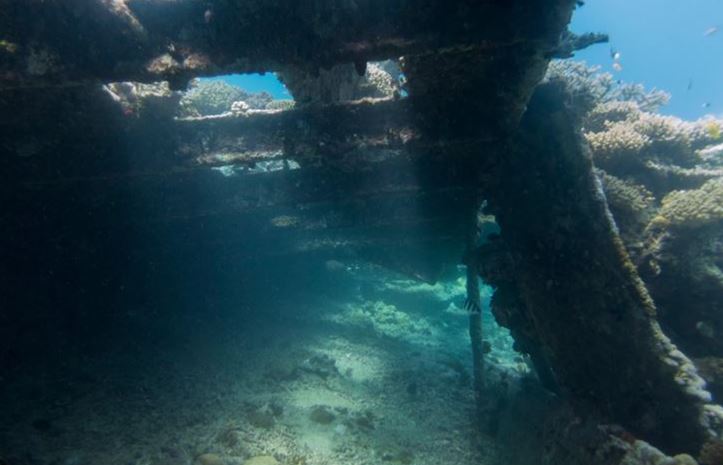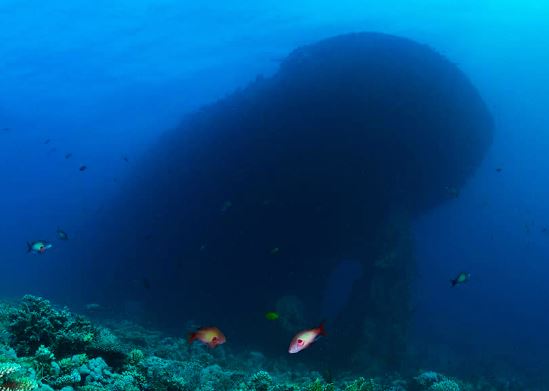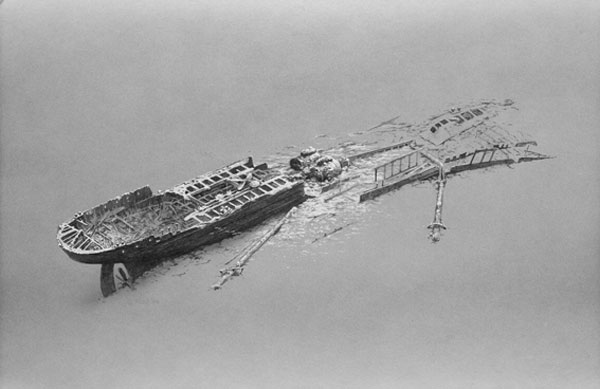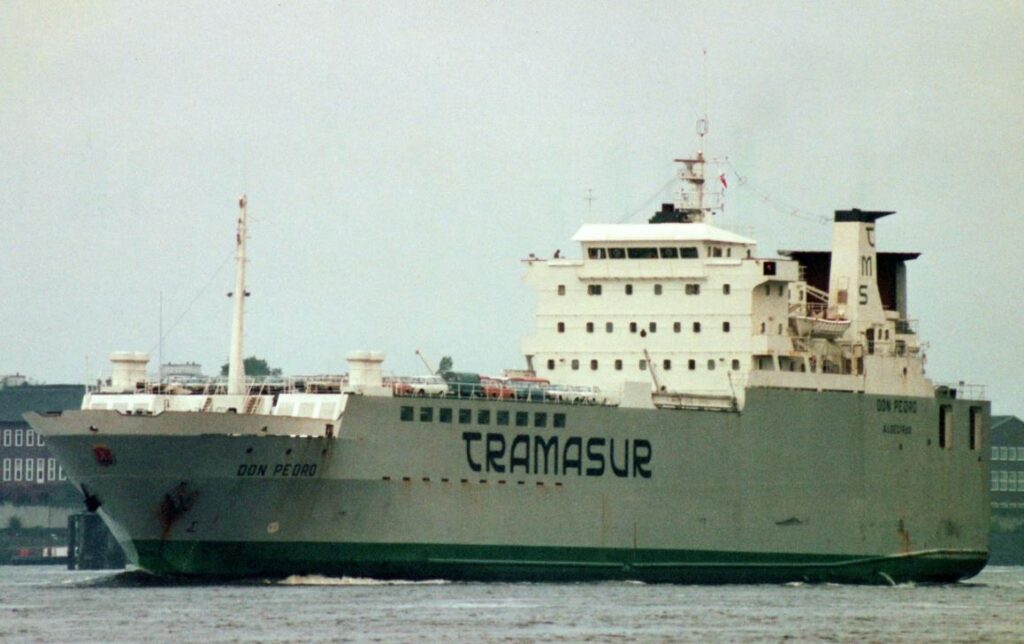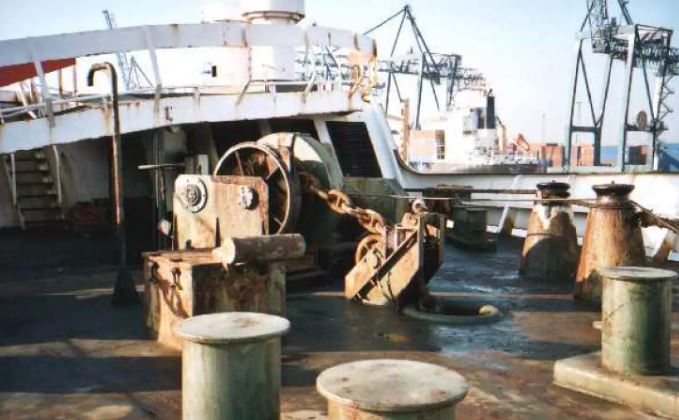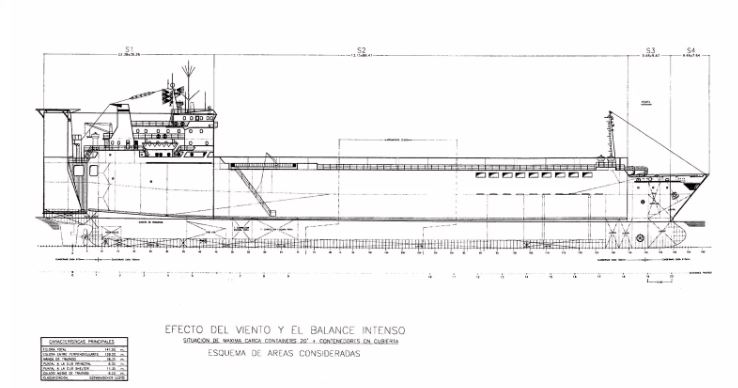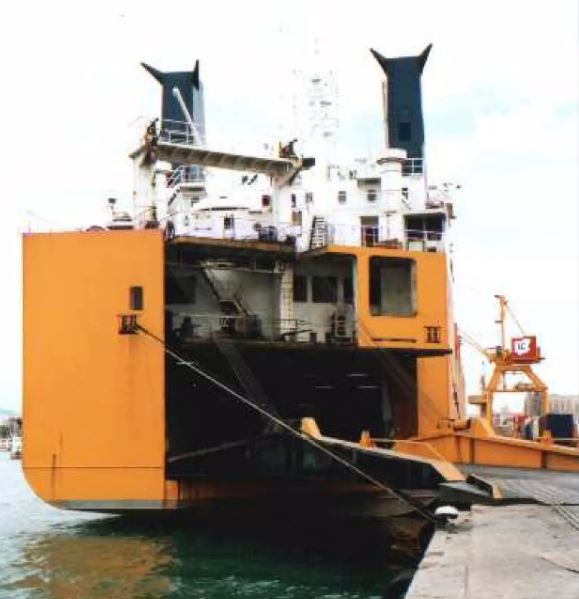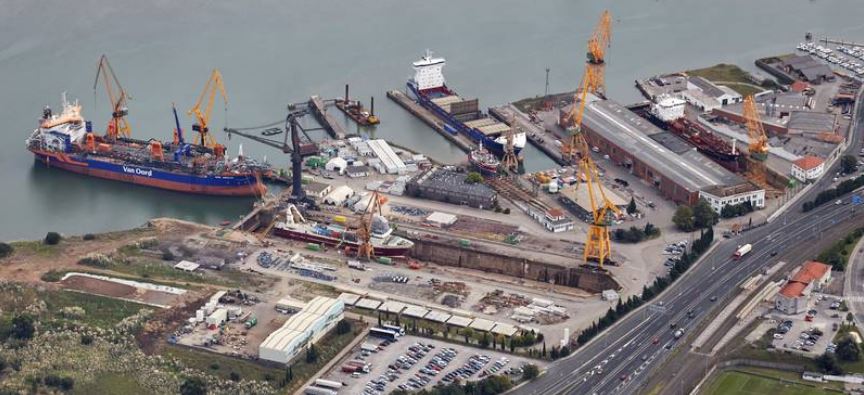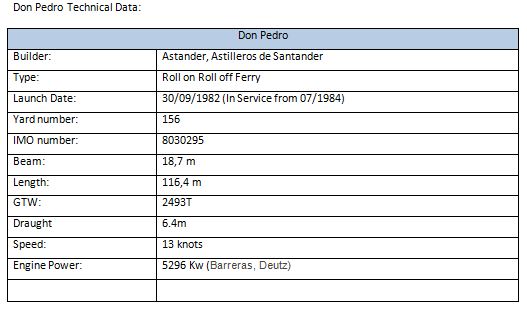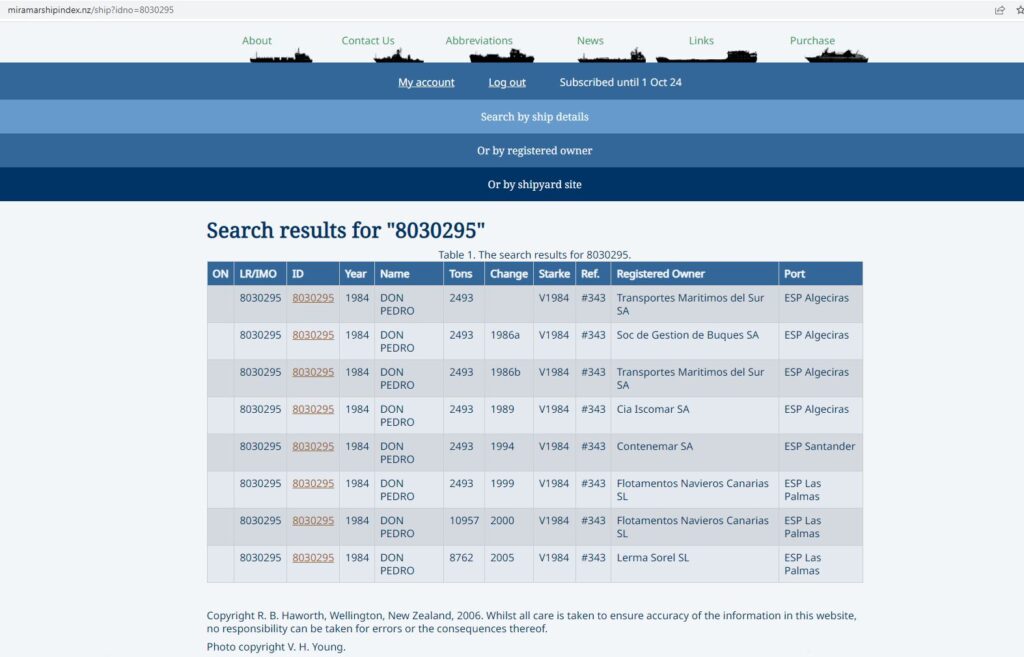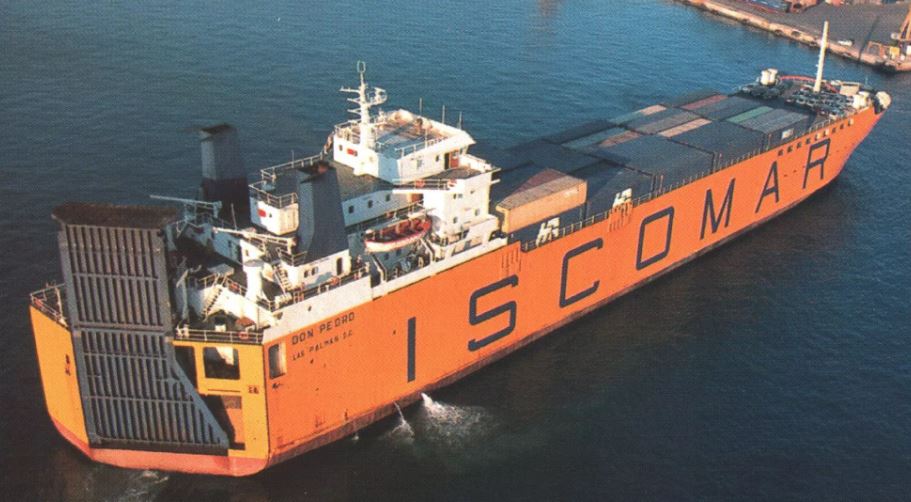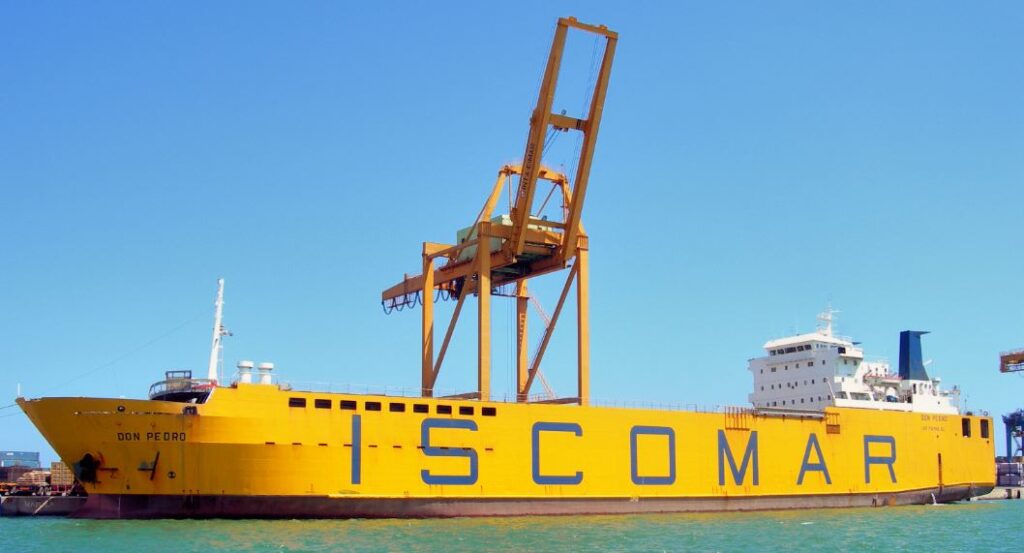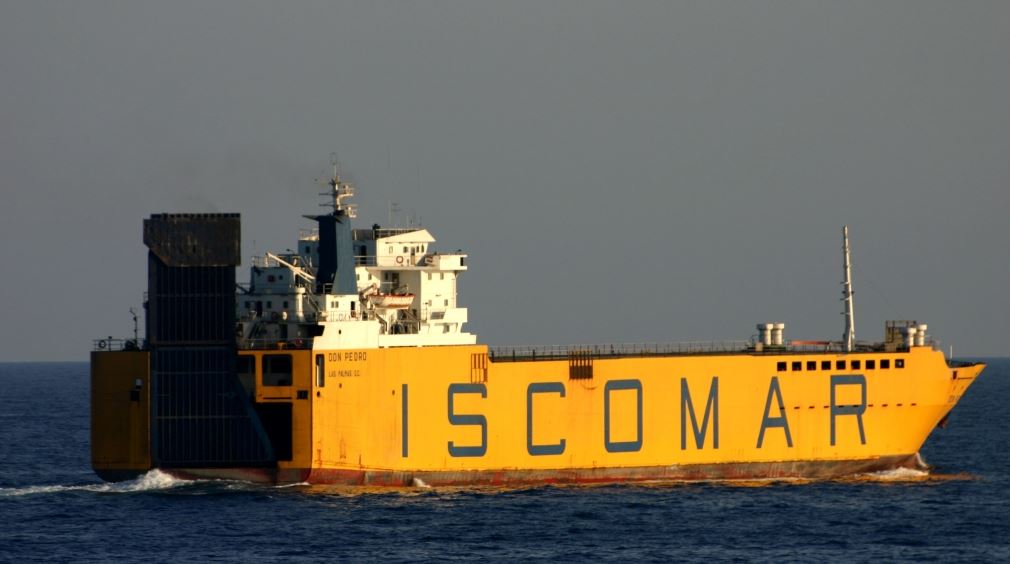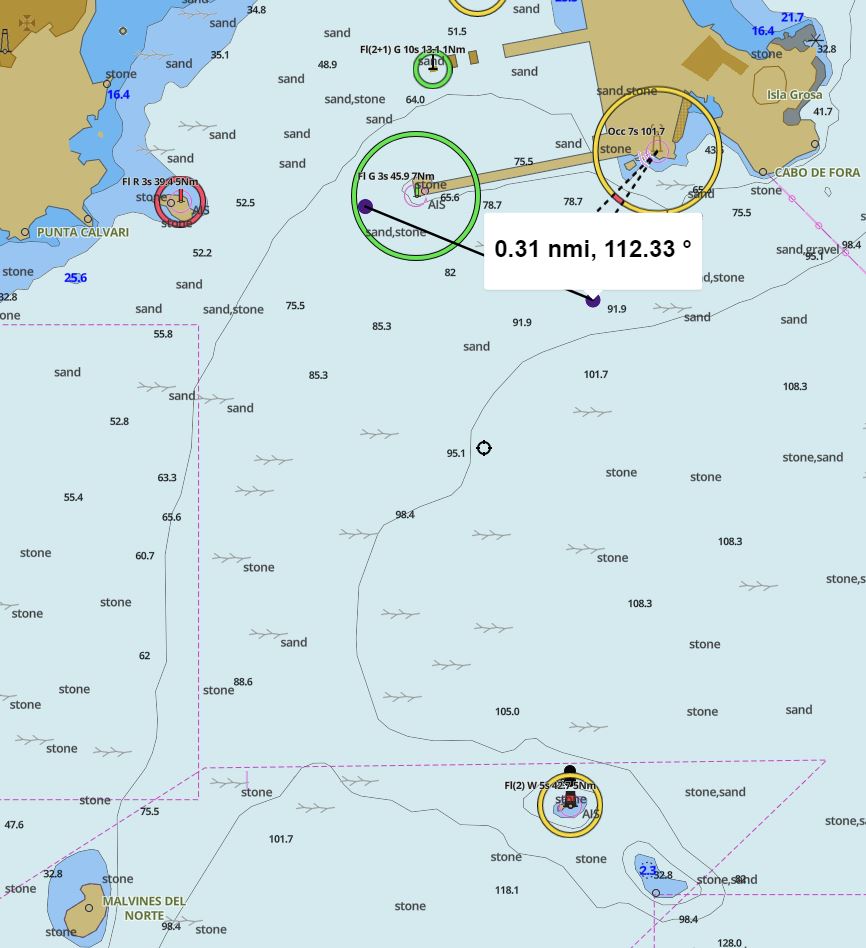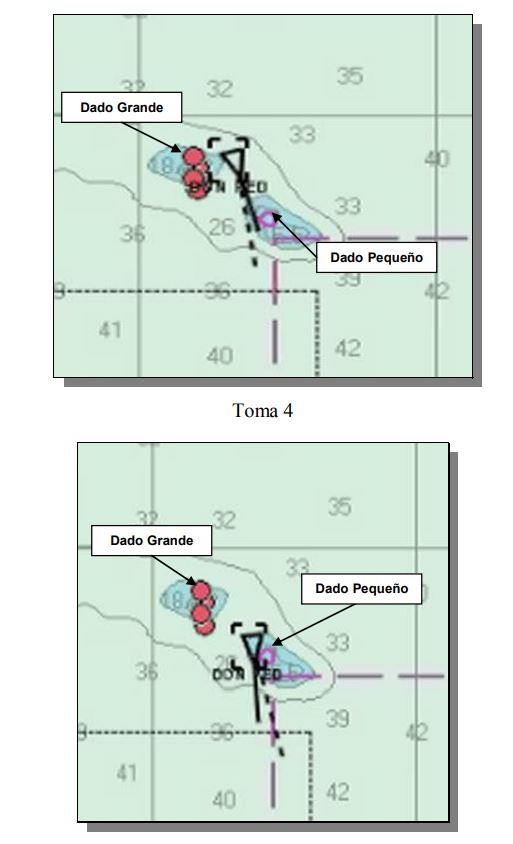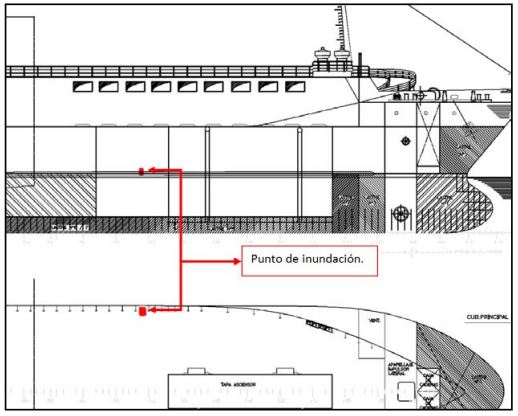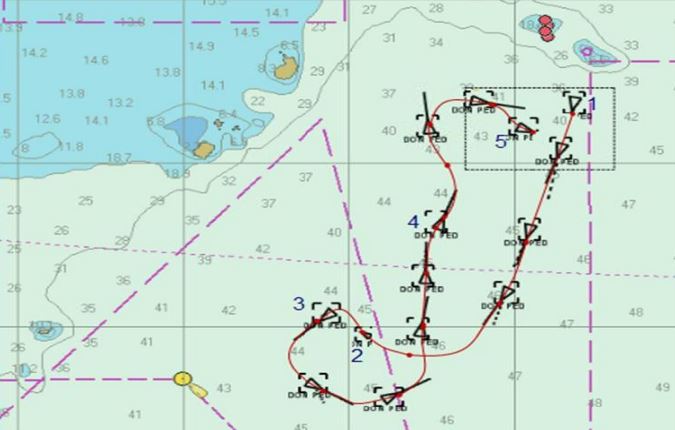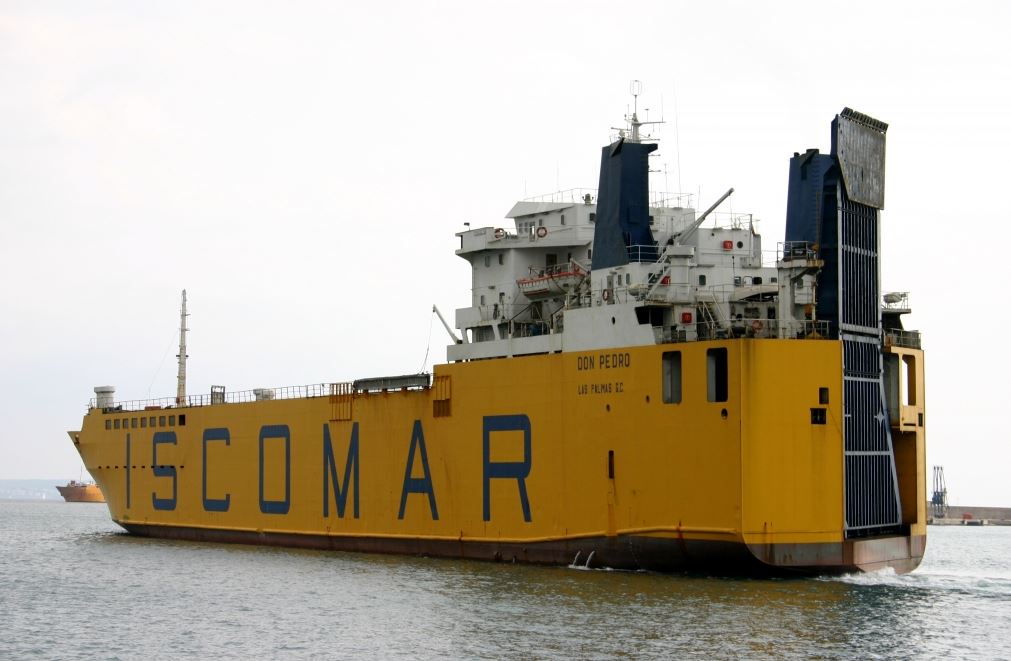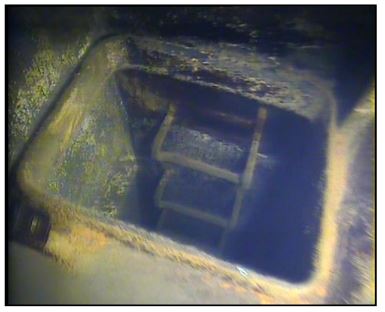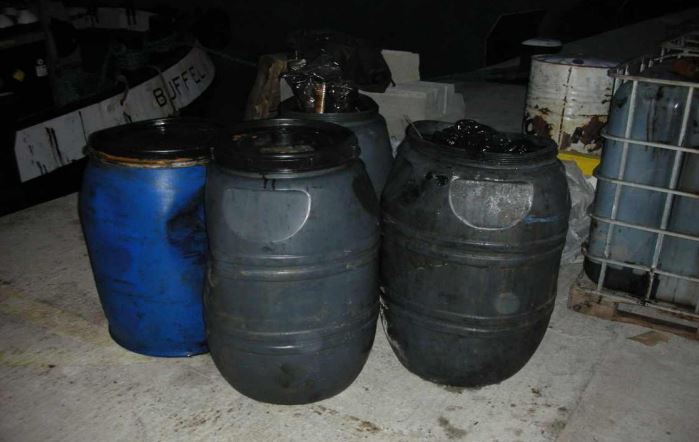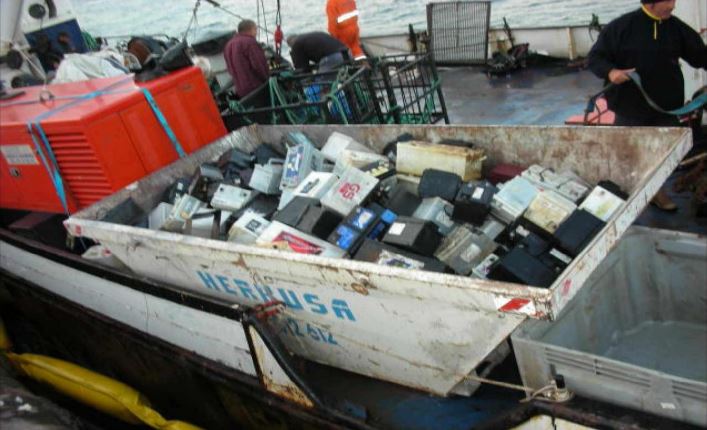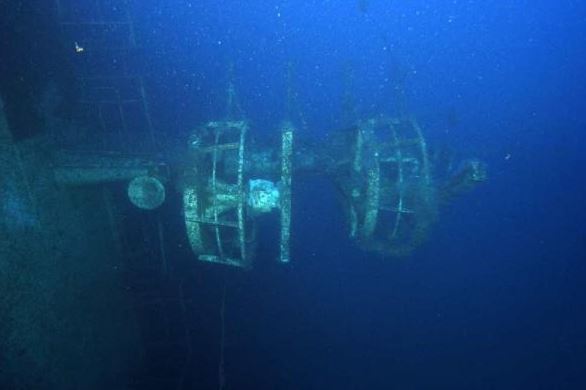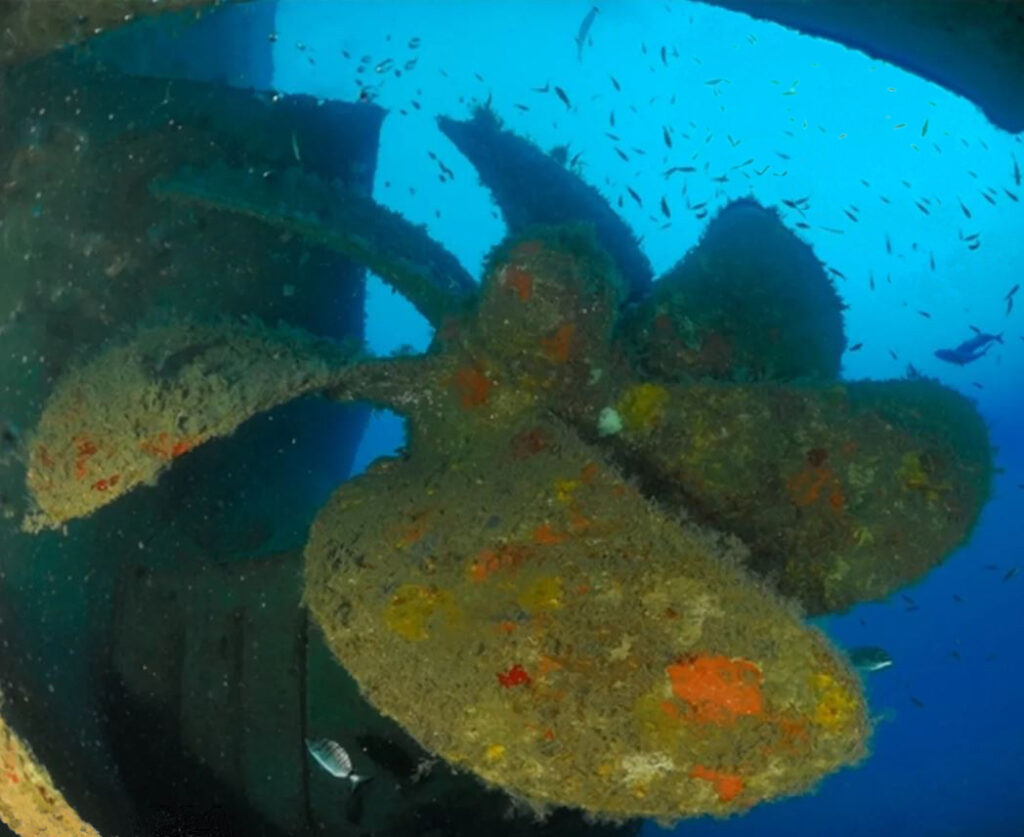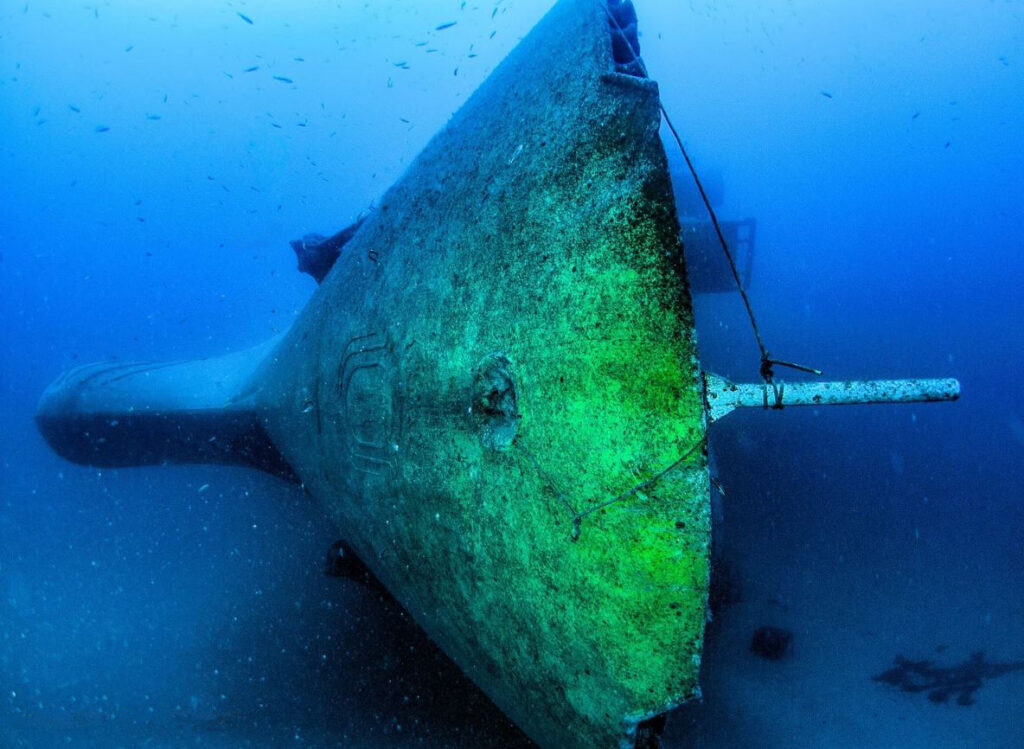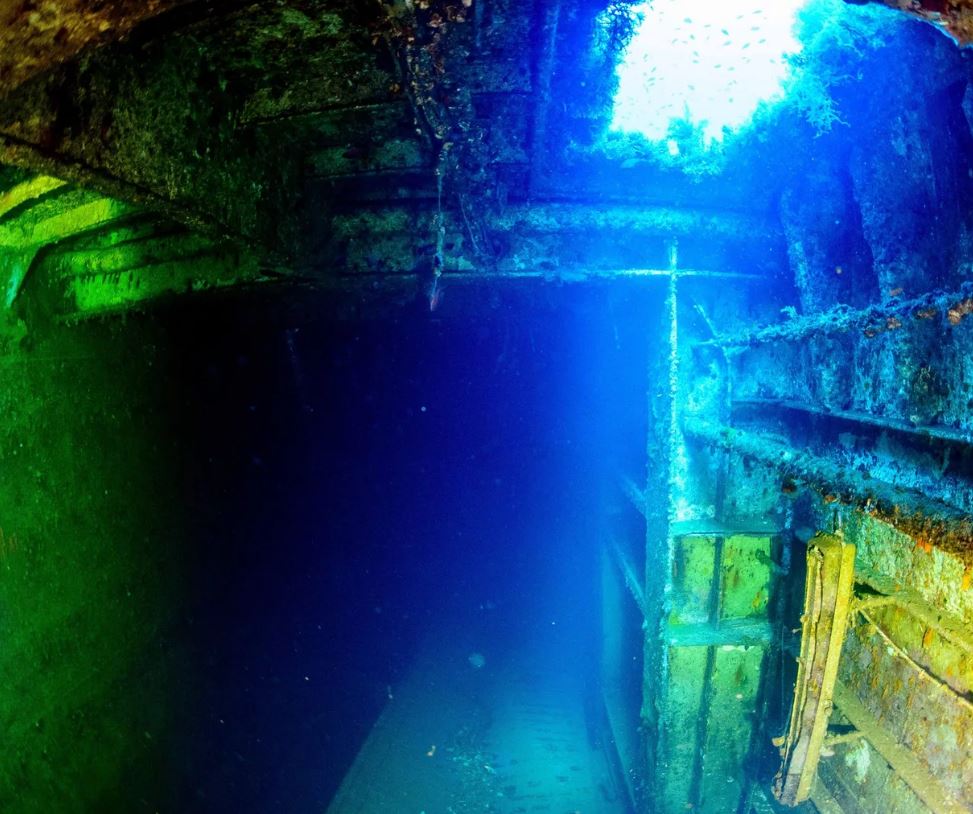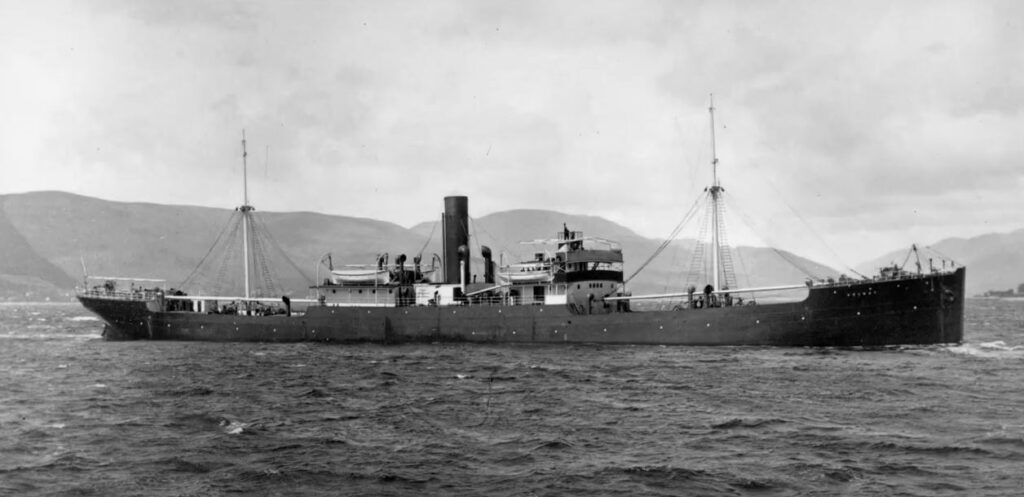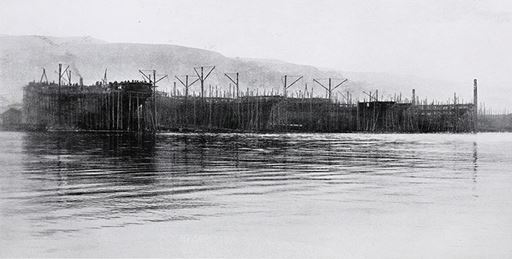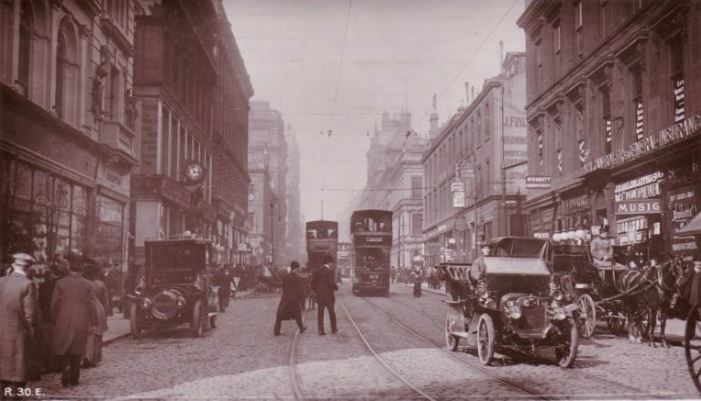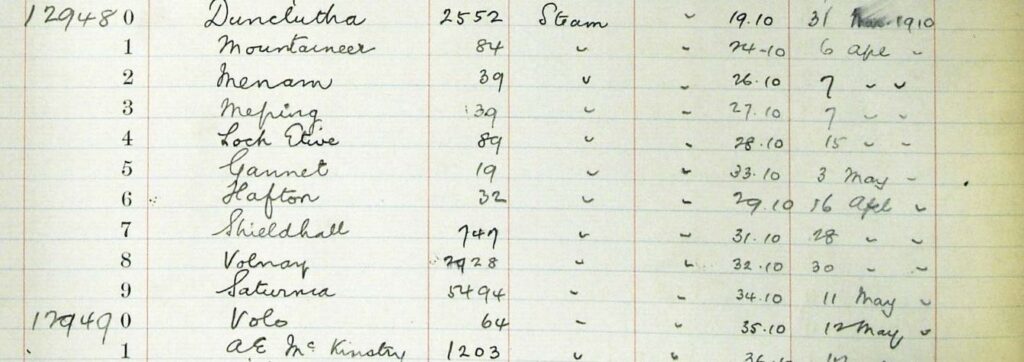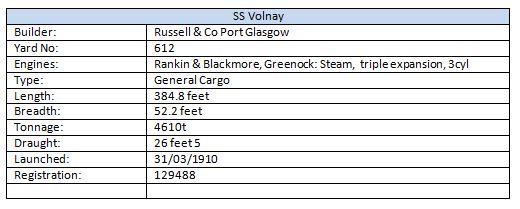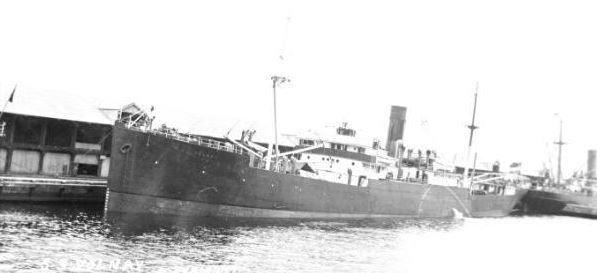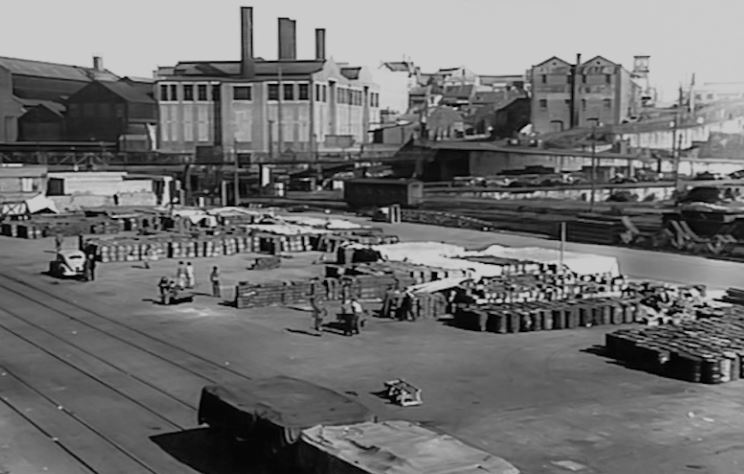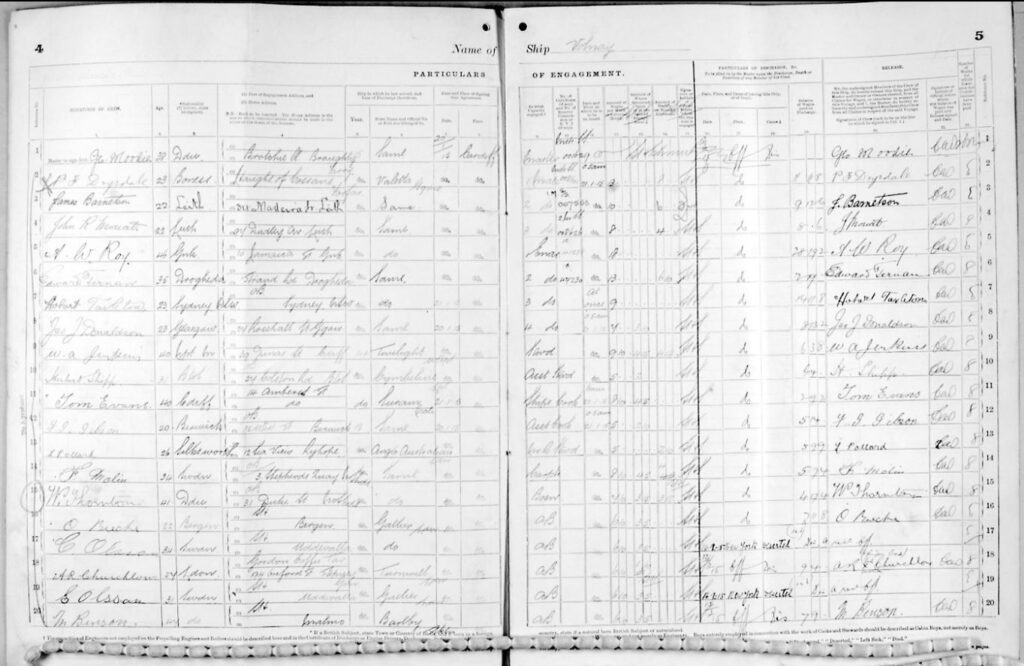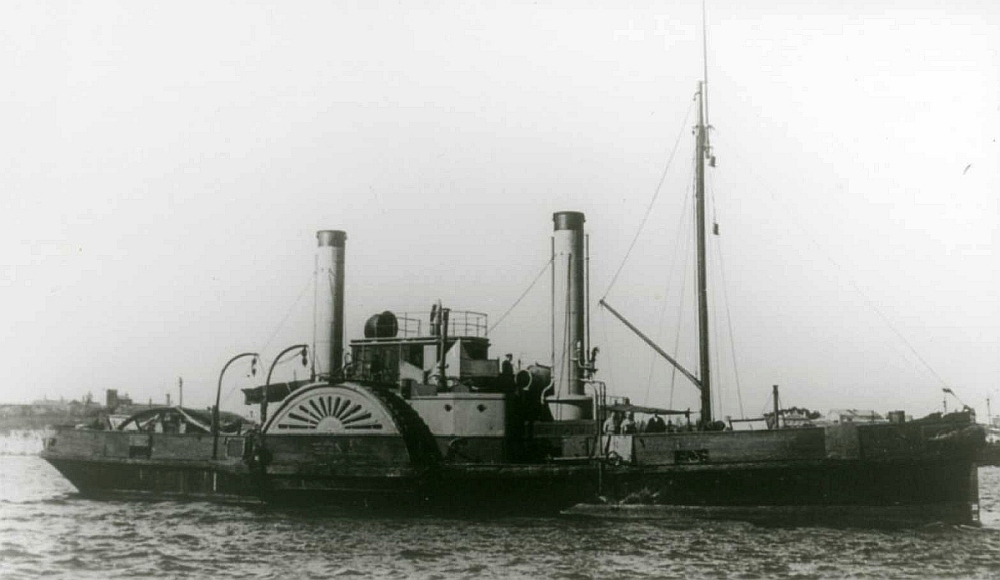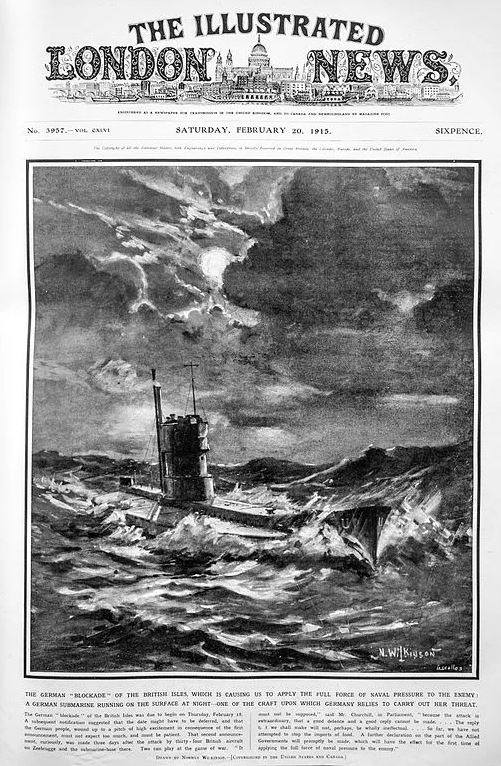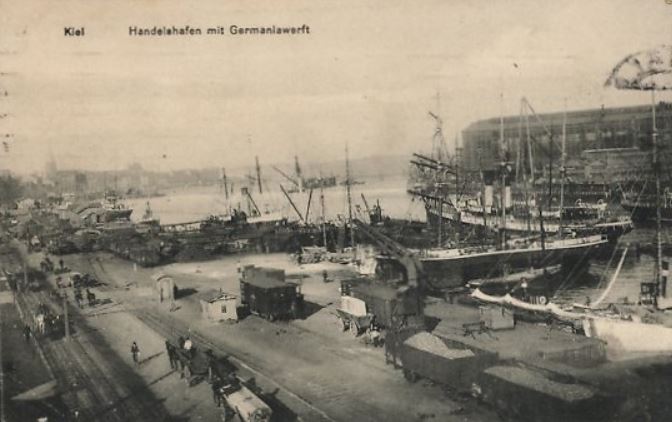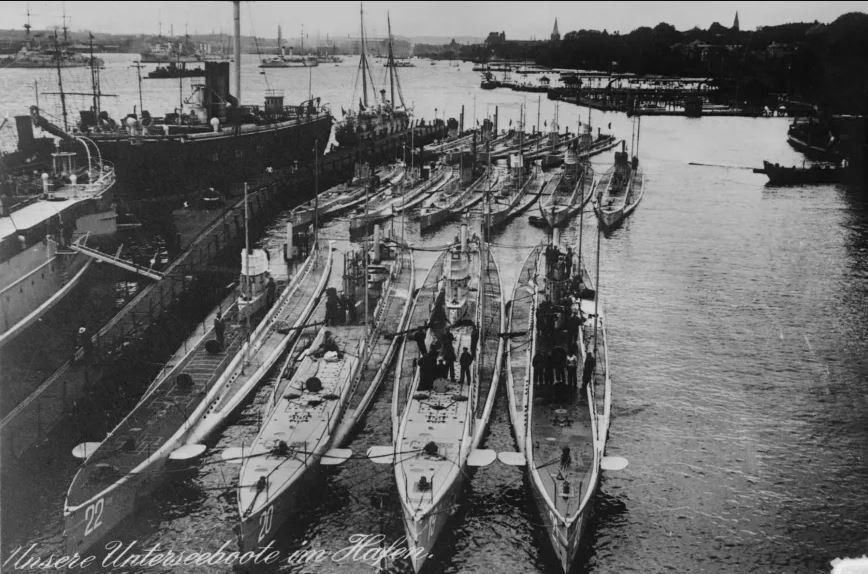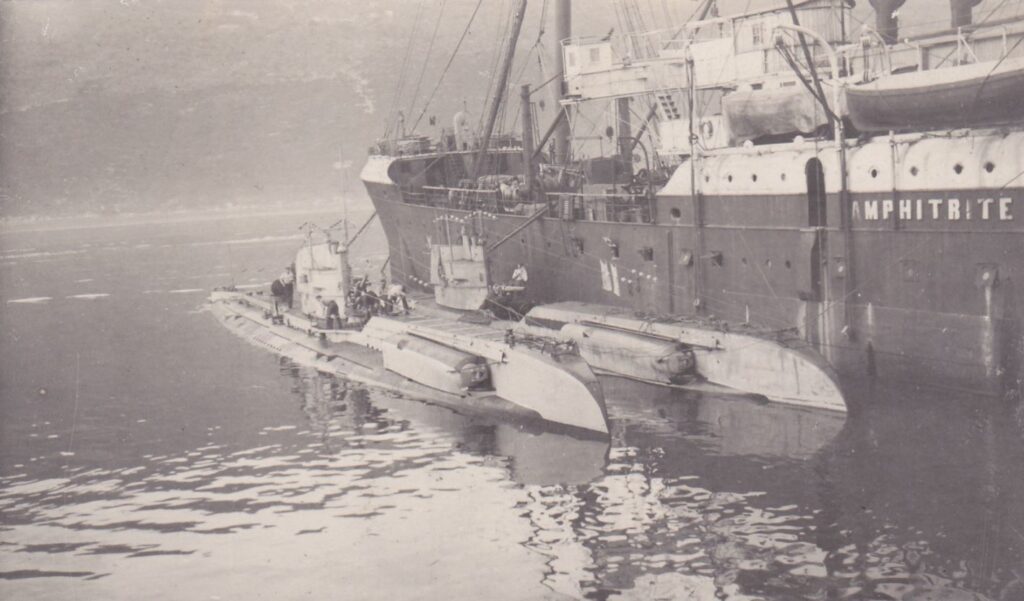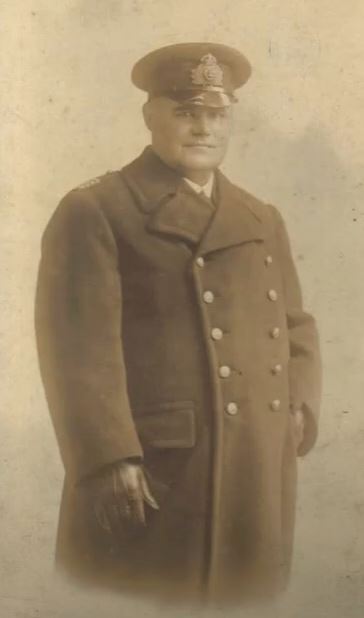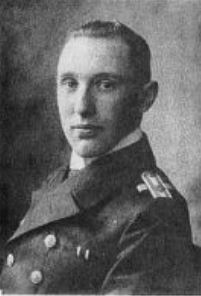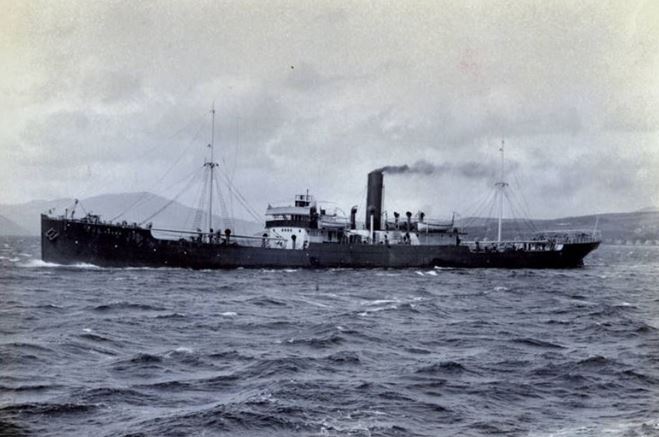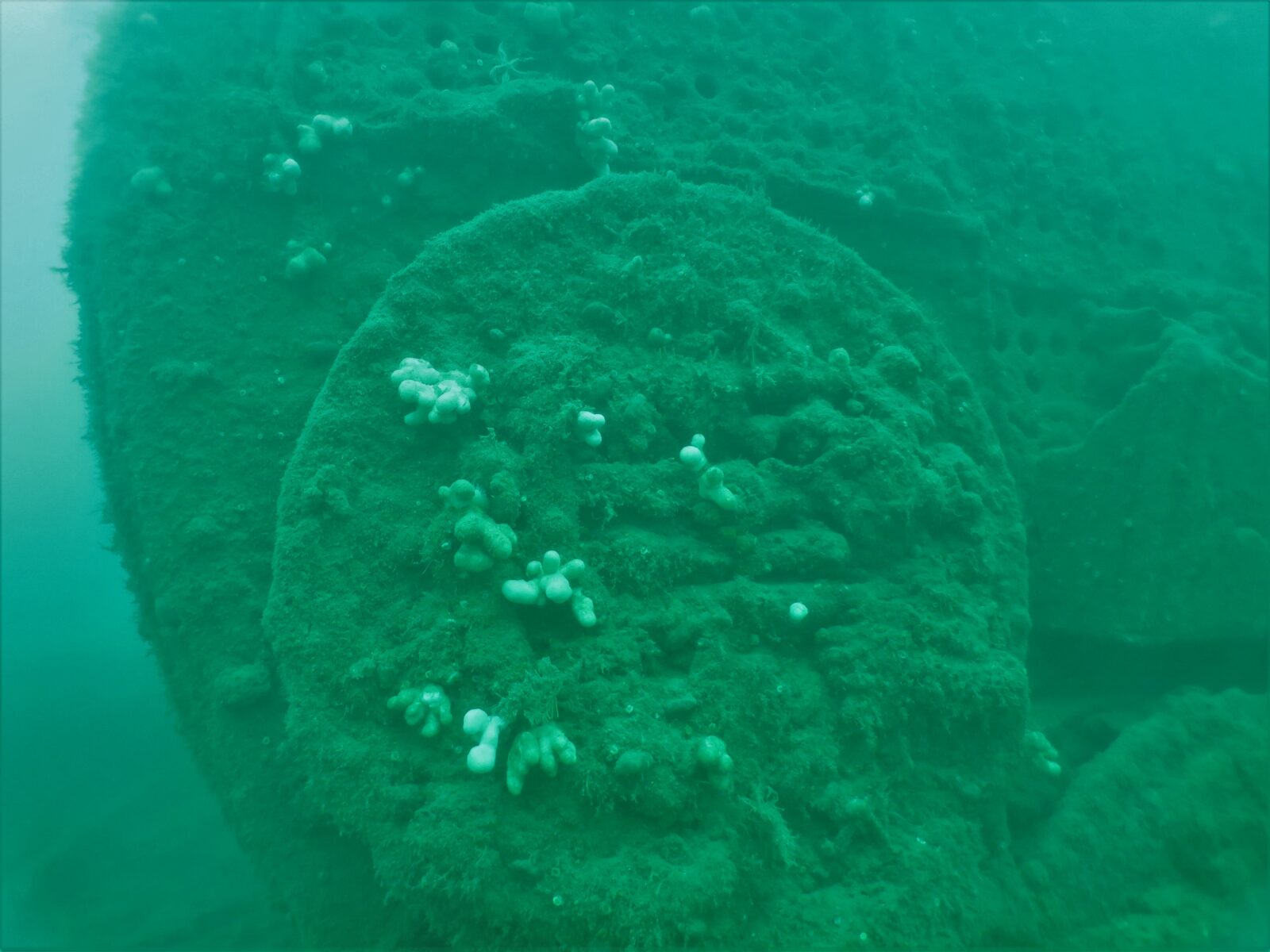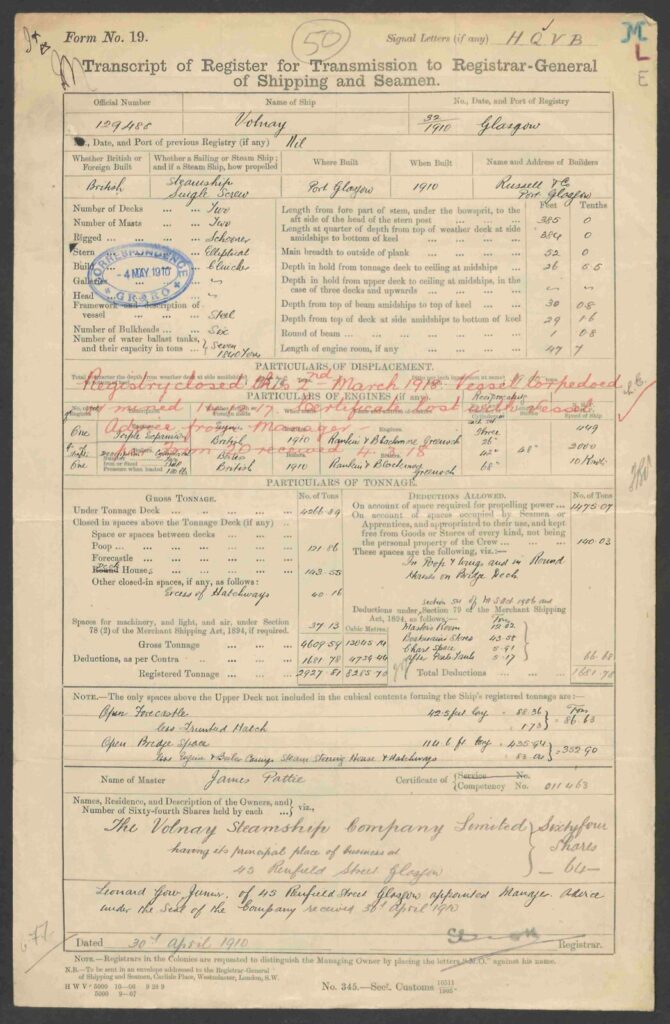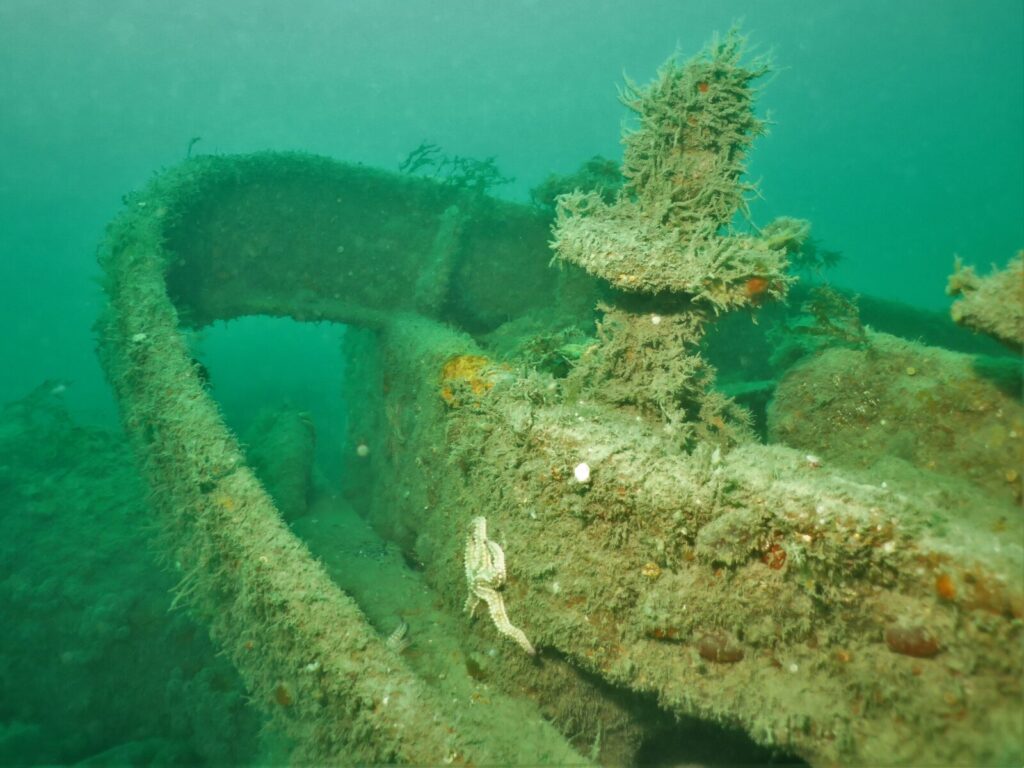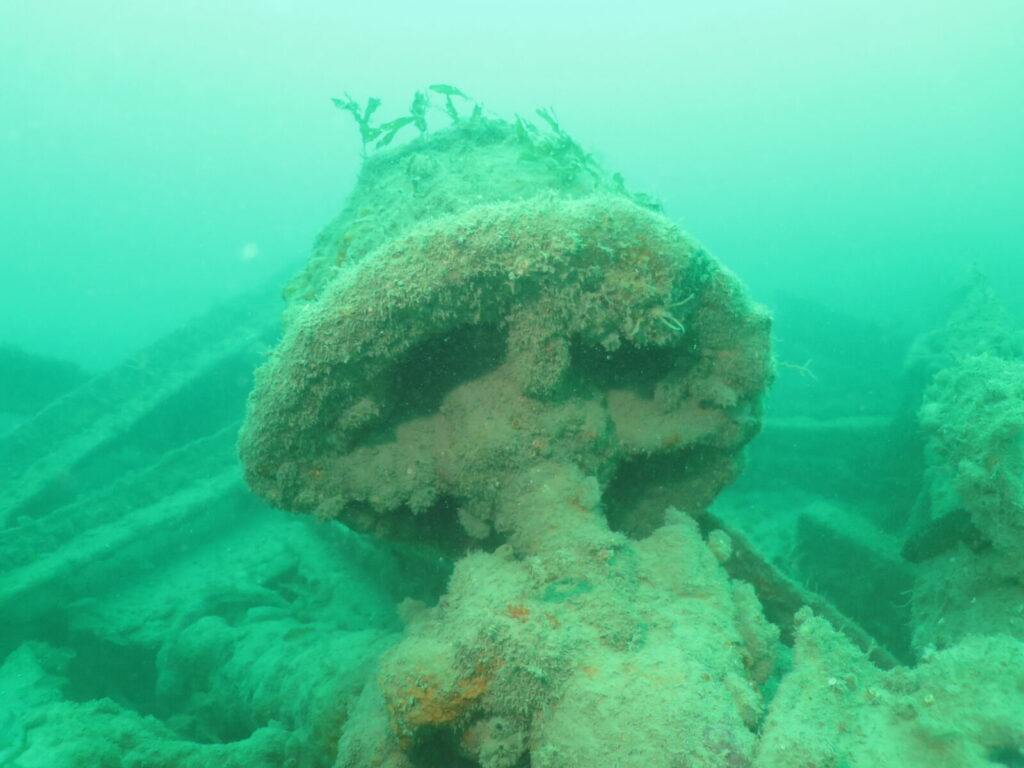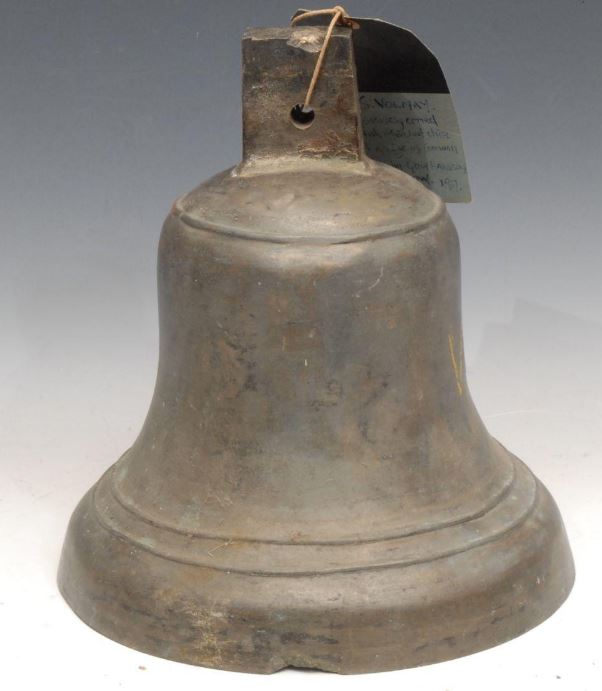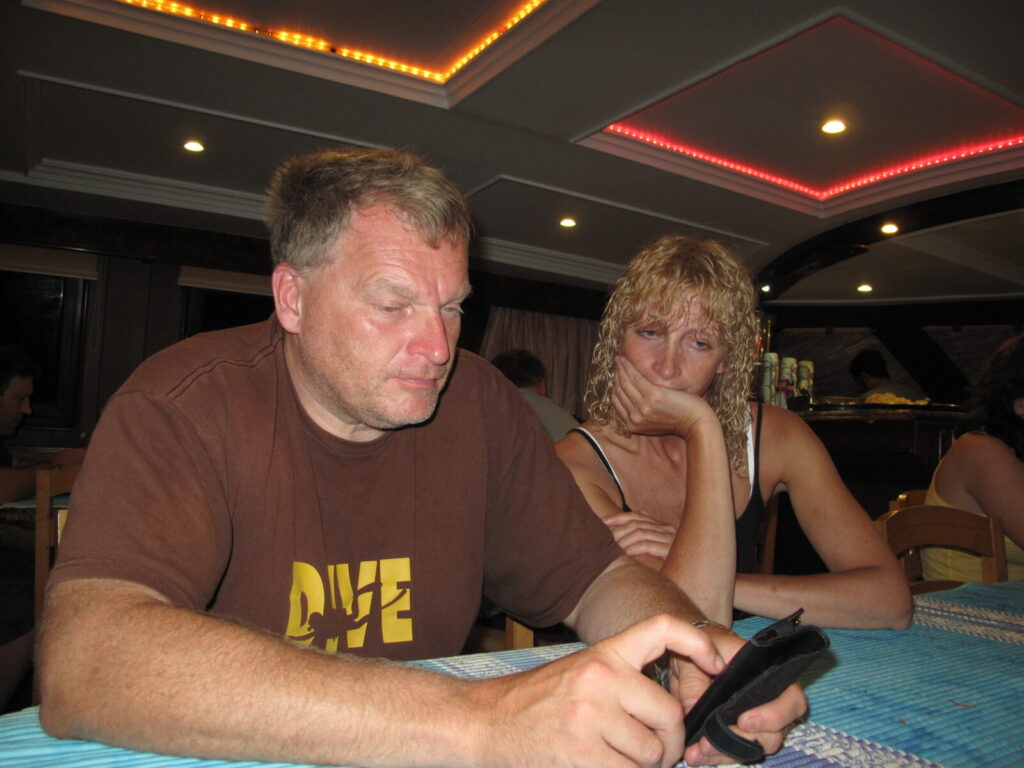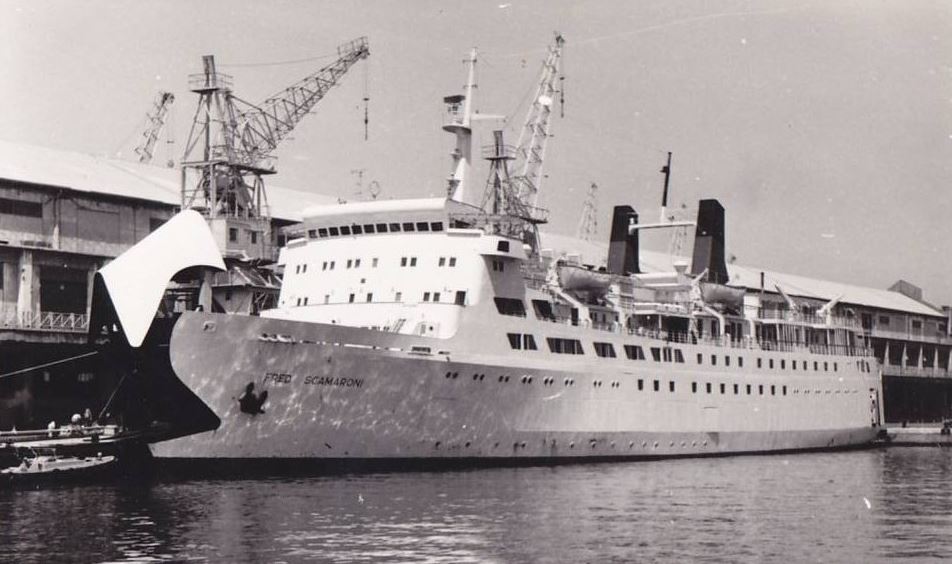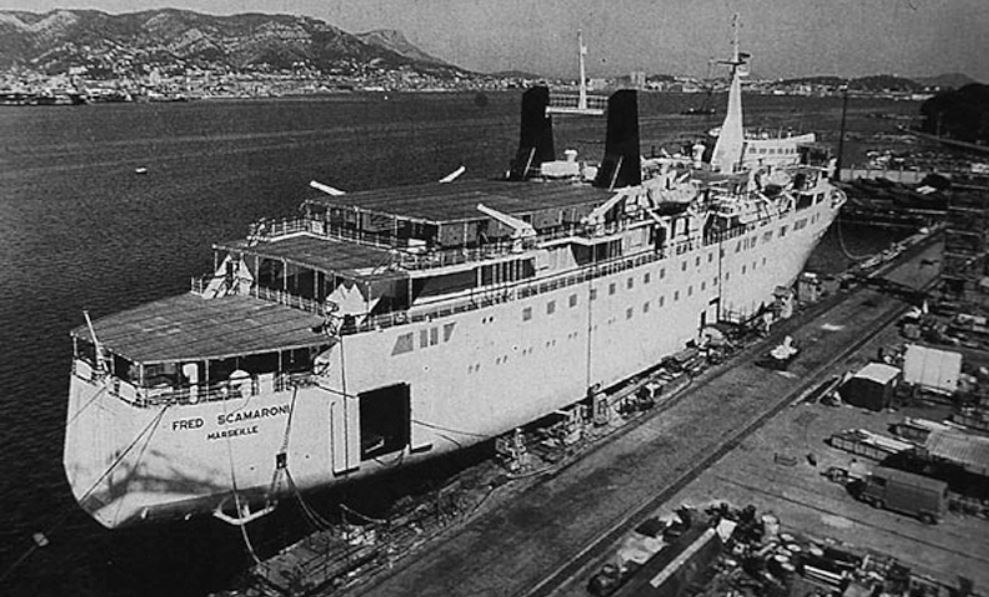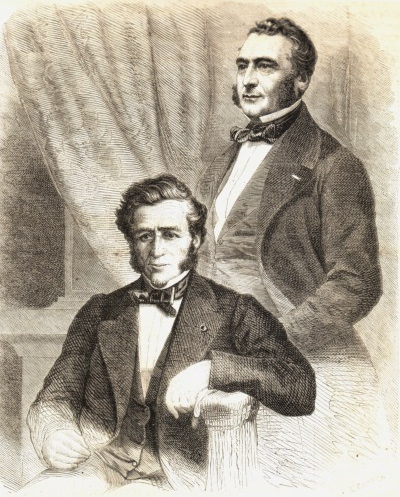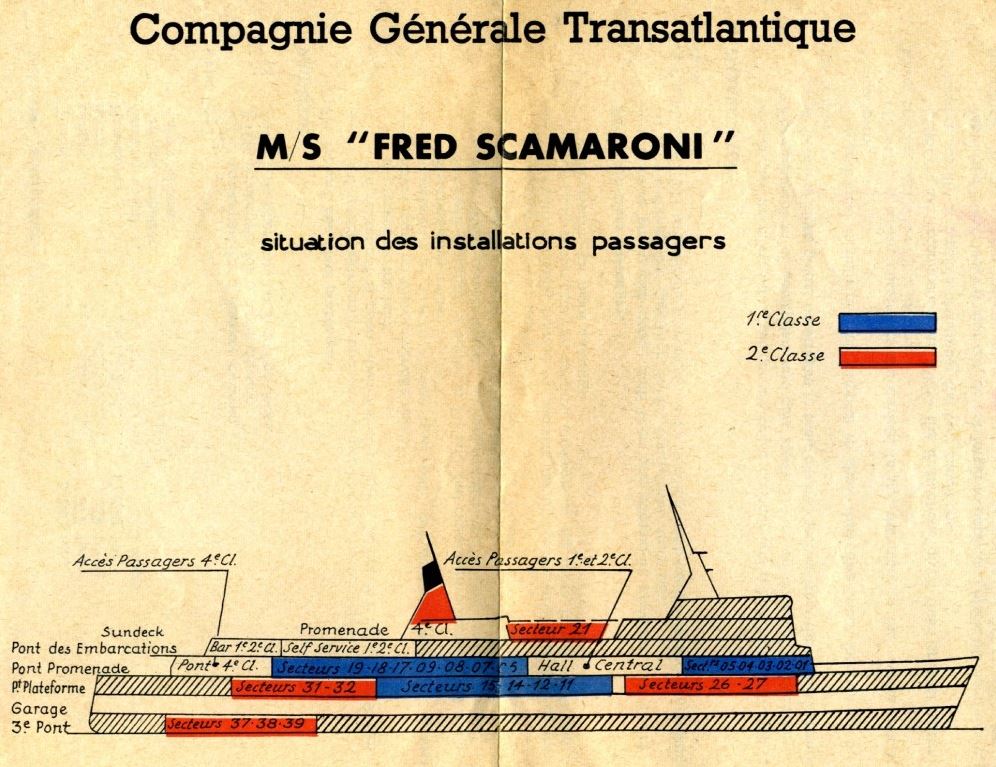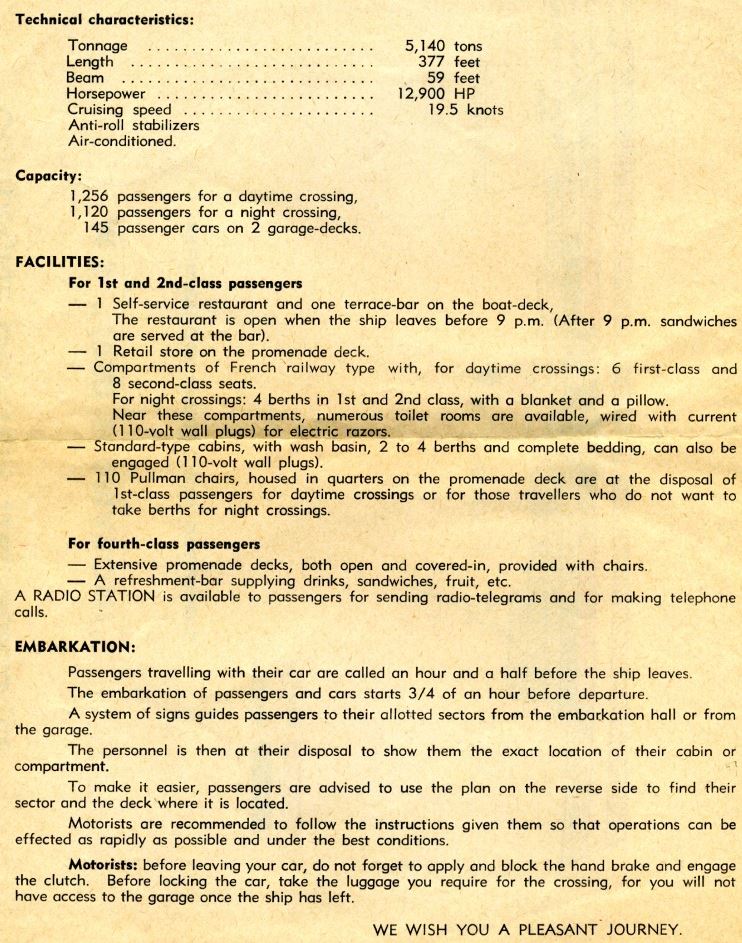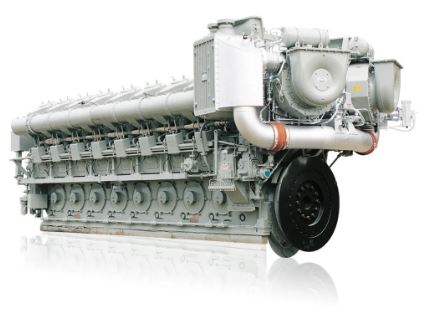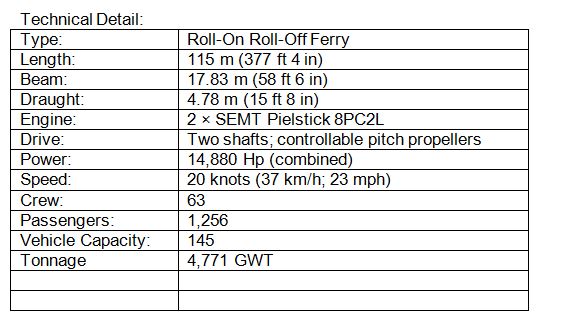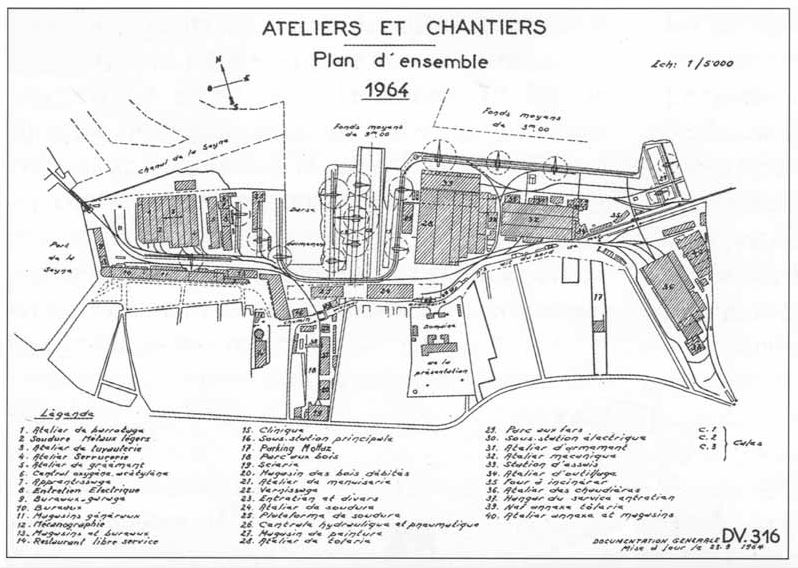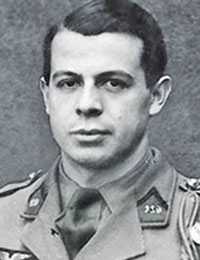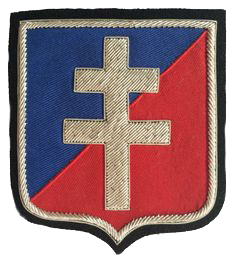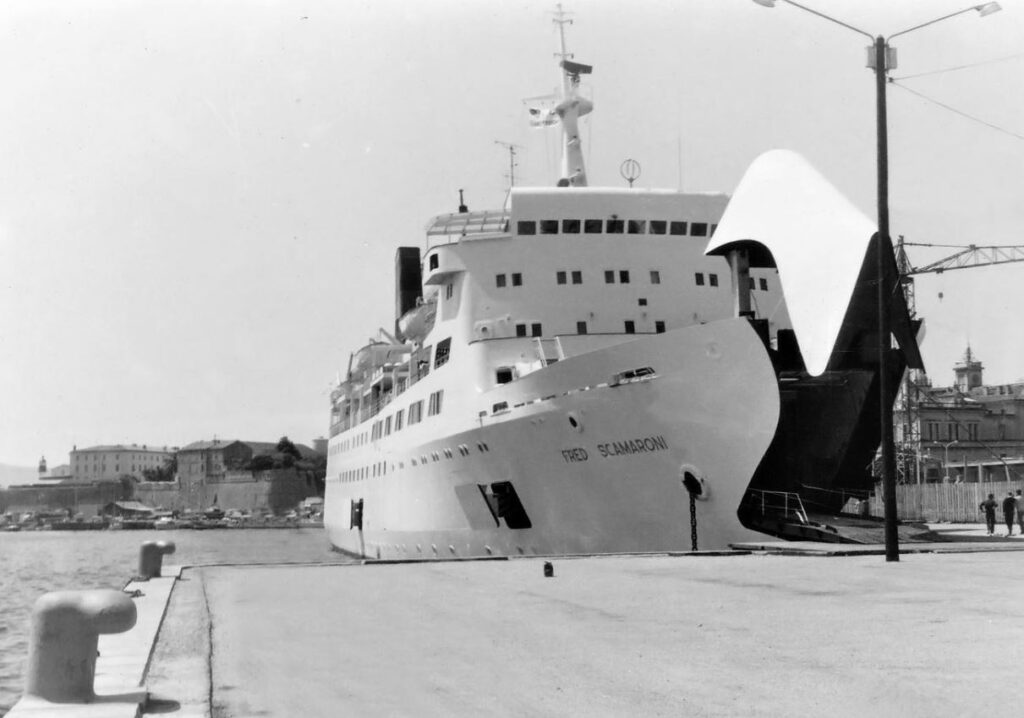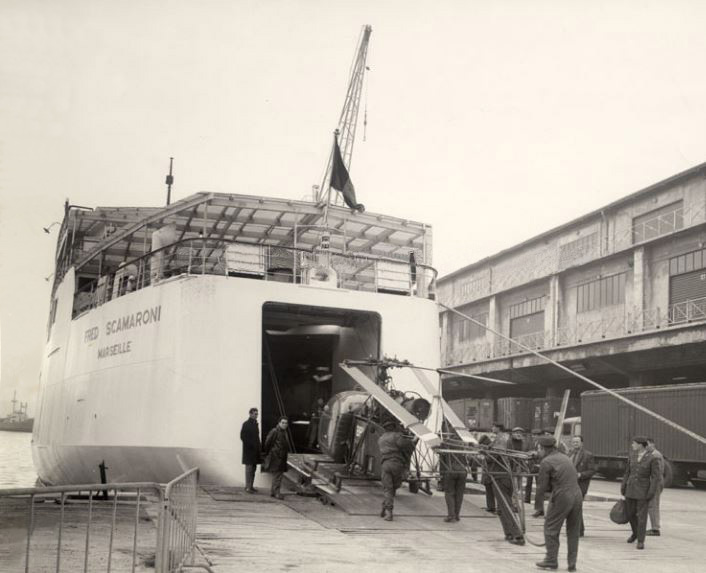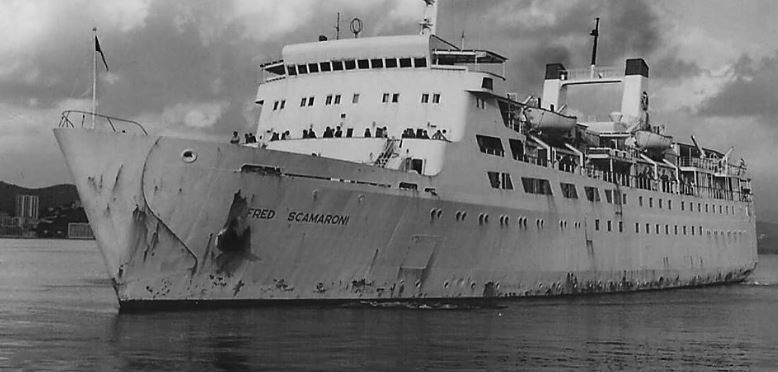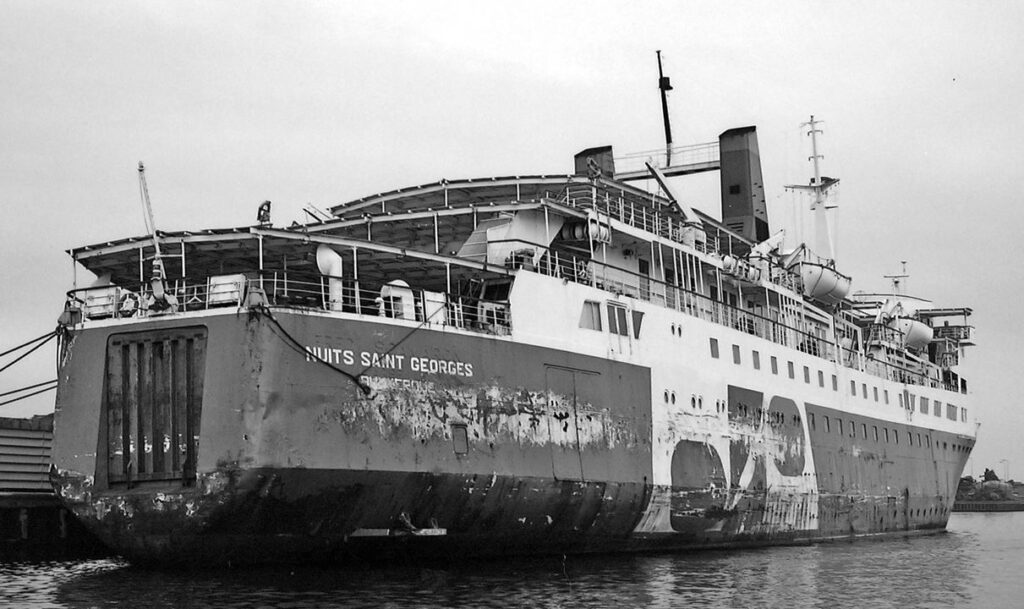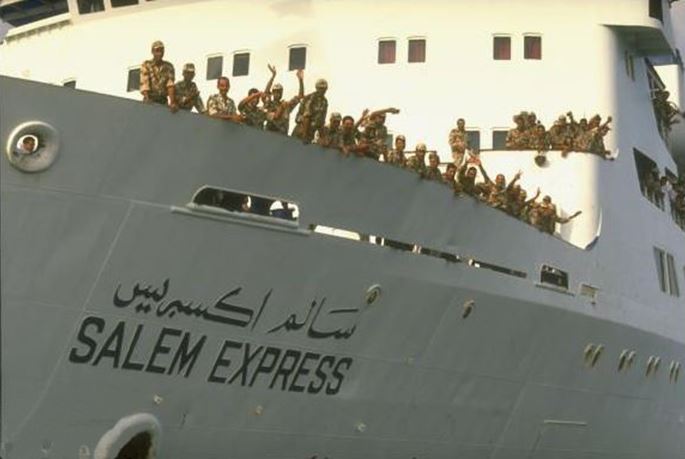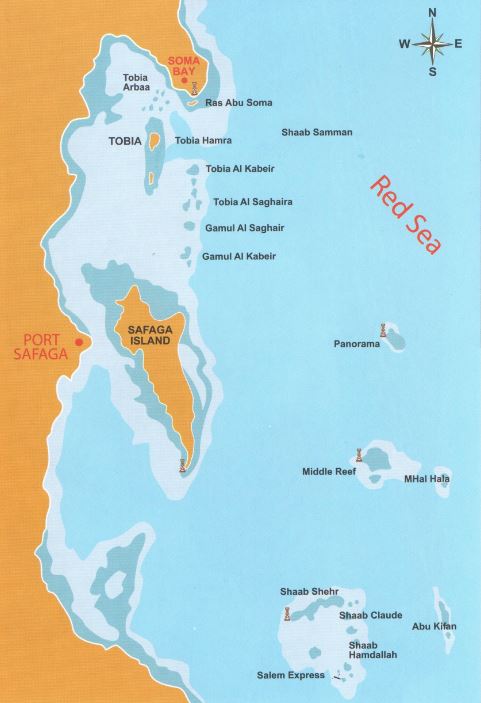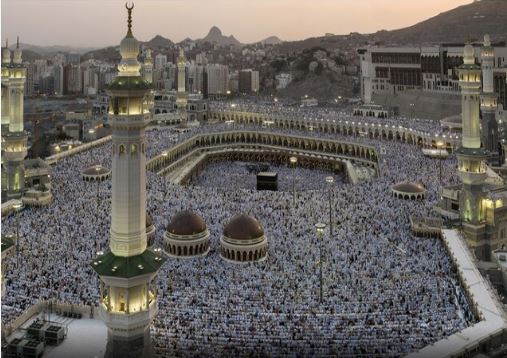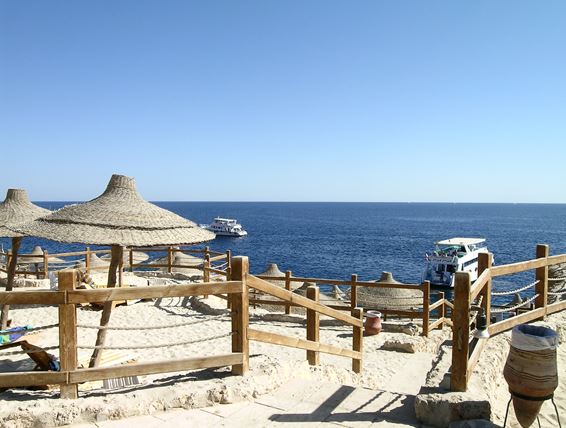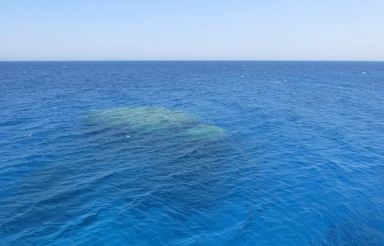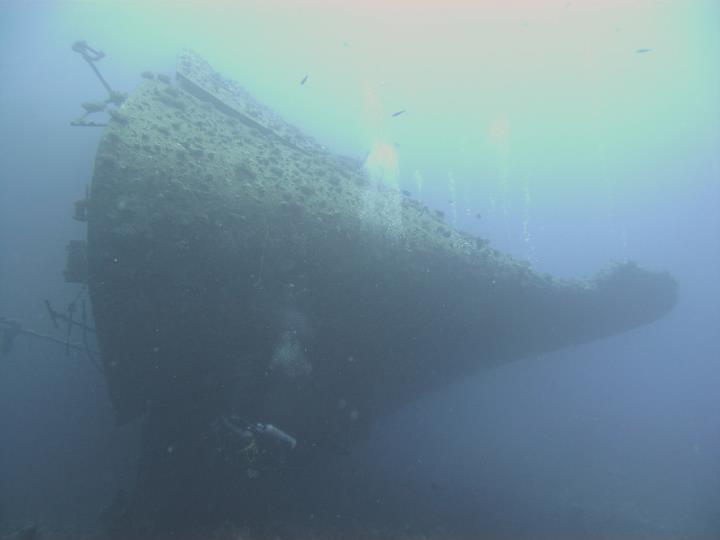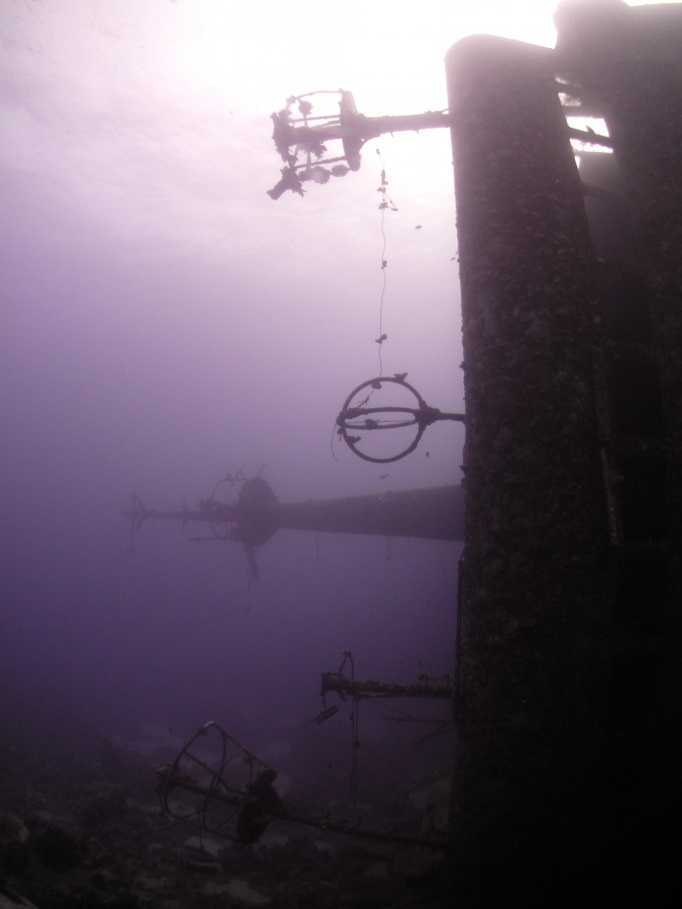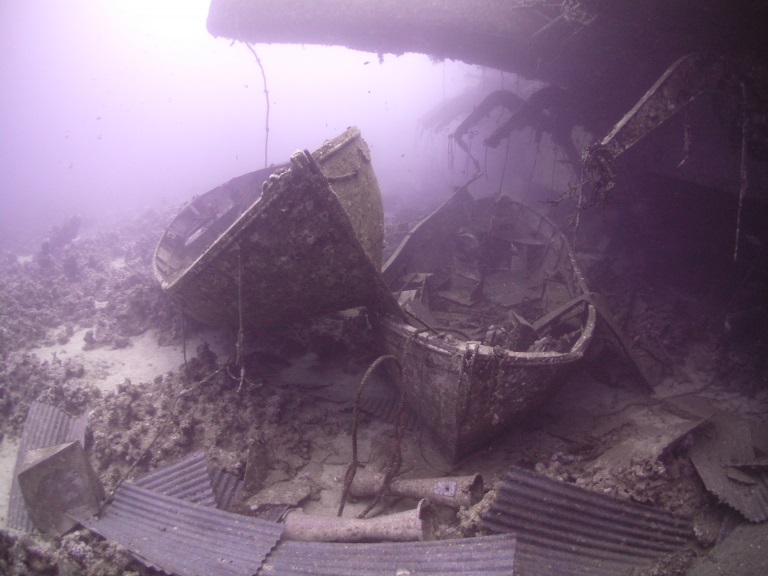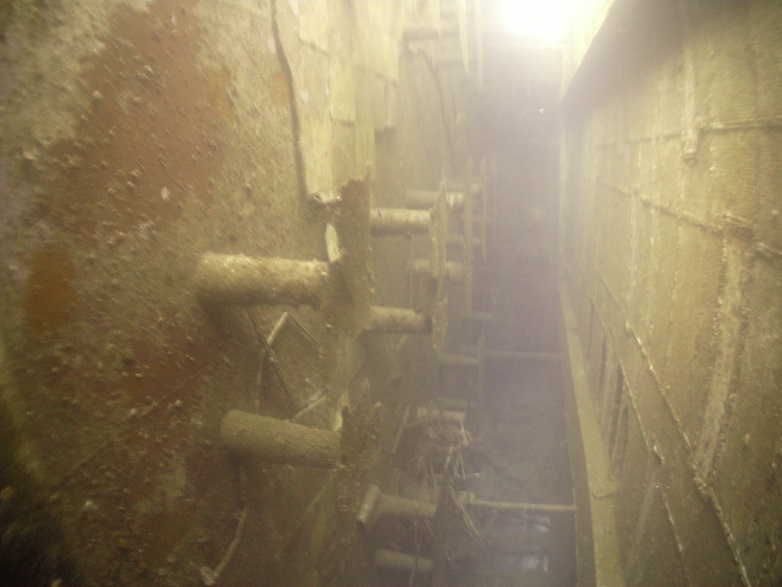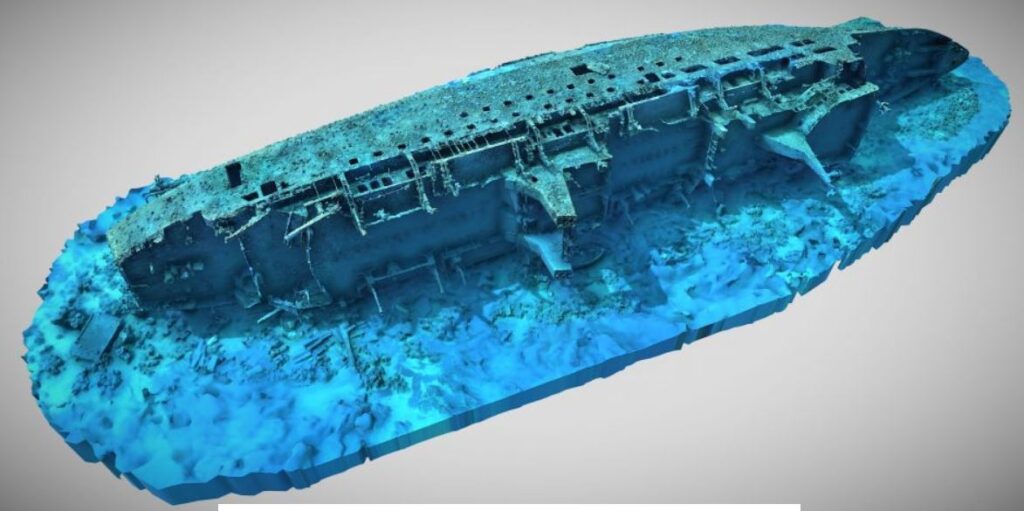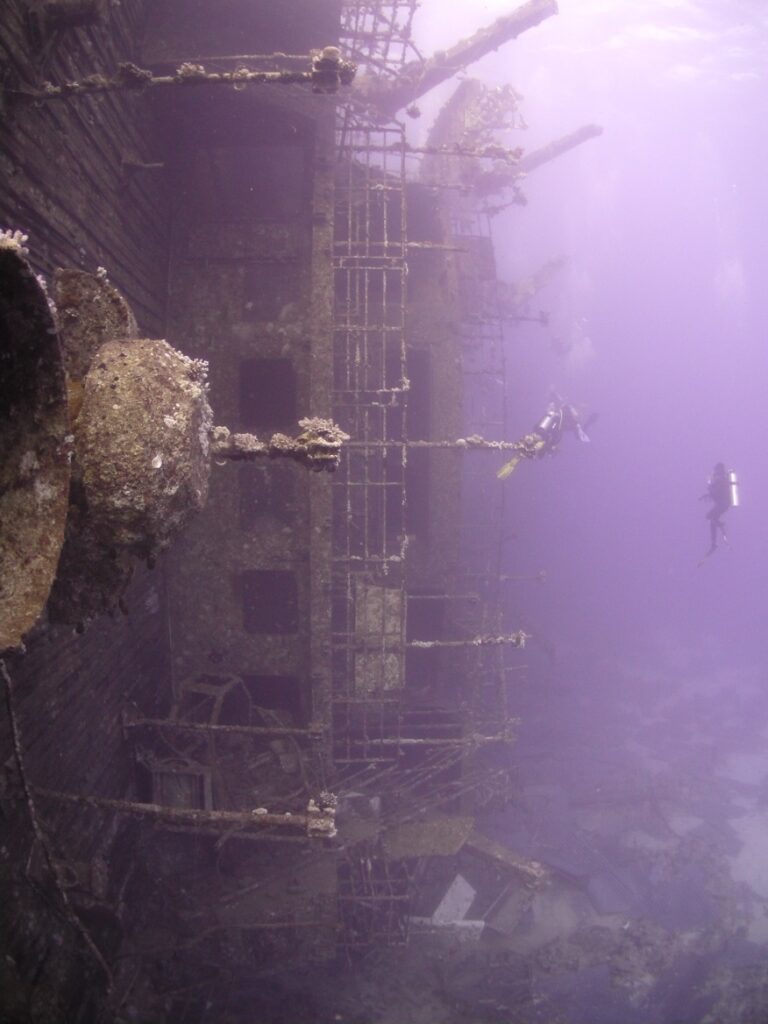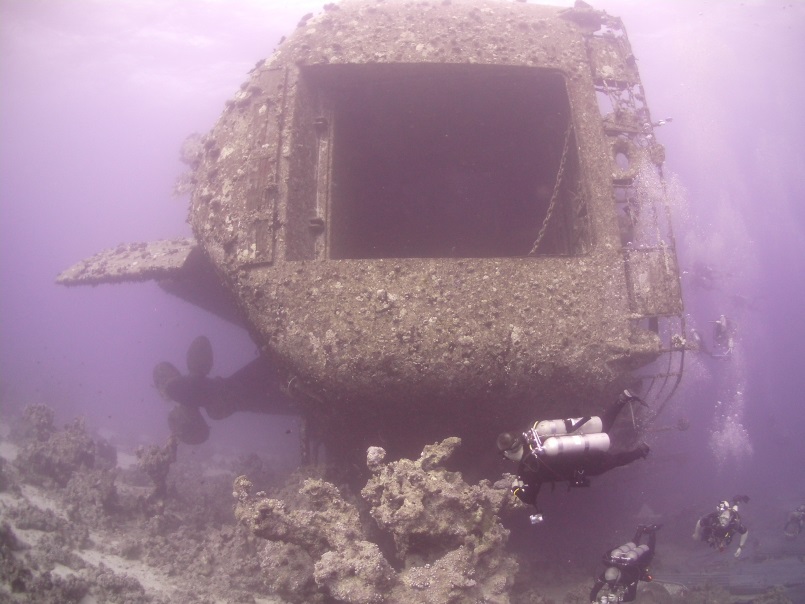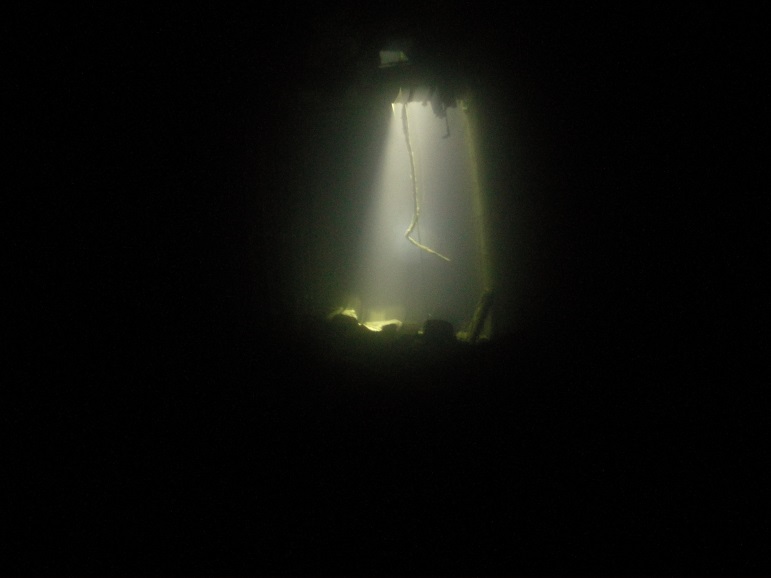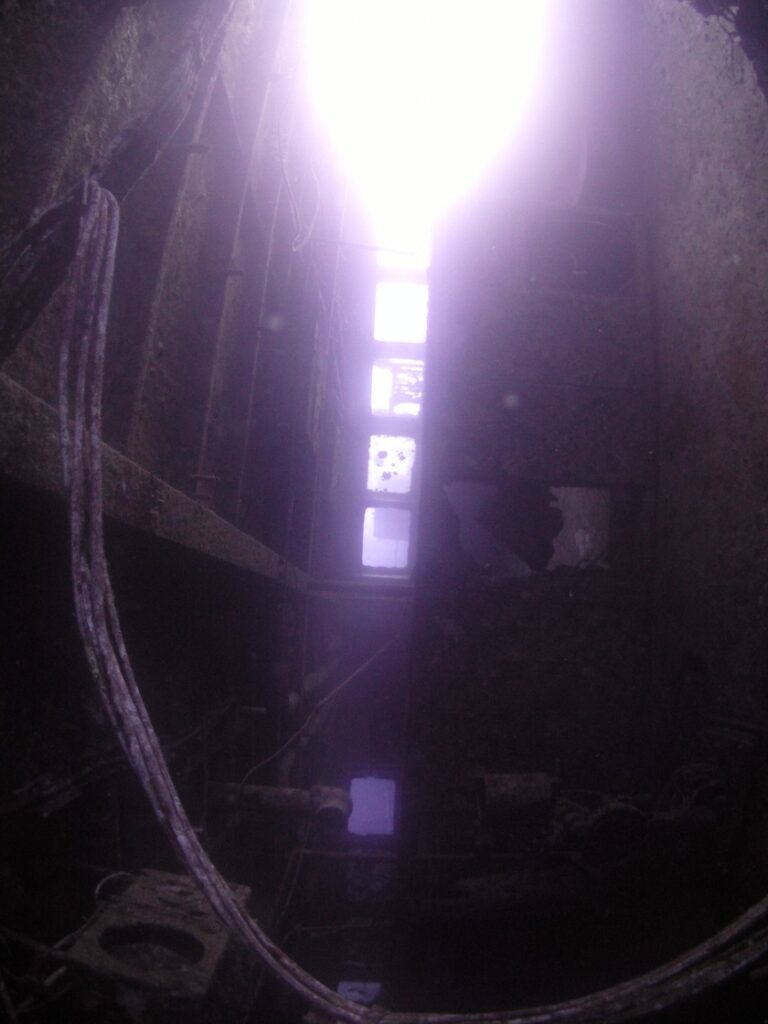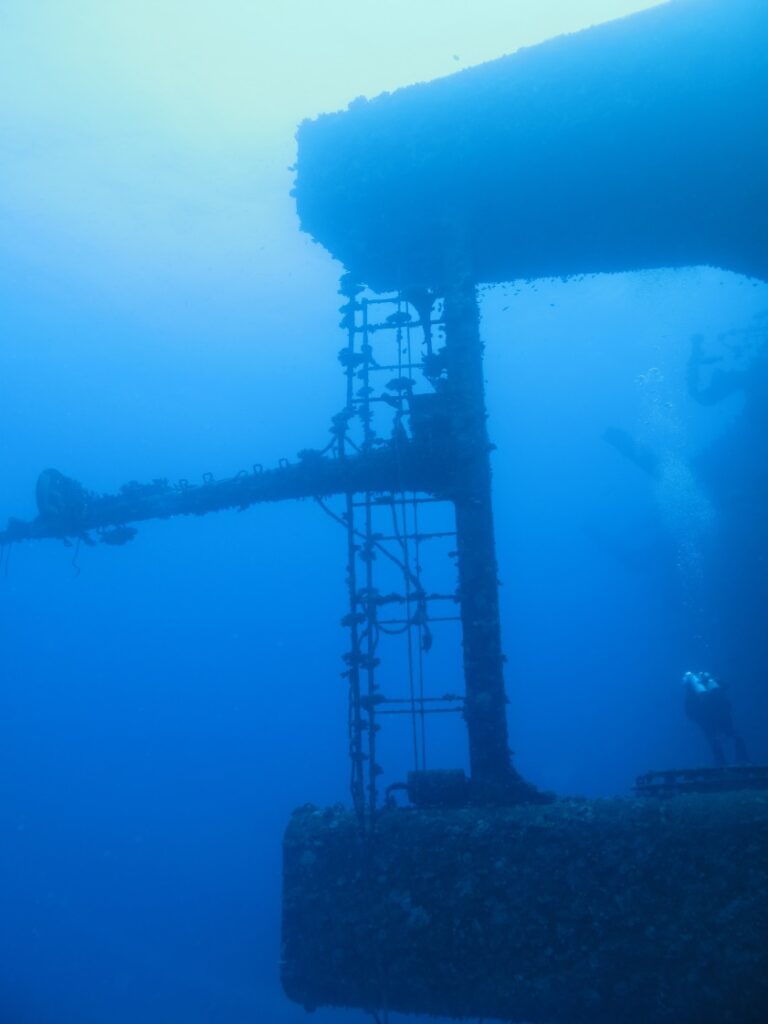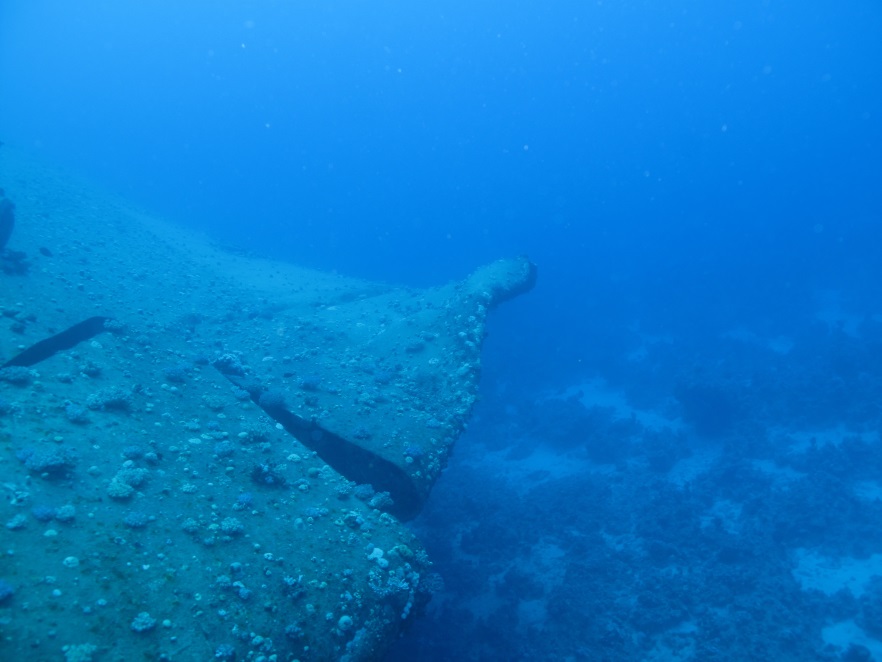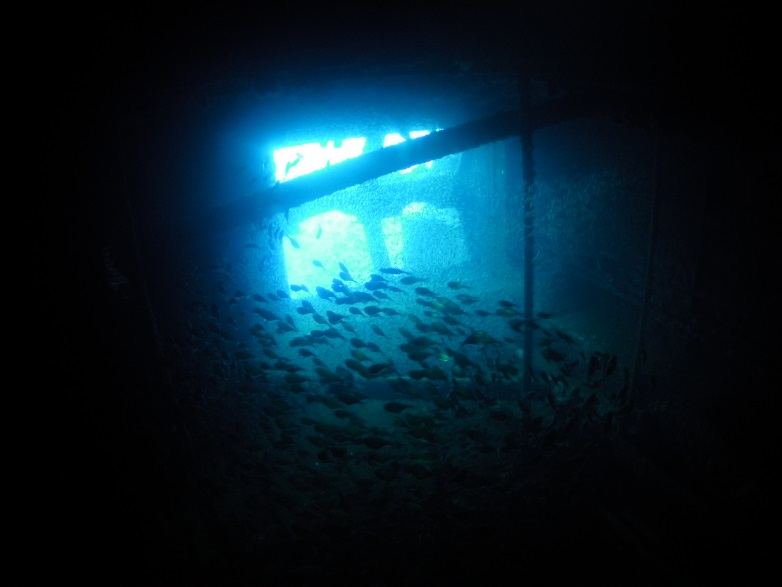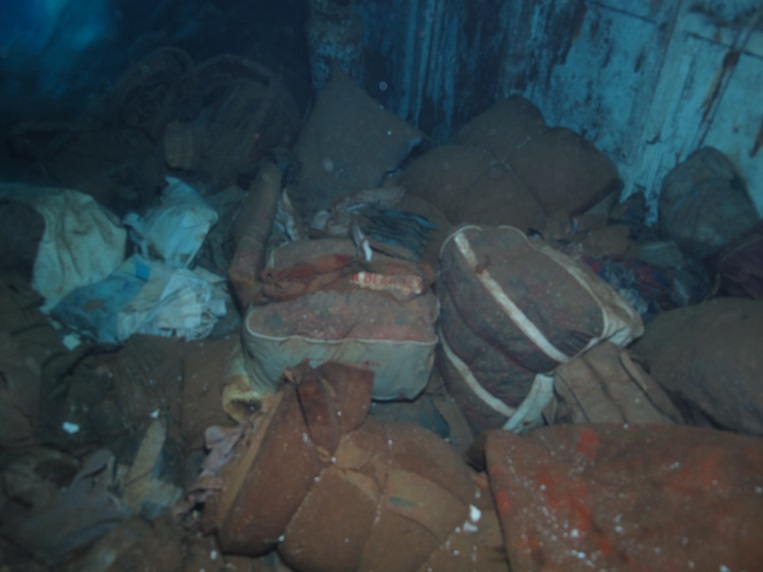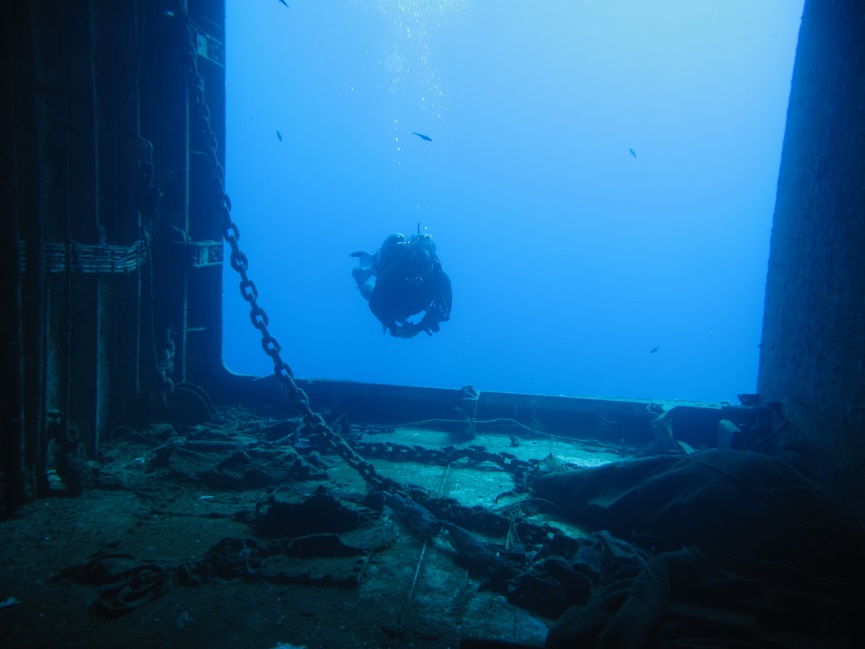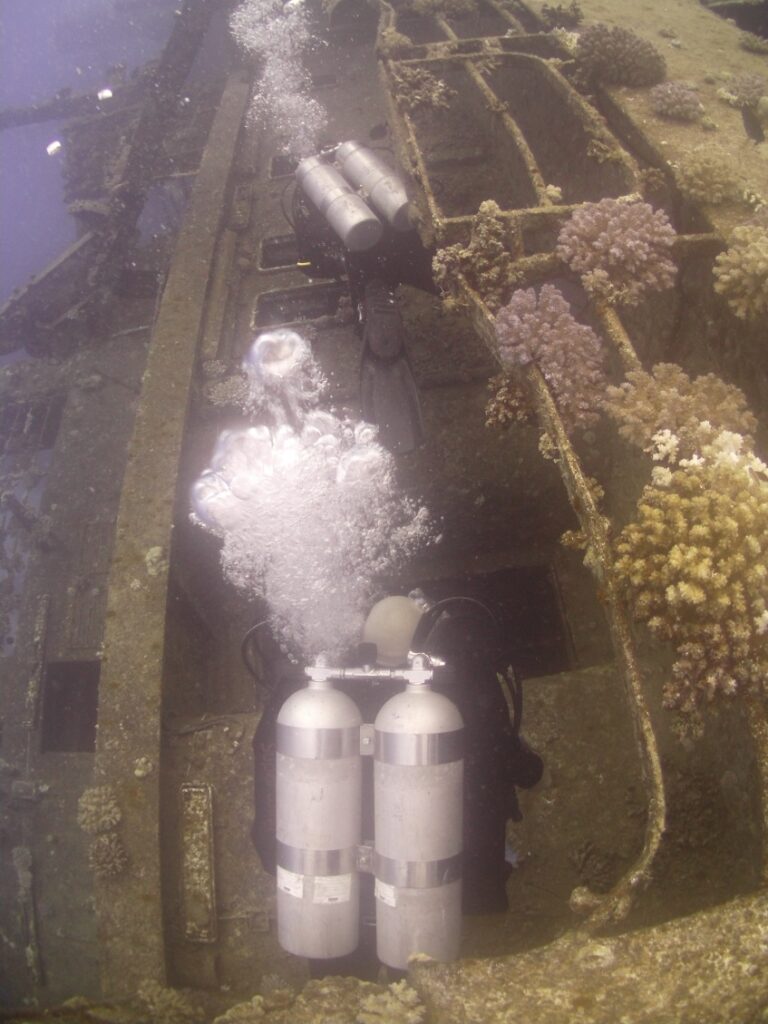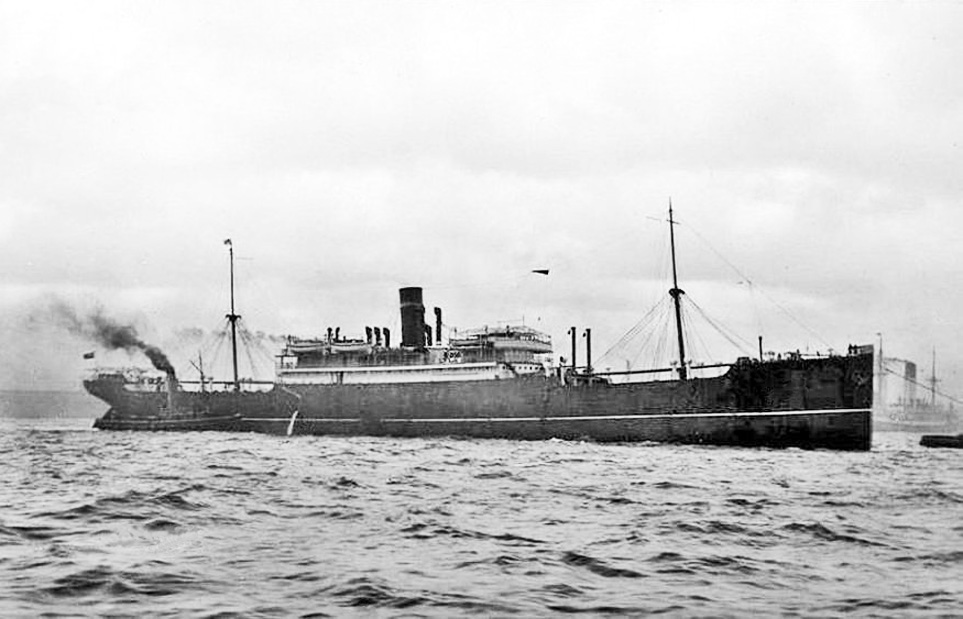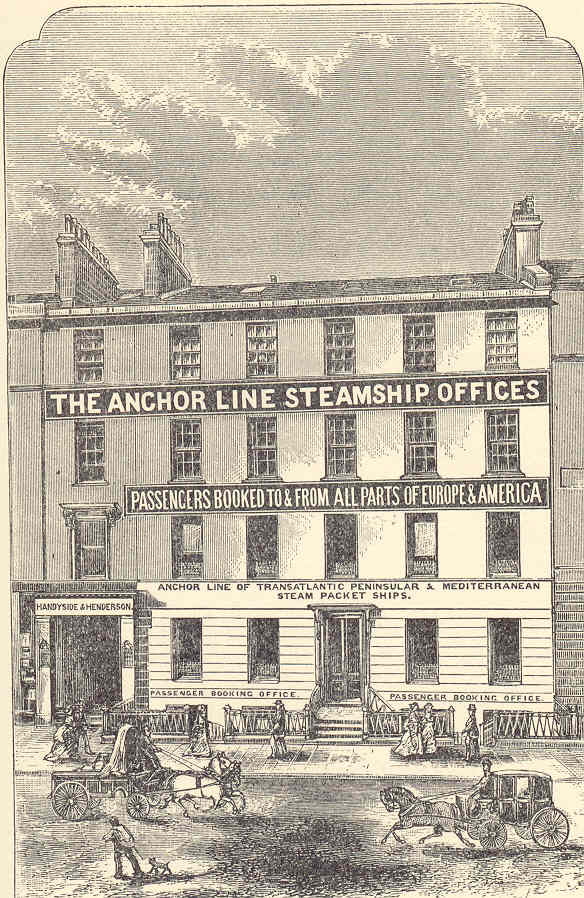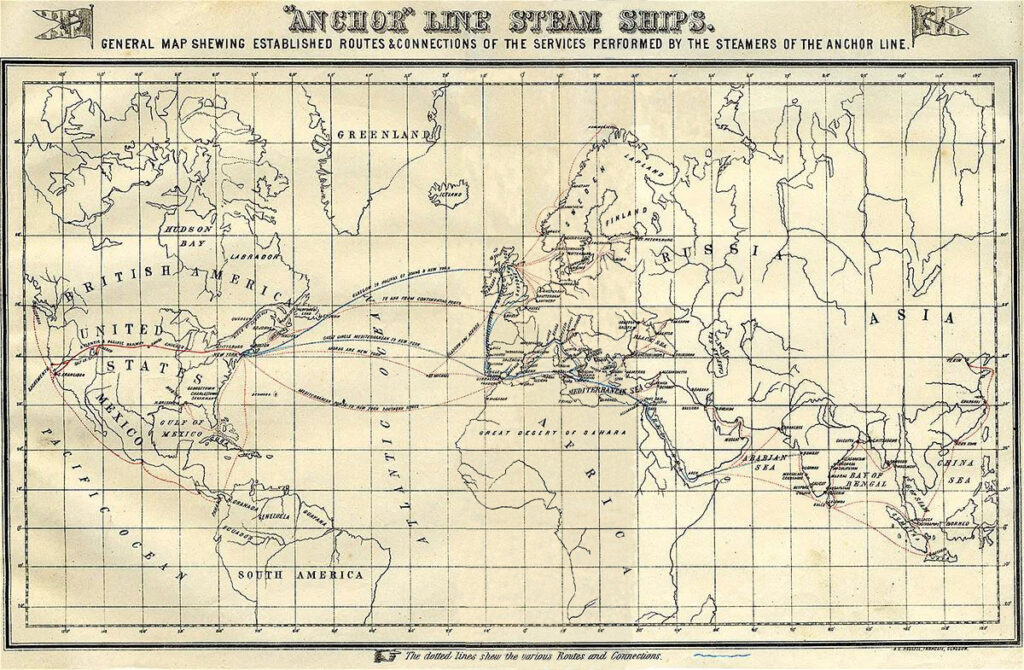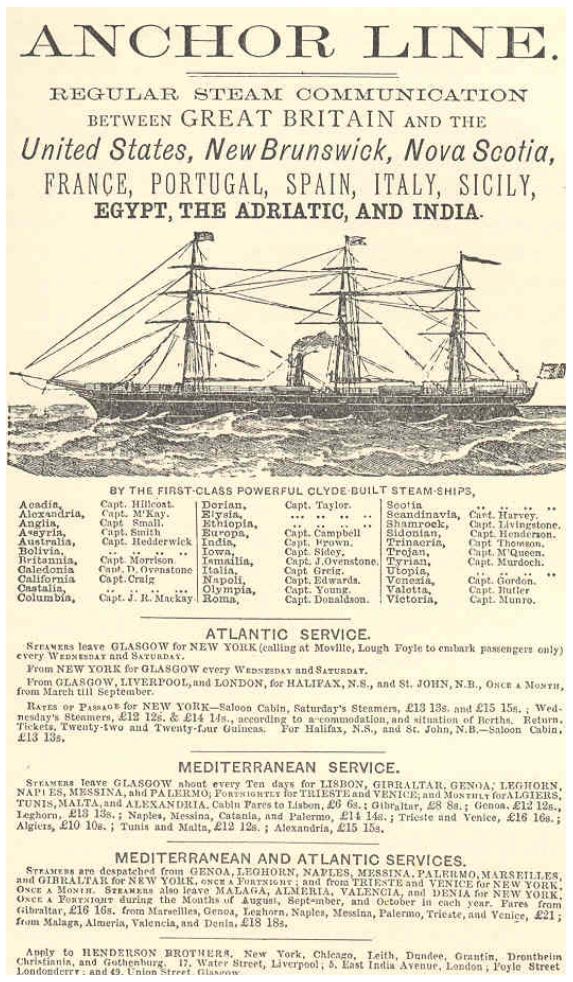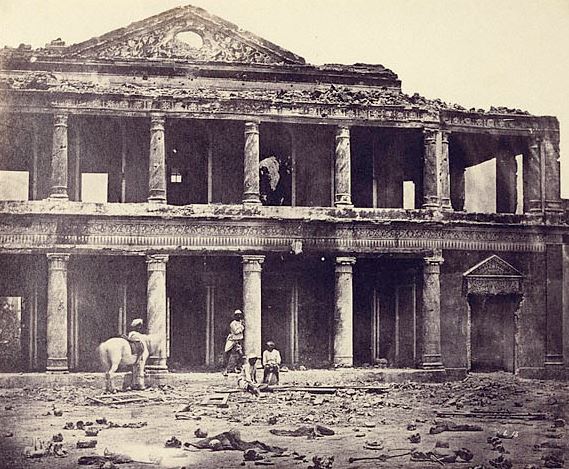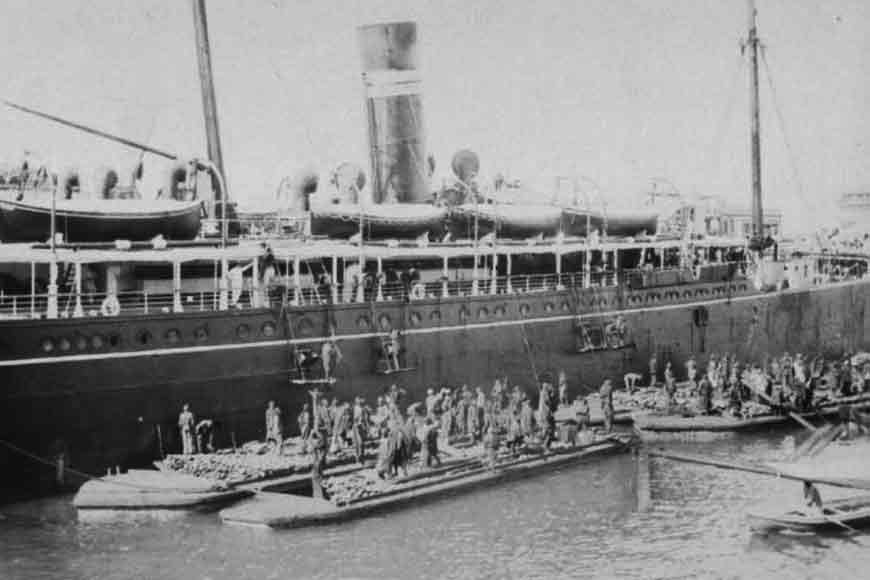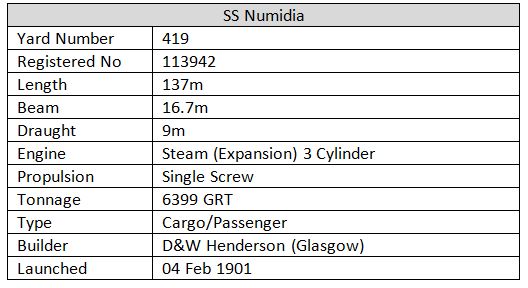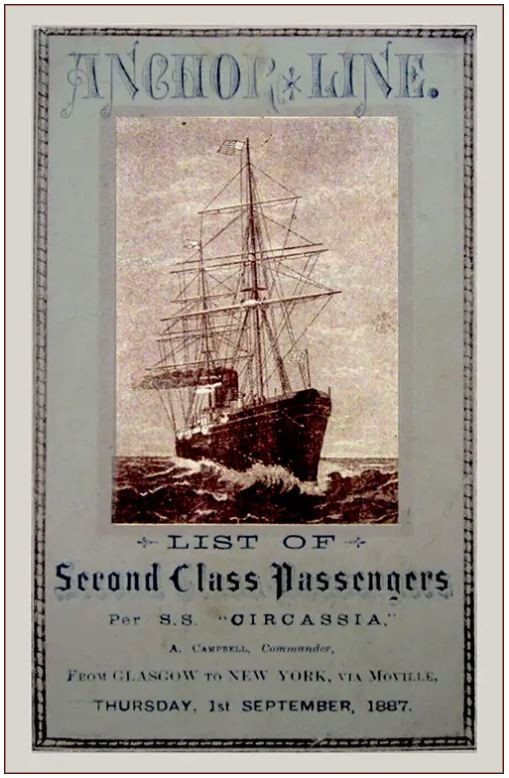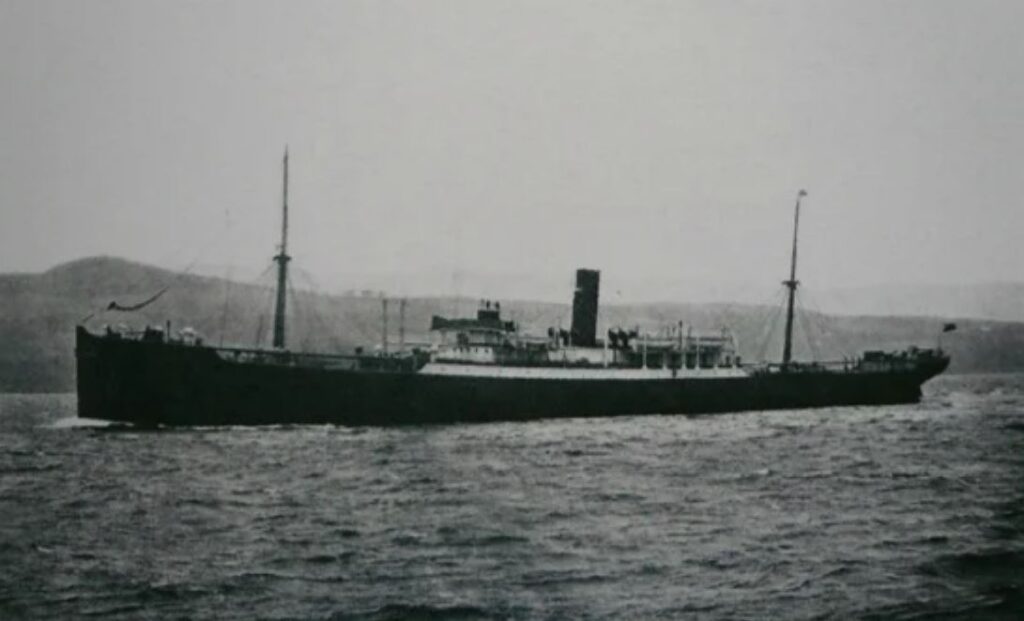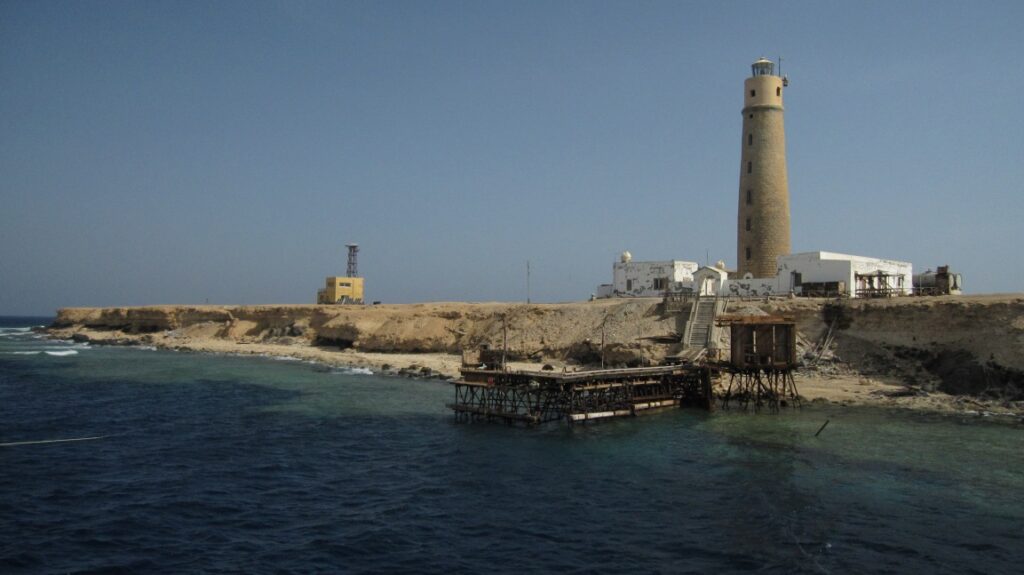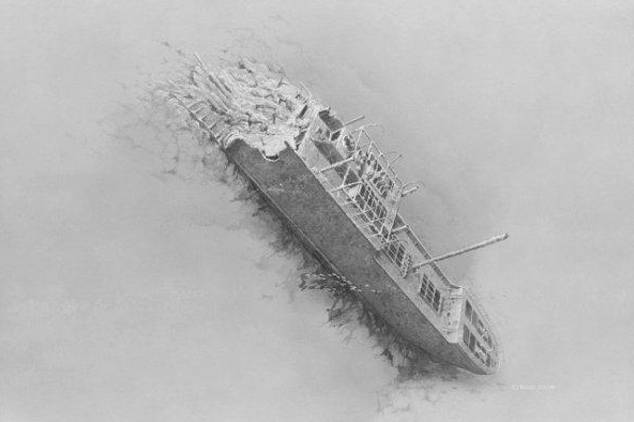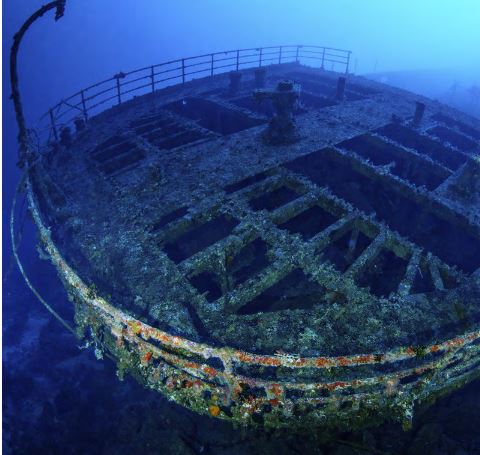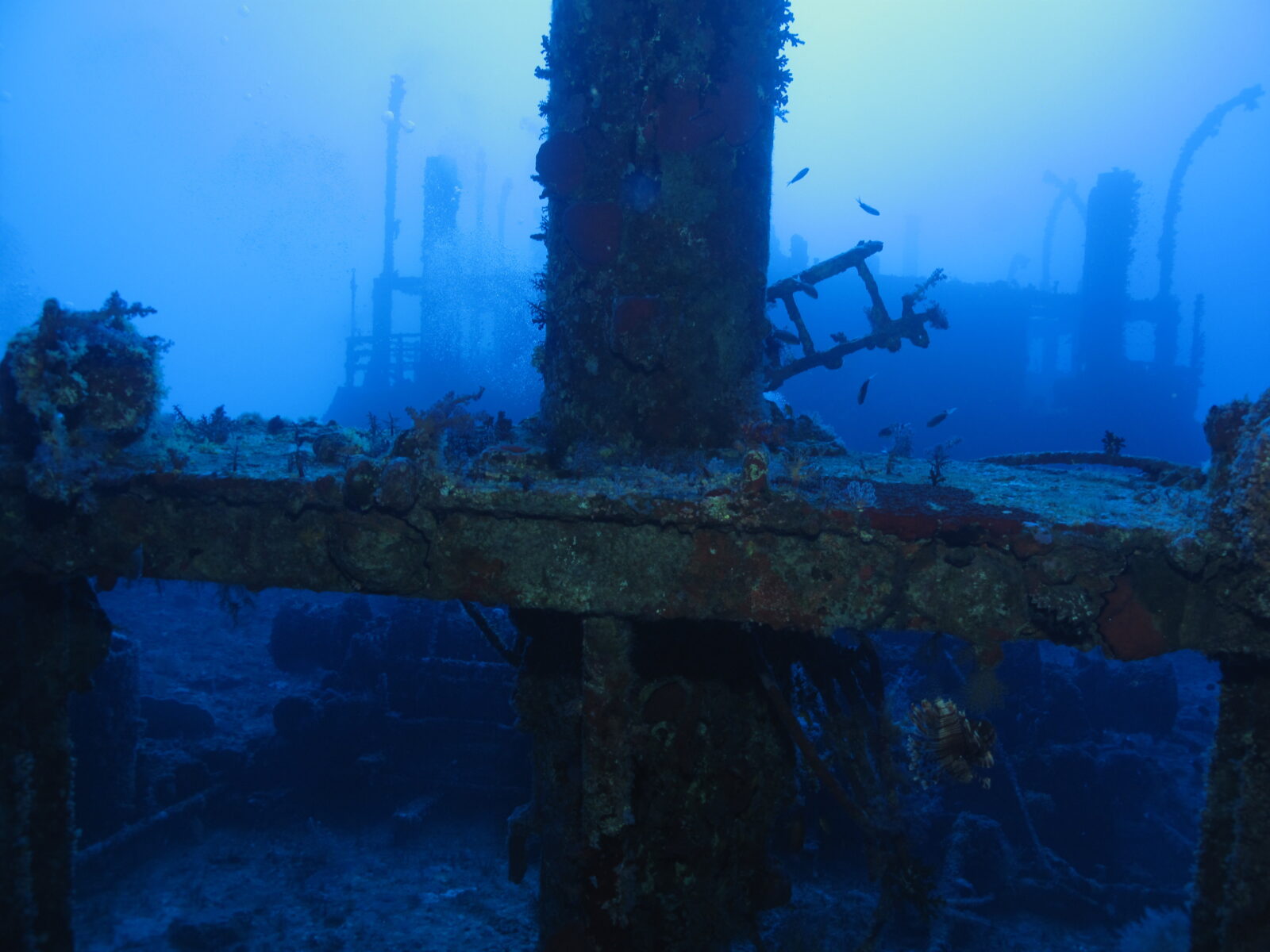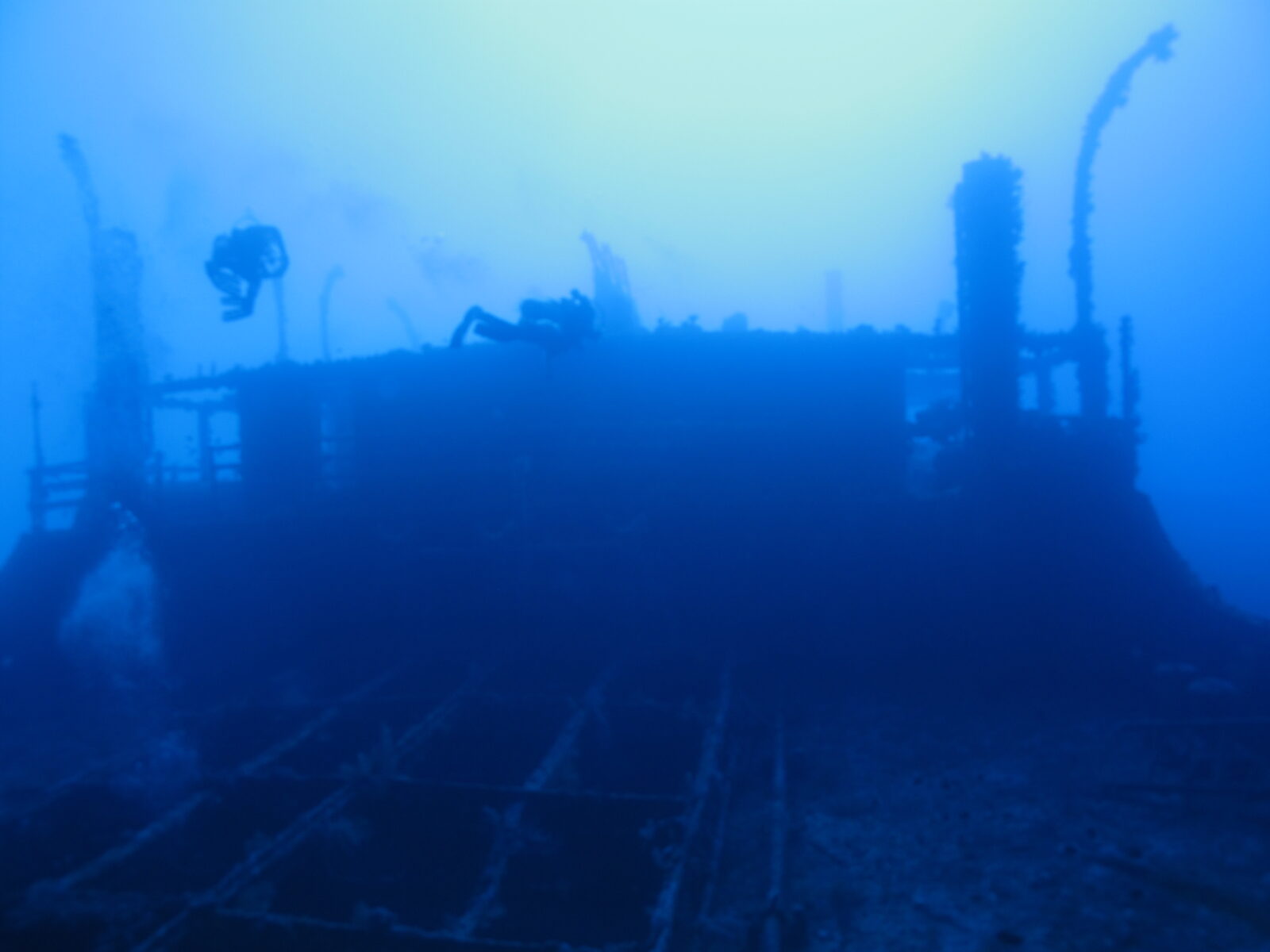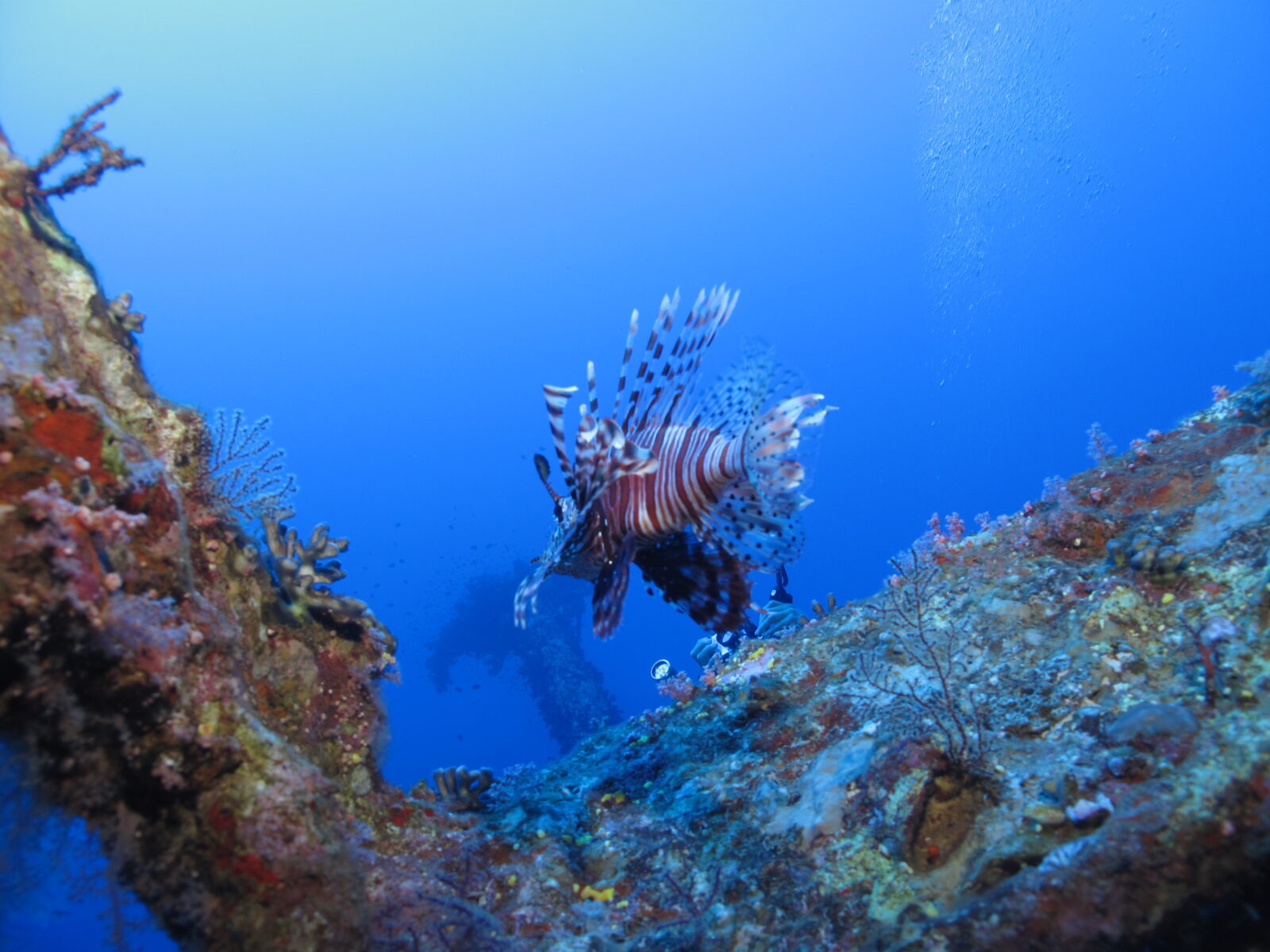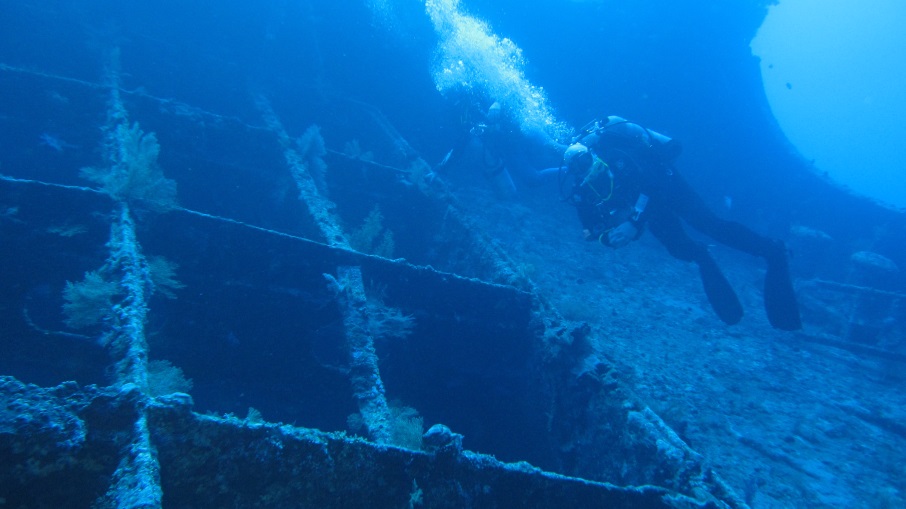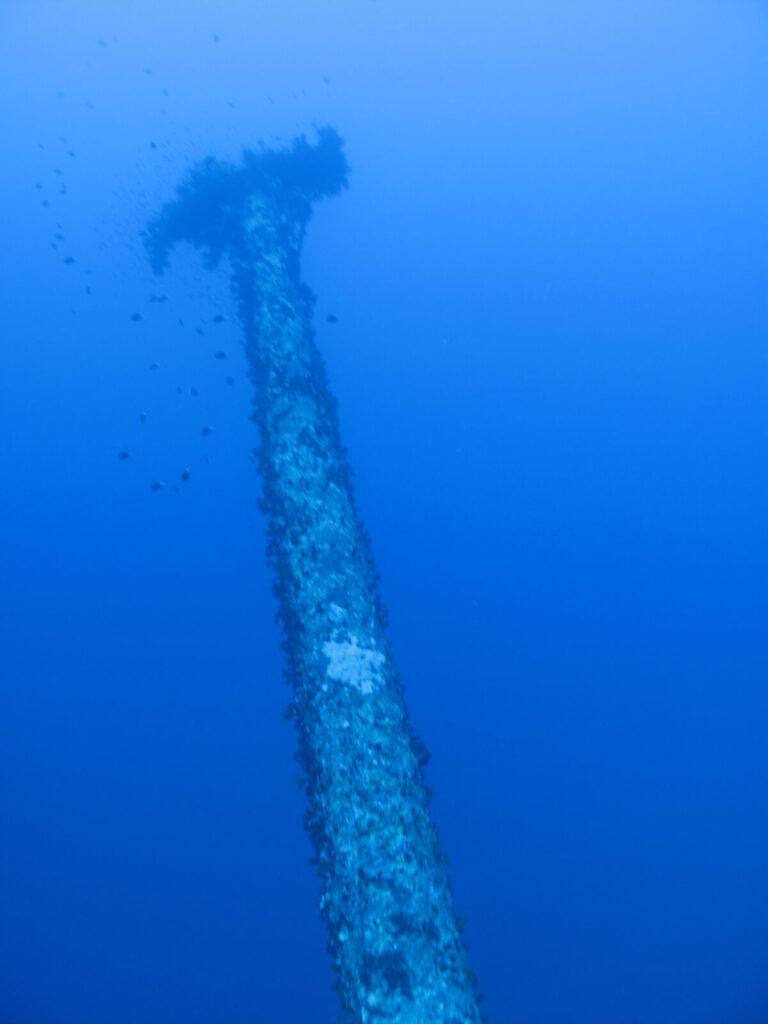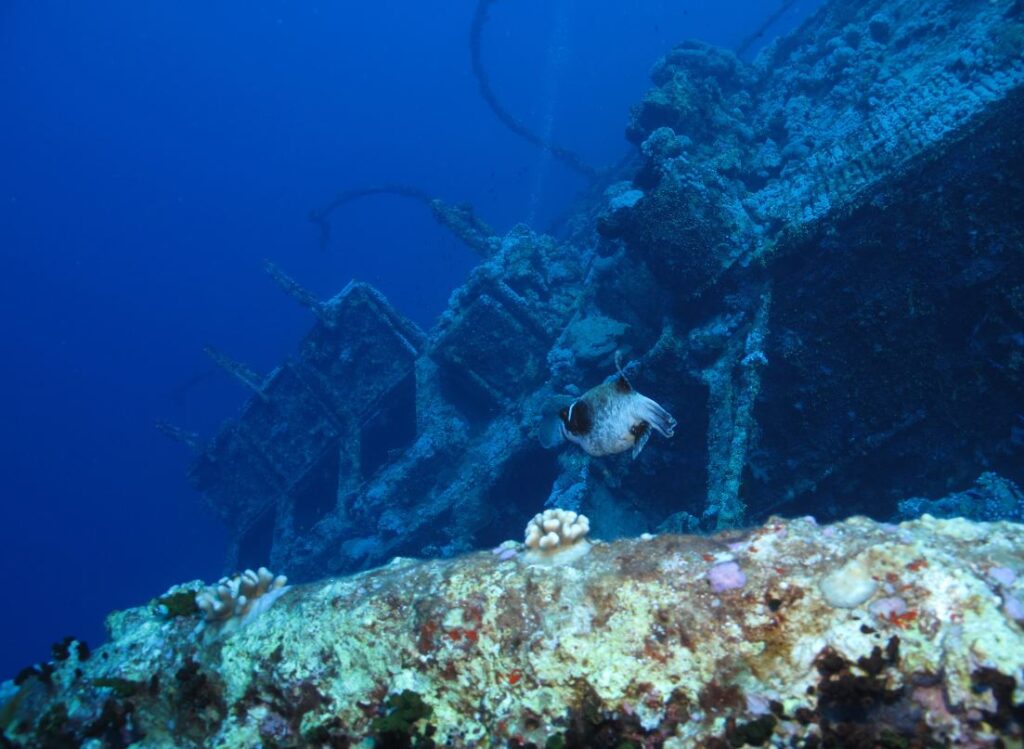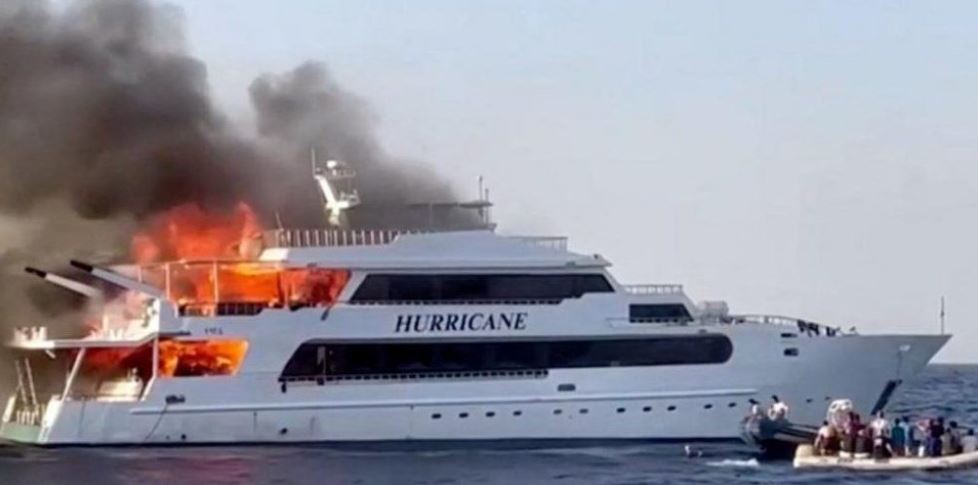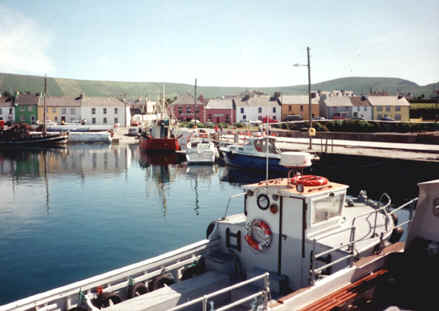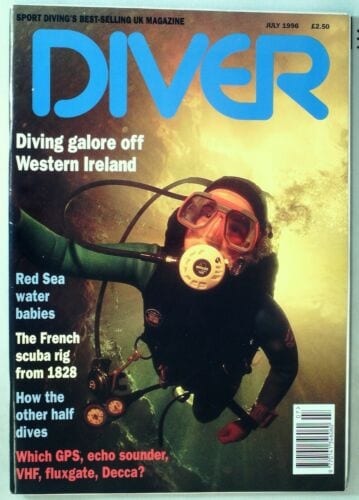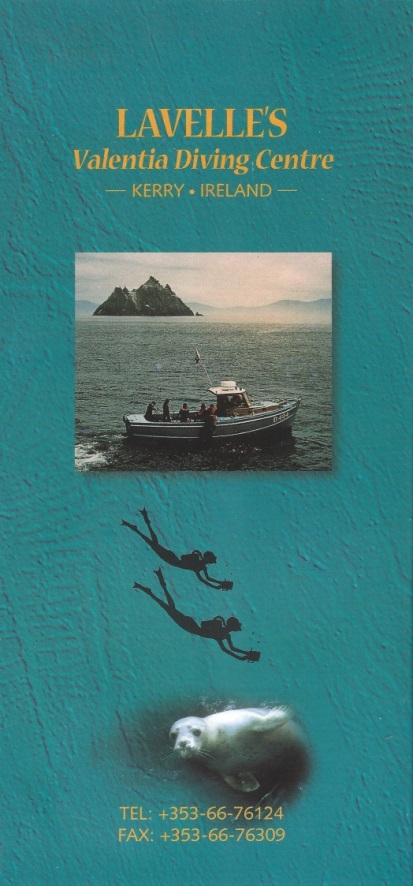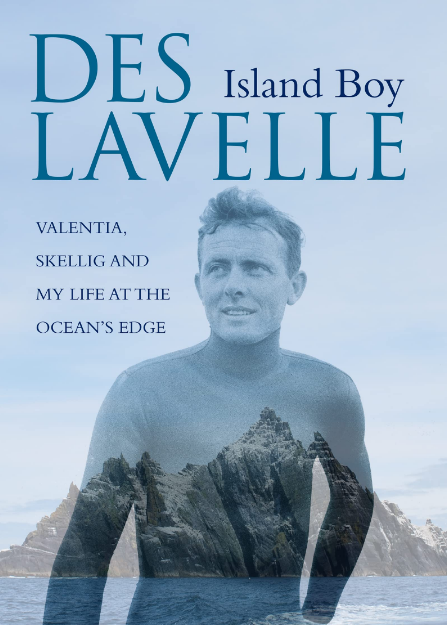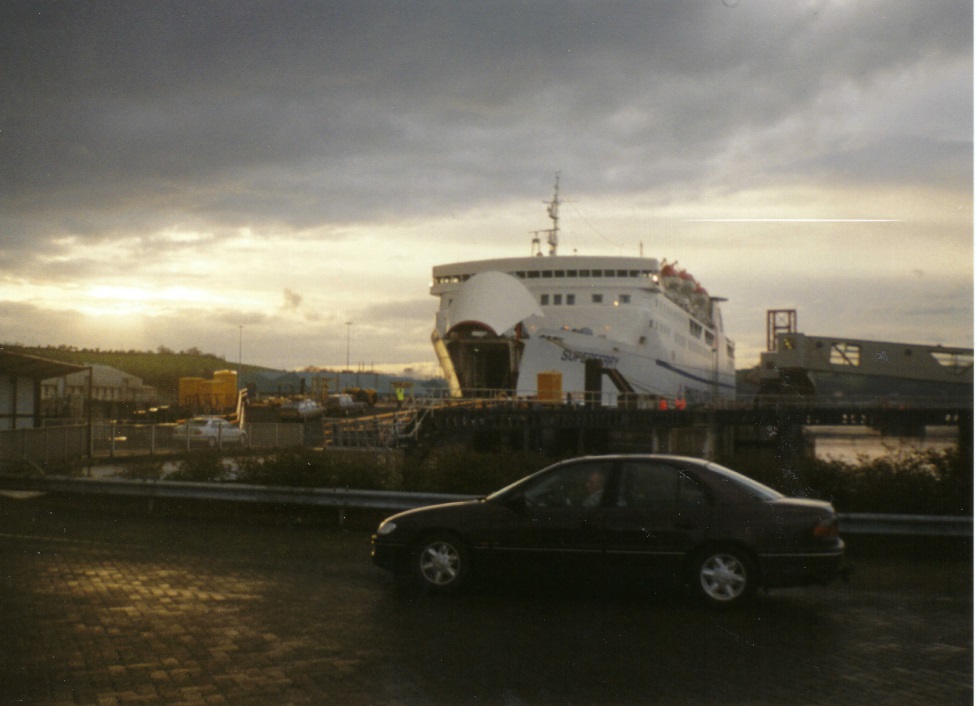Joys & Pitfalls
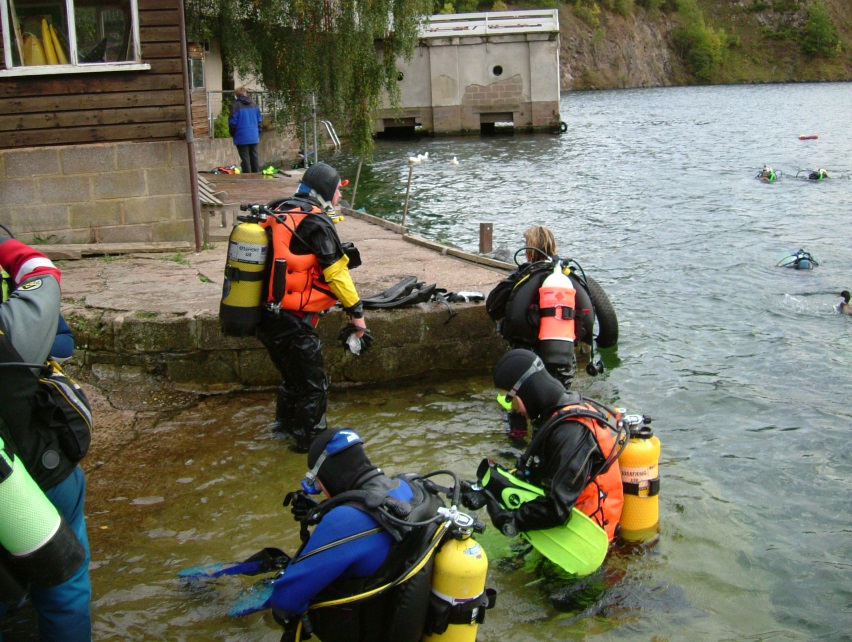
No matter where you start scuba diving you will have been given the chance to just wade in “somewhere” and dive……..whether that is a quarry in the Midlands, or a South Coast beach, or even a Red Sea resort, shore diving is where all of this began. I am convinced the first Ama breath holding pearl divers, in Japan & Korea, the Greek and Roman Sponge divers, the Coromandel pearl divers observed by Marco polo, and even the Assyrians, using animal skins to breathe from, didn’t begin diving from boats, it makes far more sense that they began from the shore and that boats came later…..
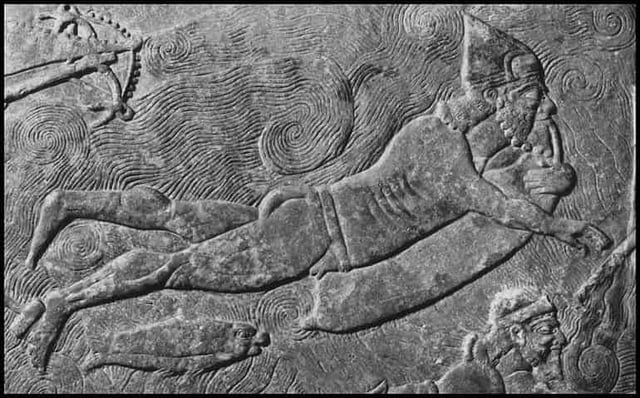
From my own very first dive in “open water” from the slip at Fort Bovisands, to my last shore dive (so far) off the rocks at Cape Pembroke in the Falkland Islands, I have both enjoyed and cursed shore dives in equal measure as, with every dive, there is dark and light or “Yin & Yang”, as the Chinese observed millennia before the West dragged itself into civilization from primitive barbarianism
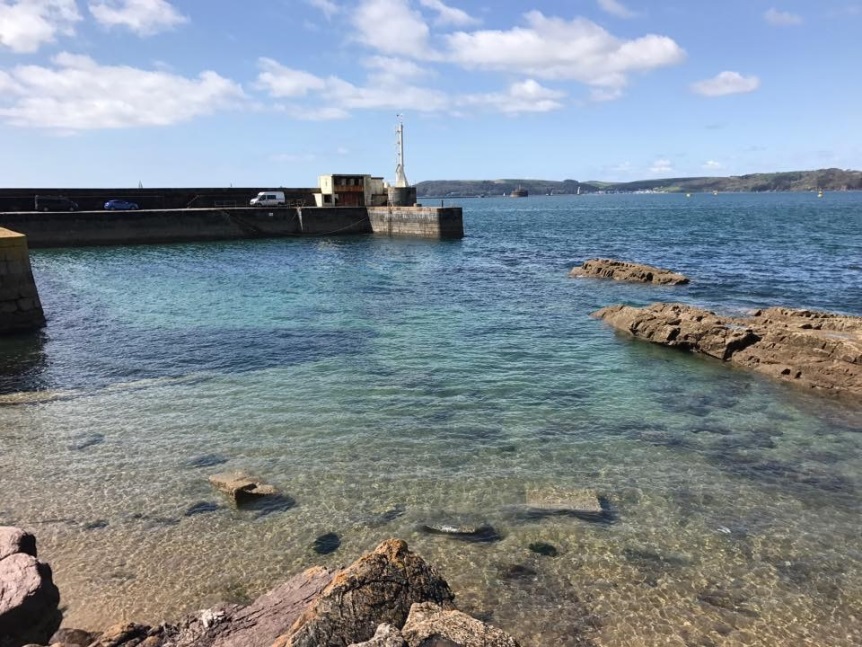
I have been privilidged to dive far and wide across this world, and I am still trying to reach wider, despite the nagging onset of physical limitations, as I head for the wrong side of 60……… I have no complaints and have done some wonderful shore dives, despite my first very nearly becoming my last, (you can read about that elsewhere in this blog but it was a very close run thing, I promise you!) luckily I persevered, as did my poor dive leader, and the rest of my life has owed him a considerable debt of gratitude I simply cannot ever repay!
“21/08/90 SHORE DIVE – BOVISANDS HARBOUR – – Viz 3-4m BASIC DIVE – Scenic – Rock Sand & Kelp Inst Paul. L – Buddy Andy H ”
I have taken a fair few shore dives at Fort Bovisands not only at that time but over several of the following years too, both for pleasure and for training purposes too, so shore diving is inseparable from my love of diving as a whole, and I have enjoyed several very memorable shore dives indeed, here are a few of the more notable ones through the years………..
“15/12/91 SHORE DIVE – Horsea Lakes Portsmouth Viz – 12m – Cold Dive 4’ Temp, (water) – Work task hacksawing & bolting up metal spars – great fun – Damn cold! Buddy Barnie – Air In 210 Out 145”
This is a brutally short description of an excellent dive, in what was then a closed dive site to all but military personnel, and we had worked hard to get access for our joint military & civilian dive club, Tidworth Sub Aqua Club, or TIDSAC for short. Norman Morley, our diving officer (a civilian) and his wife Joy (an ex-military nurse) had been trying to get us back in to Horsea following a change of Officer Commanding (OC) at the site, several years before, who closed it down to Navy/Army trainees alone
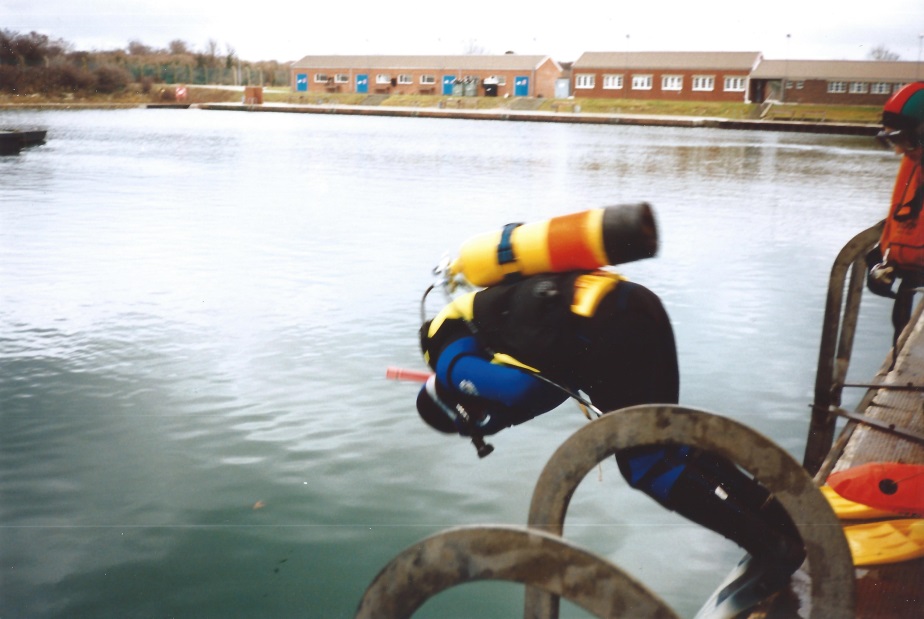
Luckily, I eventually managed to get us through the gates via an official request through my own unit, we were granted very rare privilidge, and dived several times with an entirely empty lake to ourselves. The dive described so curtly was to get a “working dive” towards my sport diver qualification, if you imagine Carl Brashear in “Men of Honour” where Robert De Niro has Brashear’s tool-bag cut open and his tools strew all over the sea-bed making his tasking almost impossible….but he manages, through sheer stubborn determination, to complete the task, after hours of trying and surfaces, almost hypo-thermic, but triumphant……..my dive was nothing like that………It was a beautiful, sunny, but bitterly cold day, with gin clear freezing cold sea water, filled with hundreds of tiny jelly-fish, and Barnie and I worked to saw and bolt together a simple framework of metal bars, whilst freezing in semi-dry-suits, with barely working fingers in thick rubber dive gloves, and we eventually triumphed around 20 minutes later, and had a great time doing so too! One of several dives I would enjoy at Horsea Lakes over several years with TIDSAC

“02/02/’92 SHORE DIVE – Chesil Beach – Portland Viz 2-3m Cold Dive 6’ W.Temp Basic Ferret about, loads of Atlantic Prawns, Some wreckage, the odd crab, Buddy Gary, Air In 190 Out 110”
I have dived Chesil beach a fair few times in the early years of diving, it was a favourite of Toots (Denise Tuttle) and I when we couldn’t afford to dive with Budgie (Eric “Budgie” Burgess, Portland and Tulum Diving Legend & a great personal friend ), although Budgie was kind to us, and always discounted our diving as we were serving military, even he had to make a living, and towards the back end of the month Toots and I would run out of money, but still have access to a military Land Rover, free fuel, and be able to get packed lunches for a Wednesday “sports afternoon”, so we’d take a run down to Portland and shore dive off Chesil Beach, along the disused sewage pipe outlet where Cuttle-Fish often appeared and would shift their beautiful colours as they decided if we were a threat or not……
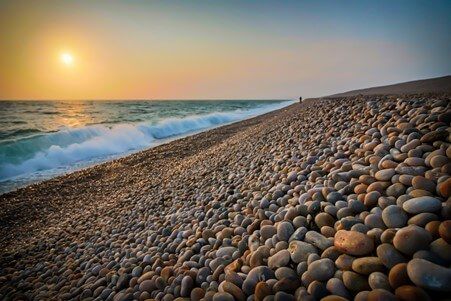
“03/05/’95 SHORE DIVE – Chesil Cove – Portland Pure pleasure dive hunting round the outlet, through Kelp fields, a couple of Wrasse, a Pipe Fish, a large Cuttle Fish & plenty of Pollack (small) couple of Spider Crabs – very enjoyable – Air In 230 W/Temp 14’ Viz 3m Buddy Toots”
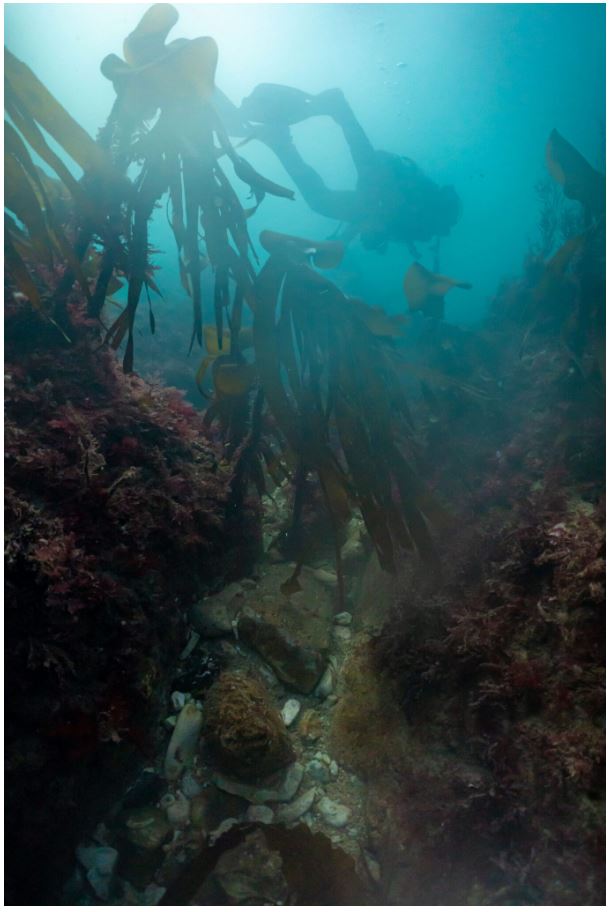
Strangely, I can only find one other of the Chesil Beach dives, out of what must have been close to half a dozen we did there, recorded in my log-book, (although there are several more named as “1st Beach Chesil”….) and it’s one that was only memorable for how poor the Viz was:
“29/03/’95 SHORE DIVE – Chesil – Portland Looking for the Adelaide – Viz too low to dive with 2 novices aborted immediately (Nil @ 12m ) Buddy Simon & Toots”
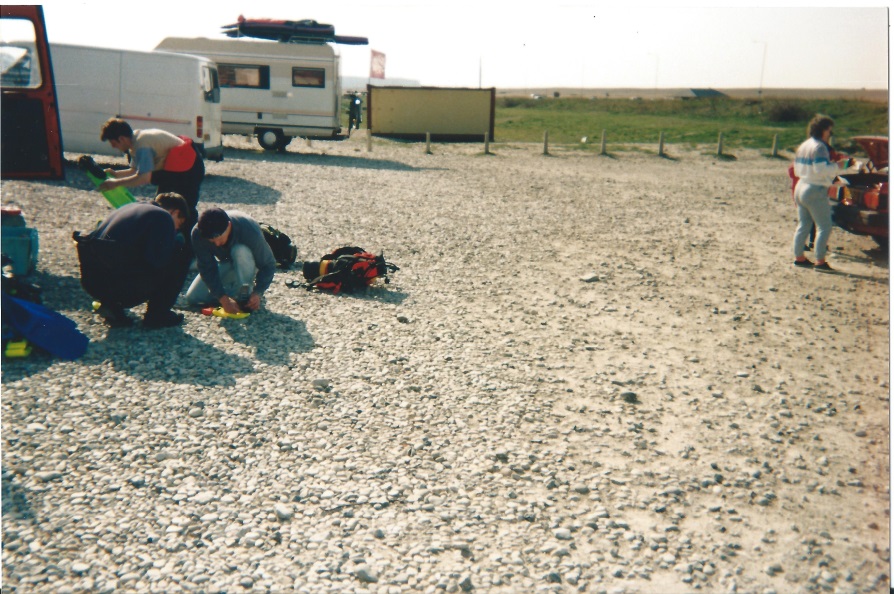
On that dive I had Toots with me and thankfully had a buddy line between us, there simply was no Viz, it was as dark as any coal cellar (for those of you who remember such places) and I had to hold Simon, our novice diver, next to me and pull Toots in by the line and feel for her thumb, which I jerked up three or four times to signal we were out of there….. For anyone who dives Chesil Beach, anywhere down its length, the greatest challenge is undoubtedly the exit, the stones are steep from the on-shore wave action, and stacked high…… as your legs work to get up the rise from the waterline, where, if you are in any kind of “chop”, the waves are trying to beat you down and drag you back in, your feet sink into the mass of stones, and it is damn tiring, especially following a decent length of dive, weighed down with heavy cylinders and a weight belt……. believe me
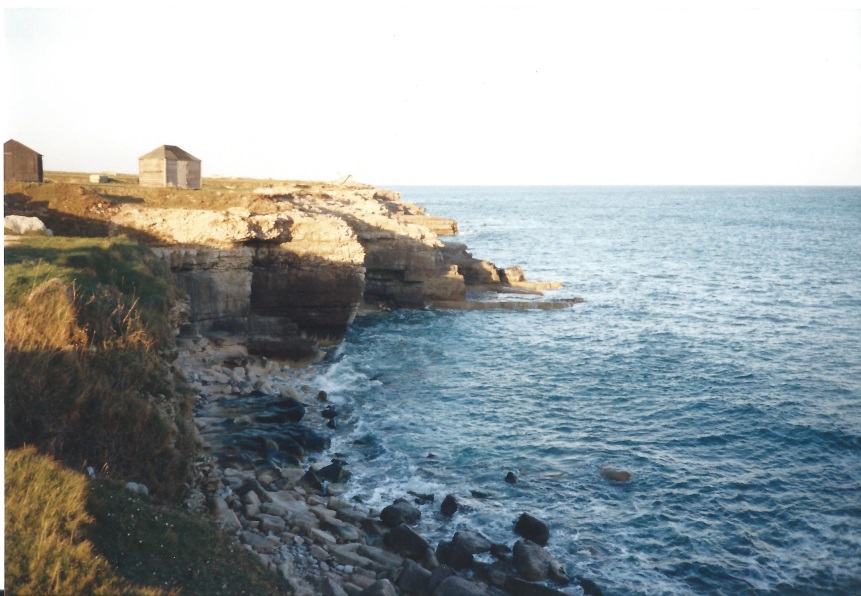
There would be many other shore dives over the remaining years I had left in the Army, all of them spent, bar two live tours, in Tidworth……..Portland offered a variation of shore diving, from the rocks below the lighthouse on the point to the rock bays around 1st Beach, Church Ope Cove and Pulpit Rock, to the drift dives below Ferry Bridge pushing you into the sheltered harbour at anywhere between 6m and thigh depth at low tide (as I found when we were picking up divers in the club RIB some years after I’d left the Army and started up Deep Blue Diving),
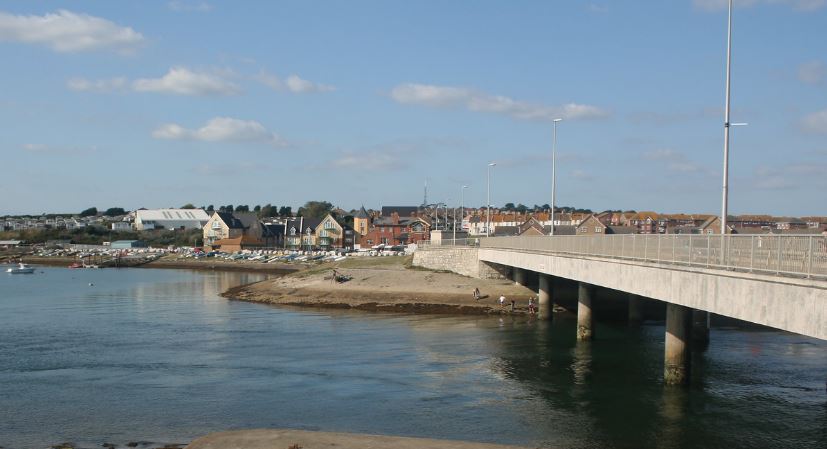
all these shore dives gave us a wide variety of sub-marine life, from Cuttle-Fish dancing around the kelp around the disused out-fall pipe, to Spider Crabs and Brown crabs hiding in nooks and crannies on the occasional outcrop away from the shore-line, and encrusted old anchors with Mussels and Anemones off 1st beach, where vessels had run ashore so long ago as to be lost in history. The Bill at Portland, and Chesil Beach, just around that headland, offer some of the best shore-diving England has to offer, but it wasn’t the only South Coast shore diving I have done
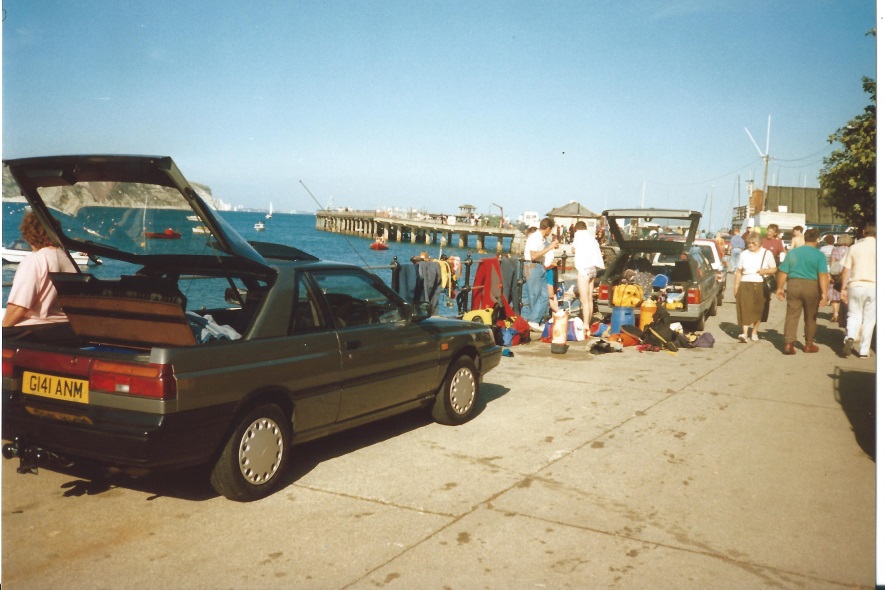
There were many others, Lulworth Cove was one, although unremarkable at the time, with little to see, it was one of my first Beach entry (walk-in) dives and I enjoyed the swim around such an iconic bay, there were more too, the pier at Swanage, just around the coast from Portland, was one Toots and I did occasionally, and the first time I saw anyone just drag their dry-suit over their standard day clothes and get in……..I’m sure that was more time-affected than simple bravado, we had got there a little later than expected and light was fading, so it wasn’t quite the je-ne-sais-pas it seemed, and luckily the dry-suit didn’t flood either or it would have been a wet drive back to Tidworth ………
“07/01/’95 SHORE DIVE – Swanage Pier – escorting novice – a root about the pier footings. Very little to see, the odd Crab and a Pipe Fish. Practiced A A S breathing W Temp 8’ Air In 220 Out 150 Buddy Toots Viz Down below 1m throughout.”
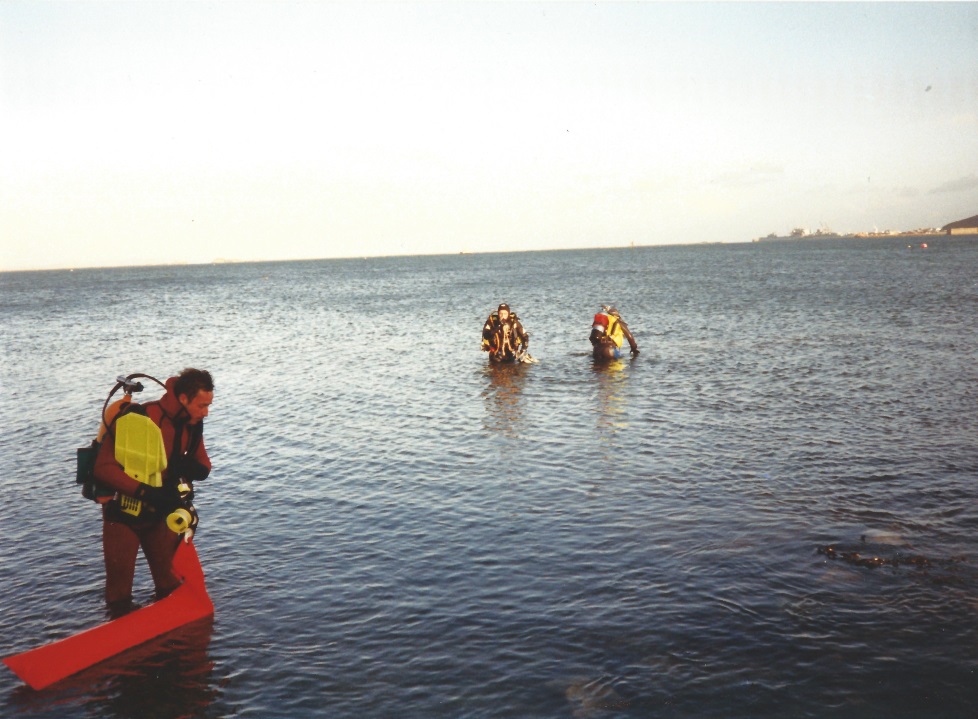
I didn’t just restrict myself to the South Coast for shore diving either, Anglesey saw me take my father-in-law, Tim, diving in a gulley just off Porth Castell which is a great little dive approaching high tide, there’s plenty of room to lay out kit and kit-up and a gentle entry direct from the sandy little beach there too
“18/08/96 Shore Dive – Splash @ Treaddur off the rocks to the left & up & down the gully just for fun Air In 140 Out 100 Viz 3m Buddy Tim”
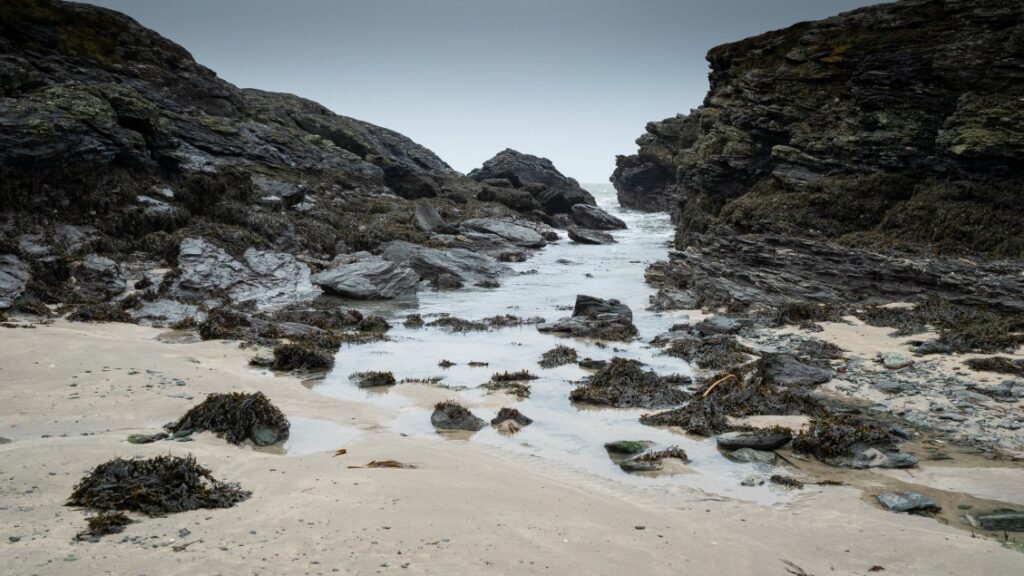
The gully at Ravens’ Point is a hidden little gem at Treaddur Bay, although there was nothing dramatic to see on the day, I recall several small fish and a couple of shy crabs in crevices, the swell of the incoming tide gently lifting and dropping us in its never ending rhythm, and kelp fronds waving, in the odd clump that managed to hold-fast in the face of the Irish sea and its vagaries of weather fronts. You can reach the gully by following the headland around to its limits on the left side of the bay, there are rock out-crops and a low cliff headland going on around to Penrhos Bay, a favourite of mine since the halcyon days of childhood holidays in our family caravan at Rhyny’s caravan park near Moelfre
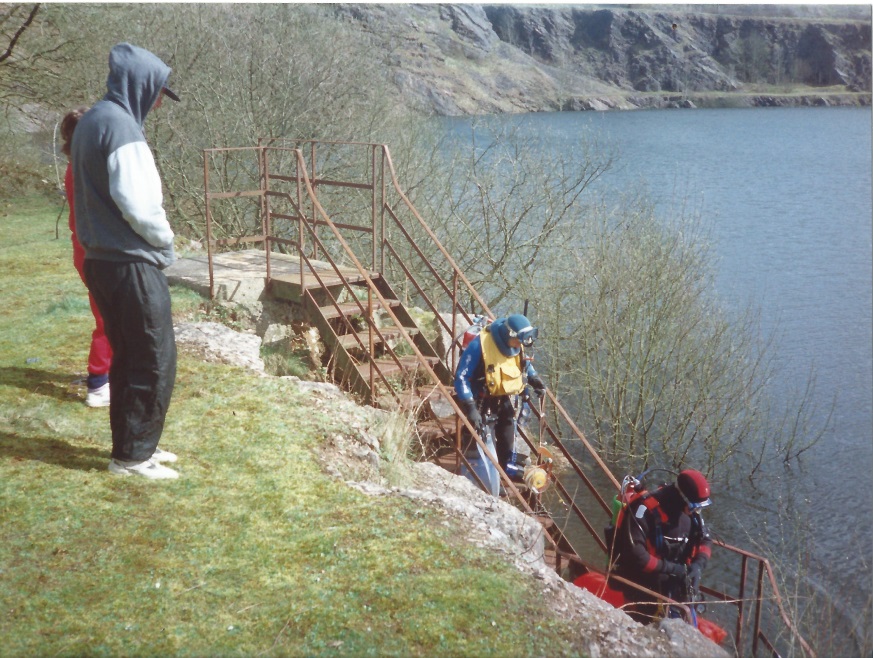
“14/04/94 Inland Dive Waterlip Quarry Somerset Cold & Dark No Viz from 12m – Nothing to see, W Temp 6’ Air In 200 – Out 50 Viz 0.5m – Nil Buddy Adrian”
Of course, there were plenty of quarry dives too, from Waterlip, in the Mendip Hills, historically used as a training site for the Cave Diving Group (and yes, there is a cave dive at Waterlip….who knew…?) Vivian Quarry in Wales, Dosthill Quarry in the West Midlands, and of course the quarry probably closest to me, Stoney Cove (where I have dived over 25 years or so to date), and on up to Jackdaw Quarry, or Capernwray as it is more commonly known now, on the borders of the Lake District near Carnforth
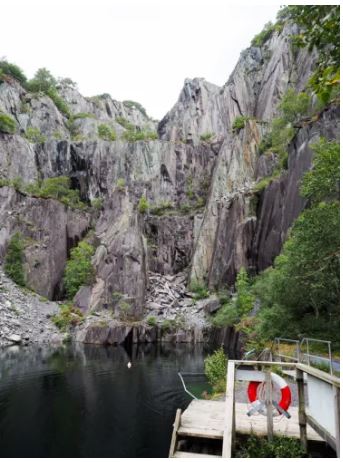
Just a line on Vivian Quarry in particular, Vivian in Llanberis, Wales, is one of the most picturesque places I’ve ever visited, a small and very hidden gem of outstanding natural, and indeed industrial, beauty that merits a look even if you do not have your diving gear with you (you’ll wish you had, I promise)
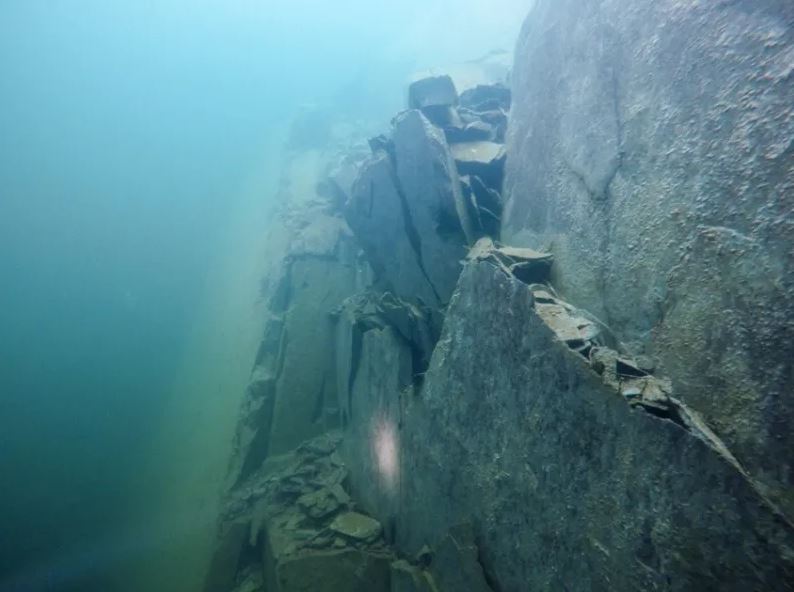
These quarries have given a safe diving environment to millions of British Scuba & Technical Divers over many decades now, and offer almost unlimited training opportunities, from your very first open water dive to deep tri-mix and Re-Breather diving, some with depths of 100m and more. It is easy to overlook the role of quarries in shore diving but they likely see many more divers than the actual coastal shores around us, where most of the diving is now predominately boat based
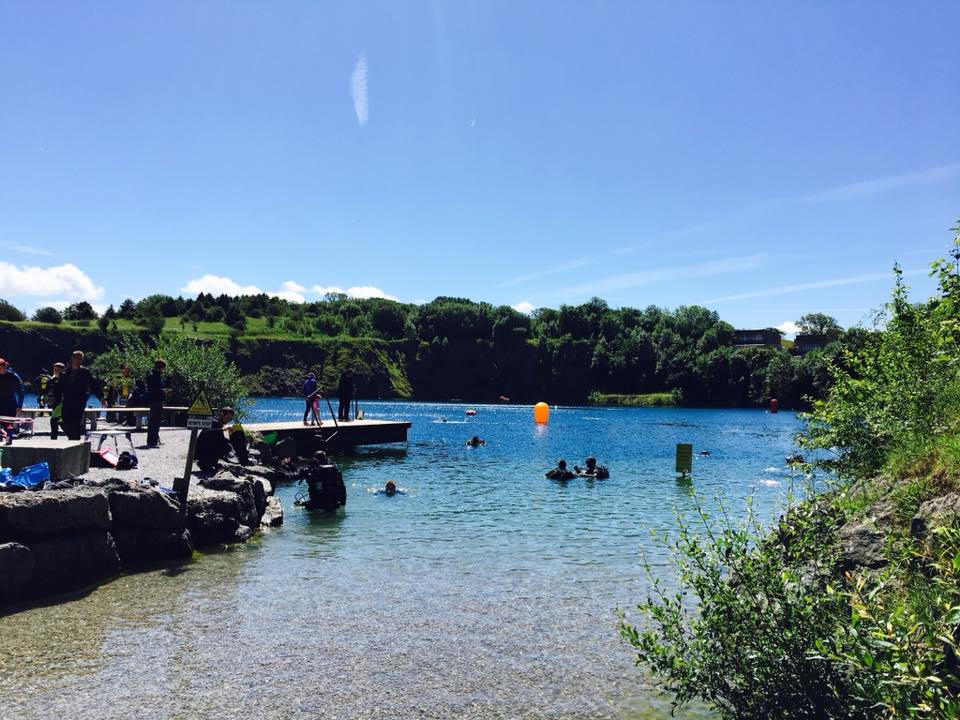
I have a great deal of respect for quarry diving in whatever form it is undertaken, I have enjoyed diving quarries when otherwise it was impossible at the coast, because of the weather or the sheer cost of taking a trip 150 miles or so, with all the expense that entails for fuel and even accommodation, and the very real possibility that the sites are blown out on arrival, and you are lighter in the pocket but no better off in diving experience……. When I say “Safe” there is of course no truly “safe” dive, being underwater is inherently unsafe, no matter what skill level you have, nor how good your equipment, but if you have an incident and you are inland at a quarry site, you have on site safety services with you far quicker than you might at a remote shore site or off-shore too. My first ever dive in Stone Cove was way back in February of 1994:
“SHORE DIVE – First Fresh Water Dive, Took a look round the Wessex helicopter @ Stoney Cove good viz – 10m –‘ish Shoals of Roach & Perch One 2-3 pounder Cold & Fun W Temp 10’ Air In 200 Out 70 Buddy Mark”

It is not only scuba diving that you can get at inland sites if you are lucky enough either, although I believe that, tragically, the Historic Diving Society no longer offers the Surface Supply Standard Diving Equipment experience, I was one of those lucky enough to take a “traditional” dive using hard-hat, lead boots and hand pumped air to walk the ledge at Stoney Cove…….
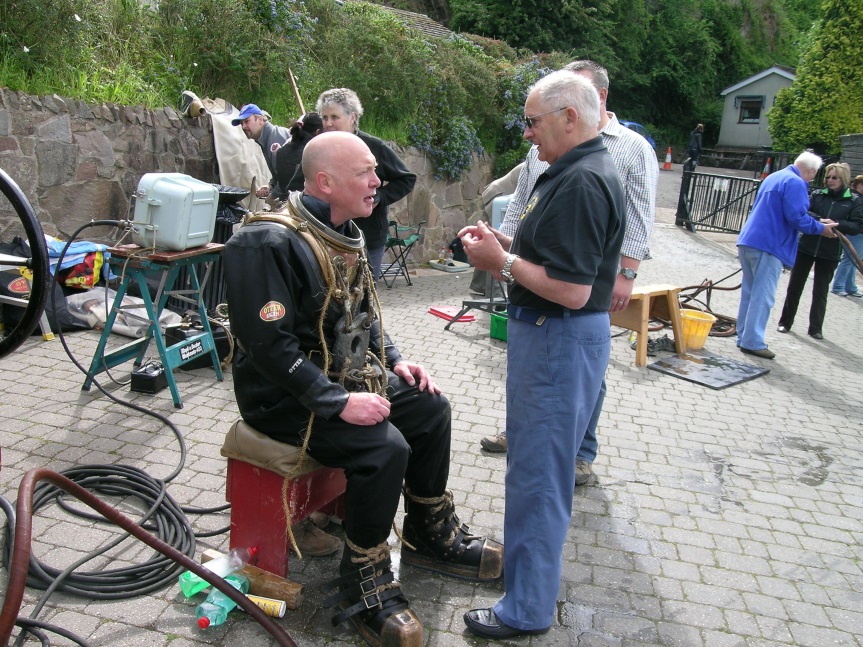
“15/06/13 STONEY COVE HARD HAT DIVE a “full dress” Siebe Gorman dive on the shelf with John Smillie & the HDS which was bloody great! The kit is extremely heavy & the standard boots murder to walk on topside or below as rocks mean you are very unbalanced but it is ace having comms and hearing the hand – pumped air fill the helmet – suit “pants” if the valve is set slack which was odd! Walked about, trapped the hose between rocks & had to back-track & watched divers pass me & land on me as ever – fantastic fun Viz 6m Air In….loads!!”
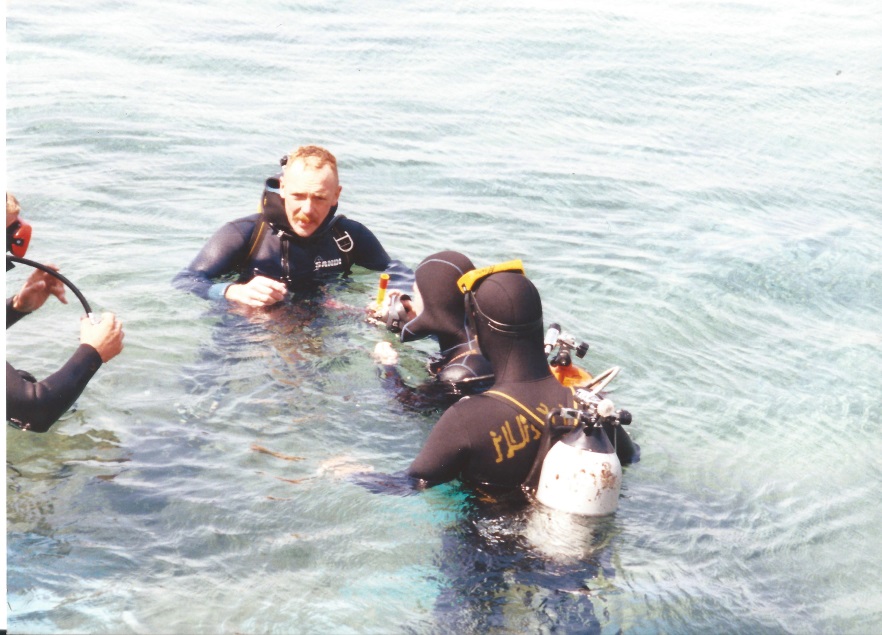
I have been privilidged to shore dive abroad too, my very first shore dive in Croatia was escorting a course of novice divers I had trained back in Zagreb, whilst on the air-base there on a UN tour. The difference in the water temperature and visibility in some locations abroad cannot be ignored, in many cases it is a world apart and whilst the UK can, and does, have some brilliant diving it is hard to argue that the warmer, sometimes 30m plus visibility abroad is a much more tempting prospect, especially as I got inevitably older…….
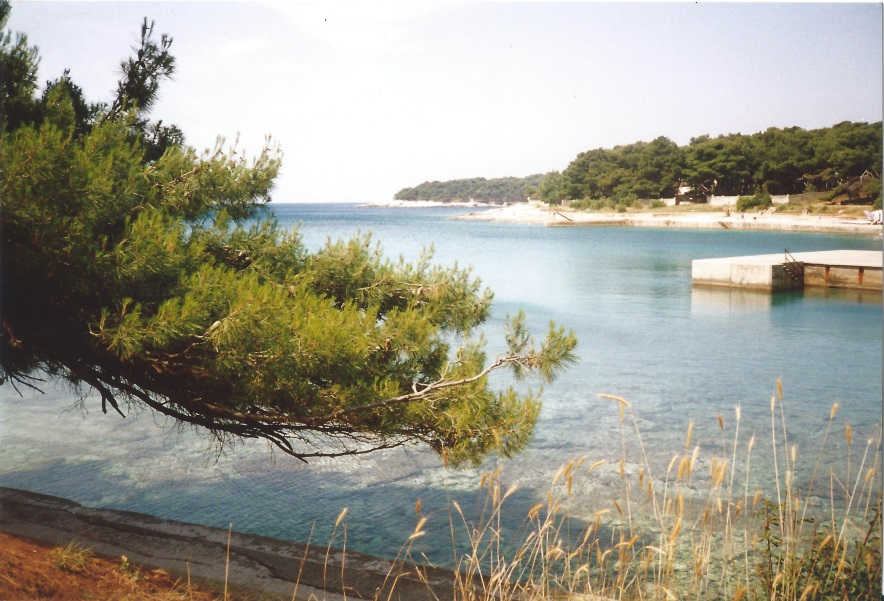
I took my “oppo” Phill for a shore dive around the headland a little from the training site at Punta Verudella, a completely impromptu decision one afternoon just to top out the day’s training exercises and kick back a little:
“19/11/92 SHORE DIVE – Punta Verudella – Croatia Hunting again round the rocks colours different as the light faded, nearly run over by a fisherman W/Temp 17’ Air In 200 Out 100”
Another terse description of a dive that I really enjoyed, the unknown nature of the area and the rocky headland were a joy, as was the pine tree cover fringing the shore right down to the water’s edge. I loved the bimble around despite having to keep a keen eye on Phill as he was only just out of is novice course. This was a dive where the setting Sun dropped quickly and we ended our ferret around the limestone rock gullies only a little before full sun-set. It was to be one of a number of really enjoyable shore dives around Punta Verudella
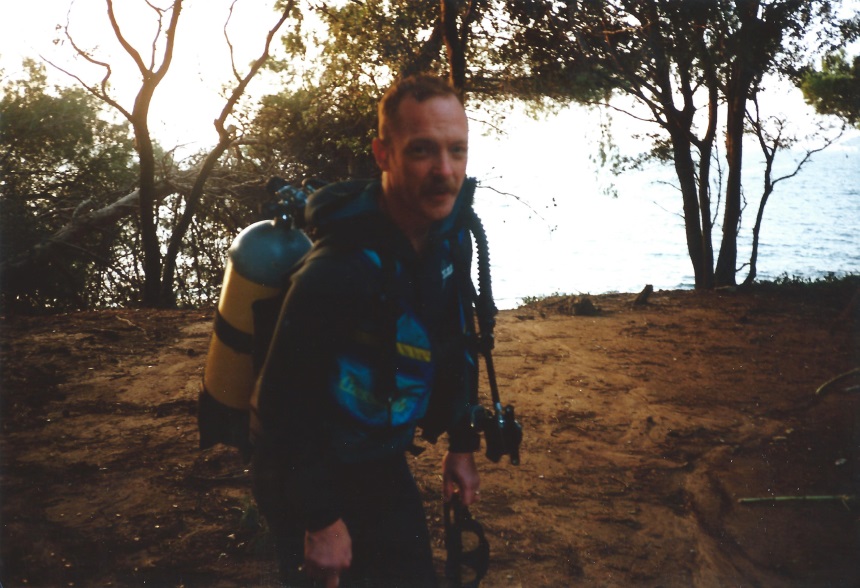
I am lucky enough to have shore dived in a few very prestige places abroad, Croatia, Cyprus, The Red Sea, Lanzarote, Jamaica and the Falkland Islands to name a few, my next “foreign” shore dive was a shakeout dive that Cydive, the facility I had chosen to dive with on a brief holiday, immediately after my UN tour in Croatia (staying with Phill who had been posted out there on his return to the UK along with his wife), I was invited over to stay for a week and couldn’t resist diving whilst there, obviously….the military club there had let me down, they were a stand-off, RAF lot who weren’t interested in an “outsider”, even a serving soldier, just turfing up to dive with them, clearly, as the dive officer just kept putting up more and more barriers prior to me departing the UK. In the end I just decided “sod em” and booked with Cydive, who were absolutely wonderful, despite insisting on the checkout (quite rightly) but graciously not charging me for it……before we dived Zenobia, the ferry lost on her maiden voyage off Larnaca, another dive written up elsewhere on this blog
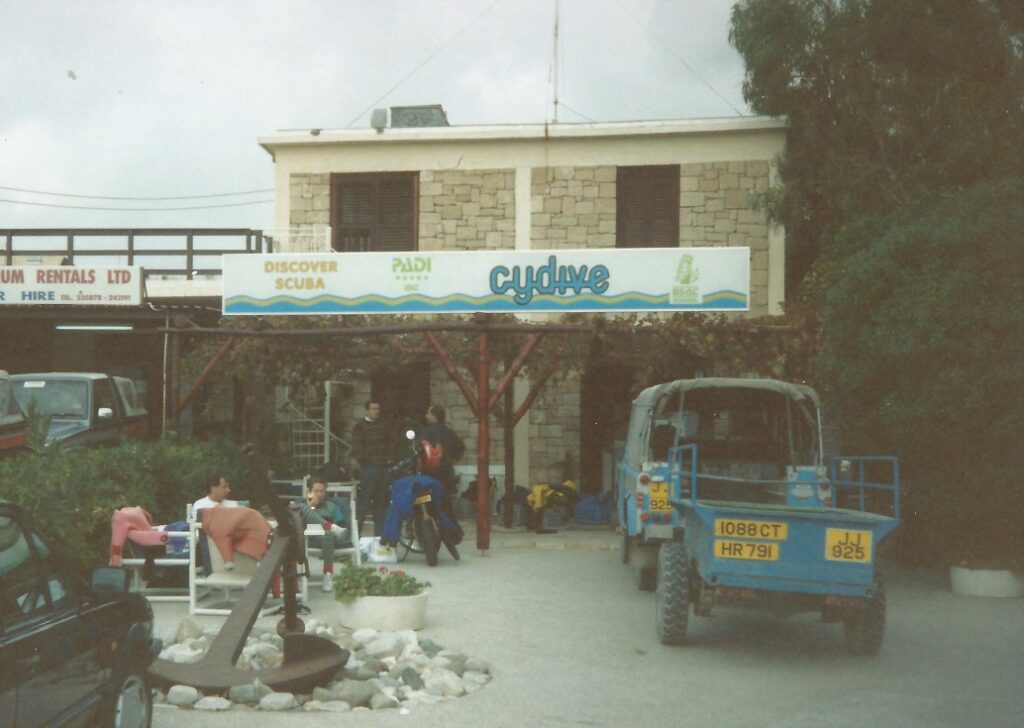
Shore Diving in Jamaica was a rare privilidge, this time on an Army expedition led by Don Shirley, who I would dive again with on the Falkland Islands exped. Our first check-out dive was from the shore in the marina on the headland at Port Royal, of Pirate City fame…..Unknowingly we would be diving in the area most recently surveyed and presented in a TV reconstruction of the Earthquake & Tsunami that brought the “Most wicked & depraved city on earth” to its’ knees without a single shot being fired, the resultant liquefaction submerging 2/3 of the town and taking a square mile of the isthmus below the waves for good
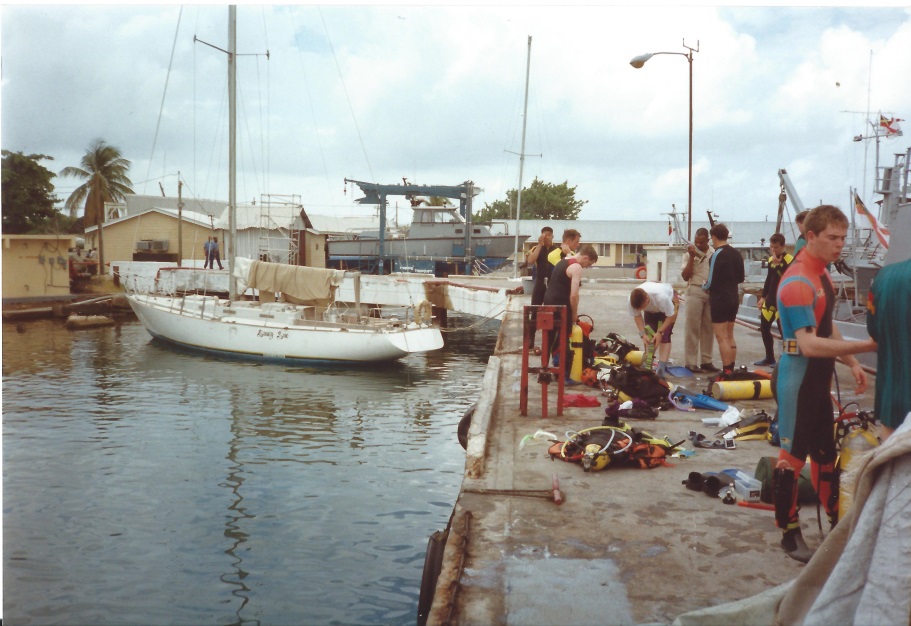
“15/06/94 SHORE DIVE – Port Royal – Jamaica Buoyancy check & shake-out dive Air In 140 Out 100 W/Temp 28’ Buddy Dean”
The description falls short of the dive, both Dean and I came out of the water with aching head’s which prompted me to stop any further check-outs and have the air-bank checked, it showed a blown seal and oil contamination in our air…..it’s not always just the kit we use under the water that can be checked without using a boat to dive….. We had many more shore dives off Jamaica though…. Including my very first night dive:
“20/06/94 SHORE DIVE – Dragon Bay (JA) 1st True Night Dive _ Around a Coral bay sometimes down to 0.5m depth –two large Puffer Fish – a Sea Snake – lots of smaller reef fish beautifully coloured – a couple of Crayfish. A great dive – Air In 110 – Out 70 W Temp 23’ Buddy Steve
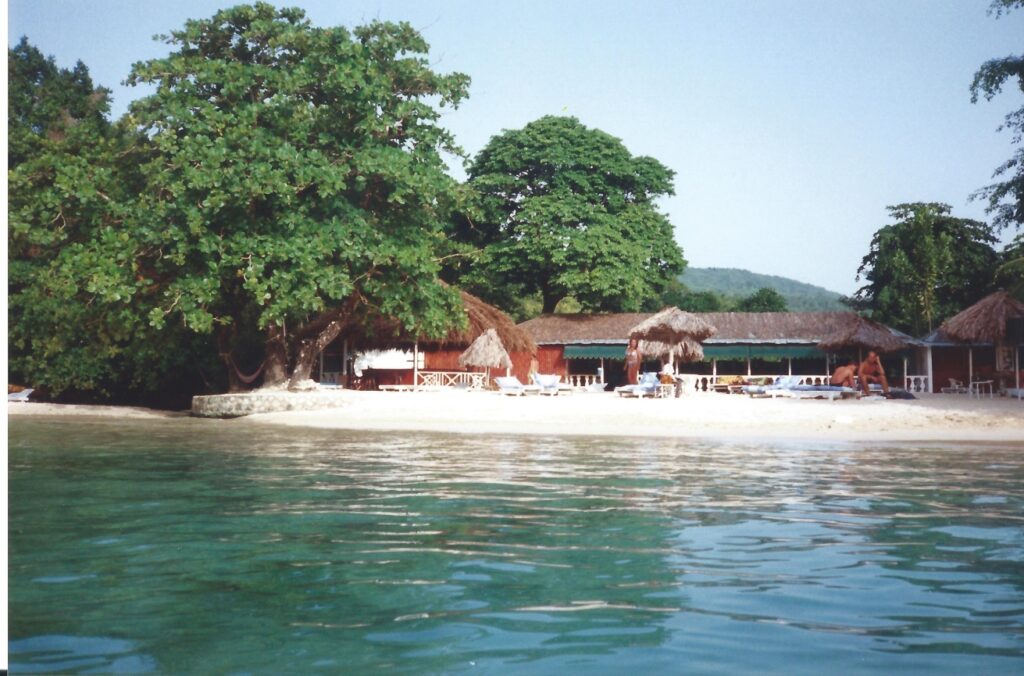
Those of you of a “particular age” may recognise the location from a popular film of the era, the clue’s in the photo title…….. an additional clue, if one was needed…. it’s just around the corner from Frenchman’s Quay, where yet another popular film was made from a book by Henry De Vere Stacpoole, around the same time, featuring a certain “Lagoon” and an often very scantily clad Brooke Shields

My next few shore dives would be in waters with more in common with Scotland than Jamaica or Croatia, in the Falkland Islands, on a military dive expedition in 1996……Another expedition I carried out with Don Shirley and none the less adventurous but definitely no sunshine tour:
“05/01/96 SHORE DIVE – GULL HARBOUR – Weddell Island South Atlantic (Falklands) Shakeout dive through the kelp – largest I’ve ever seen – loads of Squat Lobster & then into an old wreck ( a brig size) plenty of timber left to root round, over to port I think. W Temp 10’ Viz 4-5m Air In 200 Out 150 Buddy Chris”
I have a special affinity with the Falkland Islands and the Islanders (the true Falkland Islanders), having returned there to work for a year recently, as a direct result of my love for the place following our expedition, it is a stunning place with the most amazing wildlife and a stark and heart aching rugged beauty. Although it is very difficult to get there even in these days of air-travel, it is well worth a visit (Becky Schott, the superb diver photographer does the occasional trip there, however, you will need to be quite (very) well off to consider joining….) We would carry out a few more shore dives on that tour, and that dive proves you can come across the most amazing things whilst shore diving, the vessel noted turned out to be the Castalia, a wreck with an interesting historical significance that I also cover elsewhere in this blog…….

Interspersed with the “exotic” side of shore diving there was always the ever-present Stoney Cove, however we did occasionally abandon the cove for shores further afield….one of those was the starkly beautiful Wastwater, a Cumbrian remnant from the ice-age, the deepest of the English Lake-District waters and one a little more off-track than Windermere or Coniston:
“02/04/00 WASTWATER CUMBRIA – Deep Dive, Down to the Gnome Garden for bottom time after setting up stage for deco. Viz 5m ish Air In 230 Out 110 W Temp 8’ Buddy’s Darren & Jason”
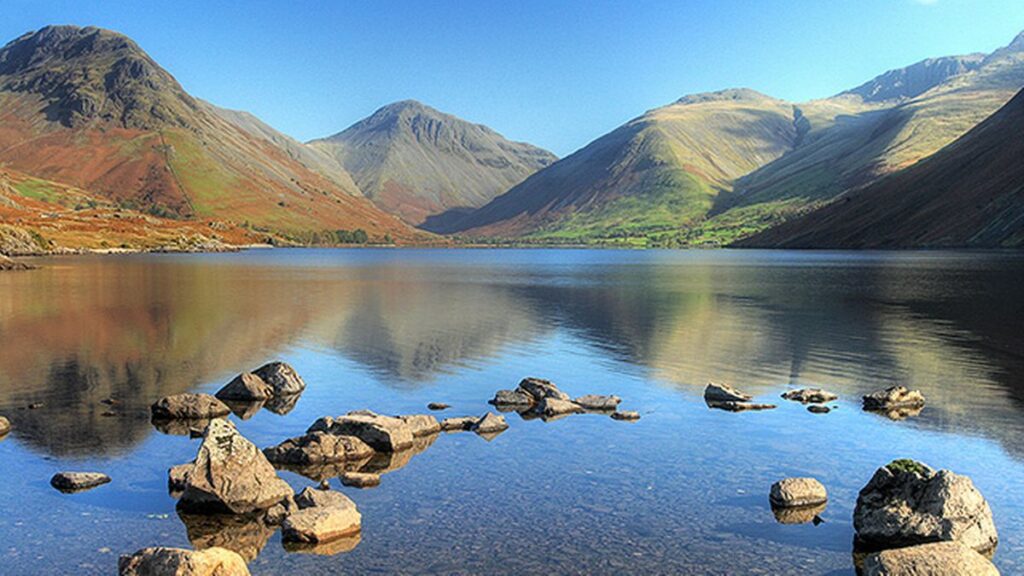
Wastwater offered a deeper option than Stoney which bottoms out at 36m, Wastwater has depths down beyond 60m and is an ideal technical dive-site, very accommodating for advanced Nitrox and Tri-Mix or Re-Breather diving, (by which I mean in terms of depth, there are no dive-oriented facilities locally, I believe the closest gas provider would be Capernwray…..) albeit a lot further to travel, the up-side being there is little chance of a dive being “blown out” by weather, it’s not impossible, just very unlikely…….
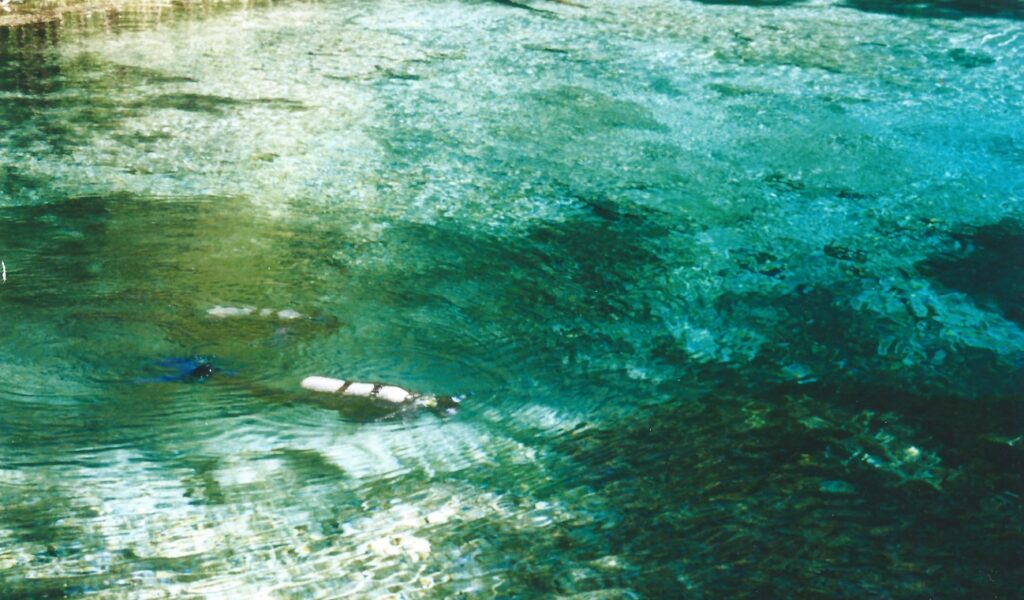
Shore diving also includes, of course, cave and cavern diving, although I don’t claim to be anything more than “interested” in this type of diving, I have, again, had the privilidge of diving many sites in several widely separate locations, from Croatia to the USA and Mexico, my first ever cavern dive was at the world famous Ginnie Springs in Florida:
“Ginny – Springs Florida USA A glimpse of the realms of cave diving. The training grounds for the greats – Exley Palmer- Farr. The cave system starts here but is now grilled shut about 40m back in the cavern where water surges up at 1kt. The cavern is a delight with a squeeze & several off shoot grotto like areas trapped air on the roof reflects like a mirror ball when lit from below – a superb dive with ghosts of greats as buddys – just out of sight!! Air In 250 – Out 150 Buddy Kent”
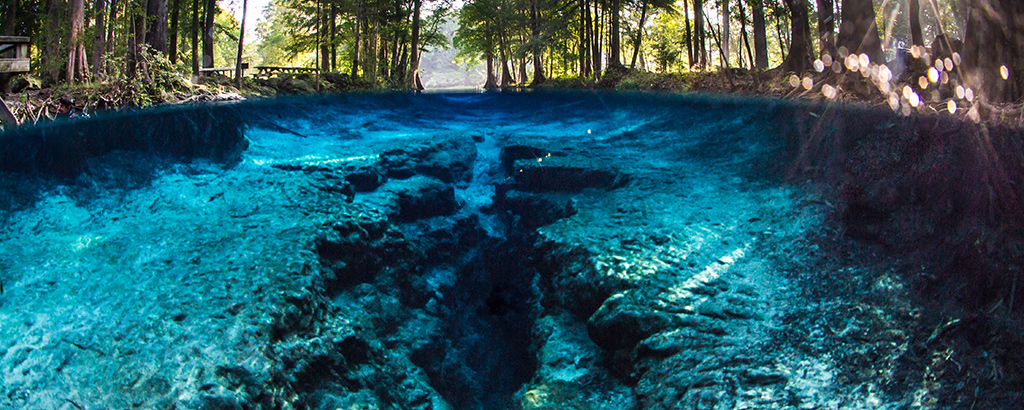
I only had one day diving at Ginnie Springs and dived it twice, I would not get another cavern/cave dive until a couple of years later when we were in Lanzarote with some of the divers from Fenton Sub Aqua Club, Jason one of my dive-masters had lived there for a year and recommended we visited to dive, who was I to argue? Blue Eyes Cave was an accessible dive from the Shore off a headland easily accessible to the dive-shop’s small truck, so we piled our dive kit in and headed out:
“25/10/04 LANZAROTE Blue Eyes Caves Long swim out to the cave with plenty of colourful fish with a very large Ray in the sand which took off as if “on cue” beautiful! A shoal of Barracuda with many fish just to our right & then into the cave from 14m to 30m a narrow entrance which has several “windows” allowing light in, then into the main chamber full of nooks & crannies & air wells down a narrow hallway to exit from the skulls left eye. Very nice dive, off back to deco through the ascent & climb out up the shore rock plateau. Nitrox 32% Air In 200 Out 60 Buddy Jim Leigh”
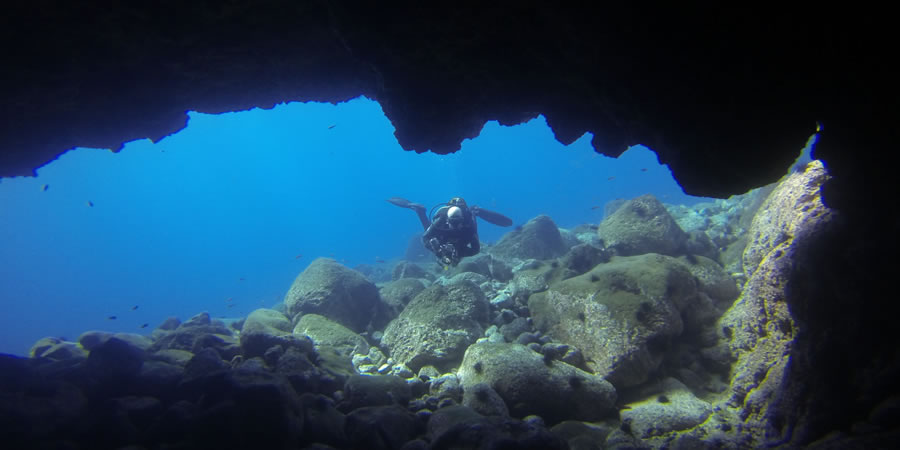
I have been lucky enough to be indulged by my wonderful wife Ellie and my family when on holidays that are strictly “Non-Diving Affairs”….(per-se)……. and have enjoyed the odd shore dive in the Red Sea (and elsewhere), a couple have included our children although Ellie was not as comfortable with that, as a non-diver, if I am perfectly honest
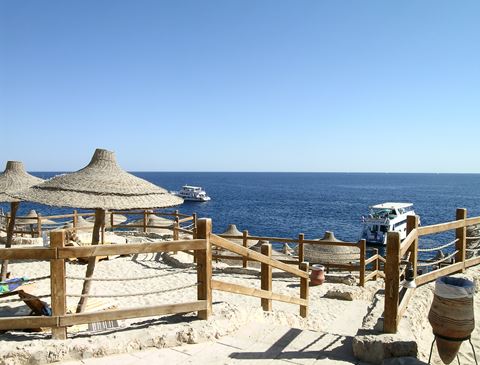
We ended up in the Crowne Plaza in Sharm el Sheikh in 2006 on such a holiday along with good friends Mark Hill and his wife Kerry and their daughter Alicya, Lee Lewis & Kai were all old enough (just) to take a discover Scuba off Far Garden Reef which the hotel backs onto
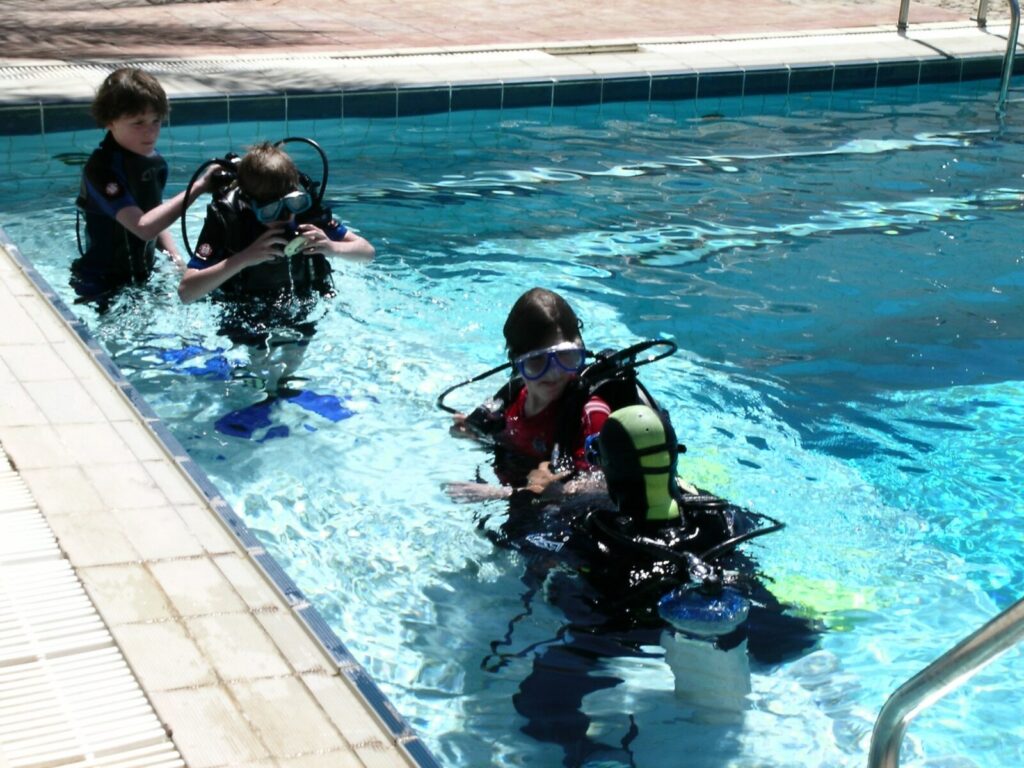
“FAR GARDEN – Sharm el Sheik Diving with Kai and Lee & Lewis fantastic experience to show Kai and the boys truly beautiful fish and a marvellous reef. Everything was there Parrot Fish, Butterfly Fish, Dory’s – allsorts!! Wonderful Air In 220 Out 100”
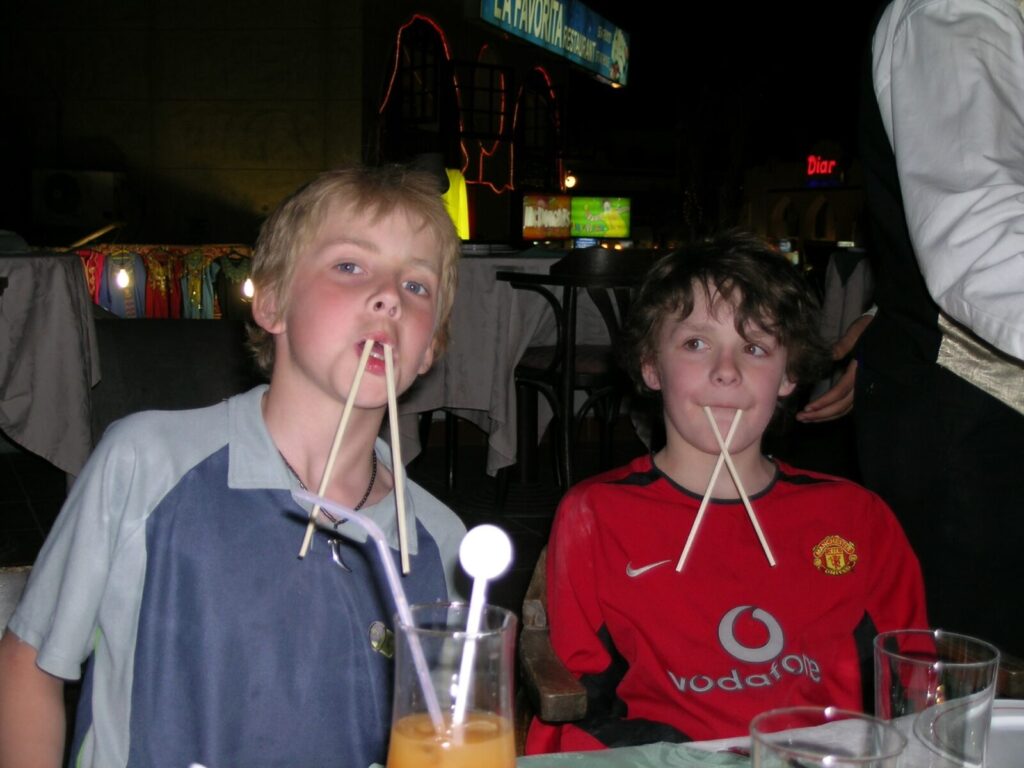
The entry was down the dive-centre’s stairs directly onto the edge of the coral reef, the boys all loved the dive and Lee and Alycia carried out a second dive later that day, so at least I have been able to give them a taste of the magical world that sits just under the surface….let’s see what they eventually do with that……..
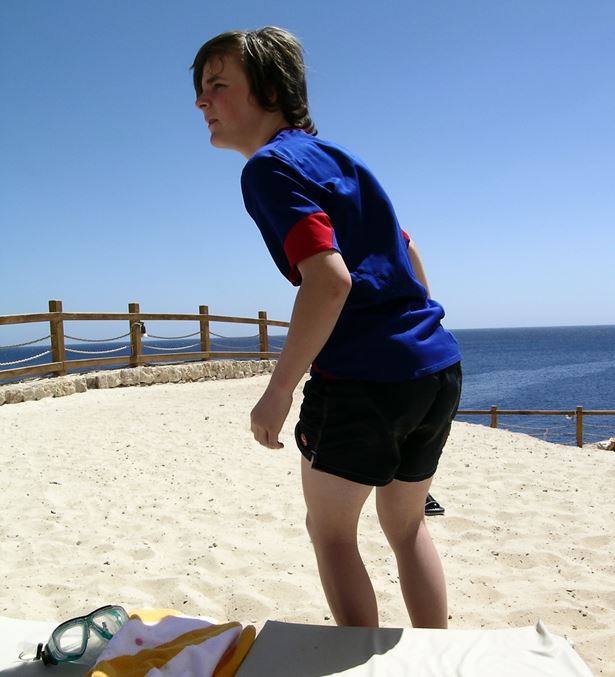
A particularly different dive, which is a shore dive, but also an overhead environment dive of sorts (you’ll understand in a minute) is “The Rez” a dive very close to home up in the back-woods just outside Stoke on Trent, which is literally down the road from me in Uttoxeter. The Rez is, as you might deduce from the name, a reservoir, but this one comes with a difference, as it is one of the metal constructions which carried reserves of fresh water which I believe were deliberately hidden underground to prevent damage from bombing during WWII. That is the story I have been told and it seems plausible to me at least. Back in 2008 you could dive one of these reservoirs, and I took Mark Hill with me to get him back in the water after a bit of a diving absence for him arising from work and family commitments:
“06/07/08 THE REZ – Underground Reservoir – Taking Mark back into low-viz dives – great rooting around & in & out of the block wall rabbit hole’s Viz Nil but water clear after entry Air In 150 Out 100”
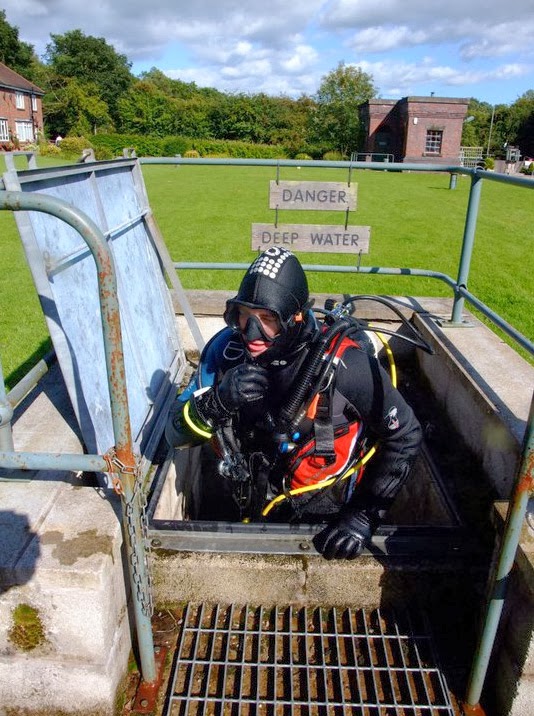
The Rez is a strange dive, the water is seldom deeper than 2m and the entry is down a set of metal mesh stairs to a platform allowing you to hunch down and drop into the water which you then swim around using a torch (or not…. if you prefer), through various access holes in the metal wall framework, separating the 40m or so square site into “rooms” effectively….want a challenge? try to navigate yourself in and back out without your torch (torch in first can work too) you’ll be surprised how difficult it turns out to be, and it’s a safe way of learning a very harsh lesson…wreck penetration with no line is a fools game, with a very silly “prize” for those who believe themselves un-requiring of such trivialities as wreck penetration lines…….
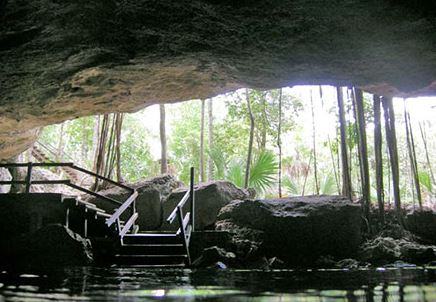
I was lucky enough to spend three separate holidays in Mexico, diving with my friend Eric “Budgie” Burgess, an ex-Royal Navy colleague from my very earliest days of shore diving off Portland in Dorset. Budgie had two RIBs run out of the Breakwater Hotel, in Castletown, Portland way back in the early ‘90’s, and then ran the Aqua Sport Hotel and Dive Operation, until wanderlust took him off to become perhaps the most experienced dive-guide in the Tulum area in the Cenote’s of the Yucatan:
“24/02/15 DOS OJOS (Two Eyes) Cenote Mexico The Barbie Run – Through the first Cenote I have dived with Budgie – the first dive we have done together despite 25 years in the business together!! A small cavern entrance with a wide pool to descend then winding through the caverns through the tunnels & into air bells. The scenery is fantastic the stalagmites & stalactites everywhere with shapes cut into the Limestone by water & the rains when the caves were dry. Hopefully captured some of this on the Go-Pro – Awesome experience but the re-breather is still a maul – still a pain re- buoyancy Viz Unlimited Air In 3L 180 Bar Out 80 Bar Buddy Budgie”
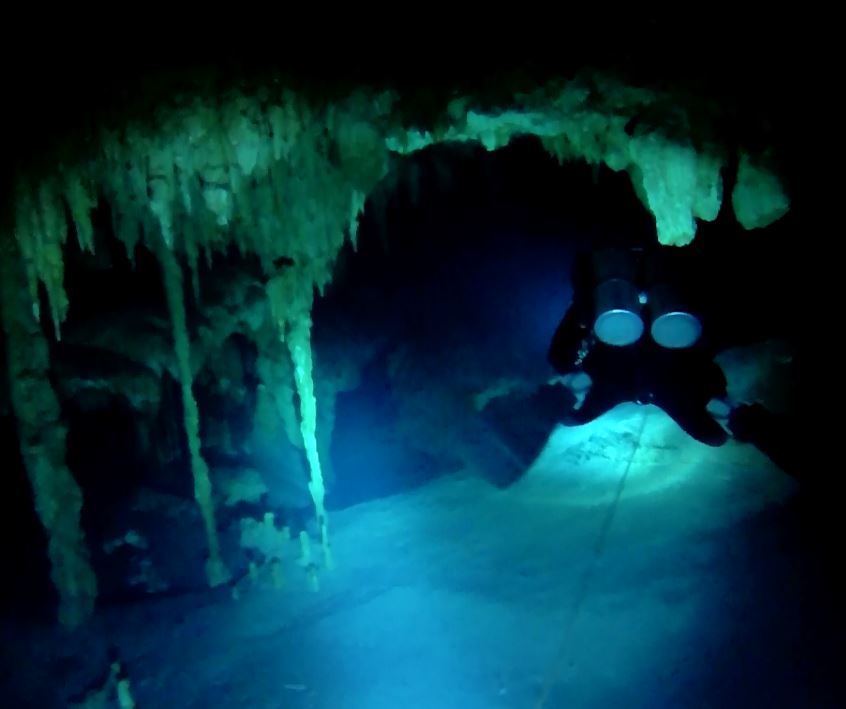
I took many, many Shore Dives over the three visits to Tulum and the Yucatan, some multiple times and some just once, I will cover them in other pieces in this blog and hopefully this just illustrates another different type of dive available from direct entry or a shore, of sorts
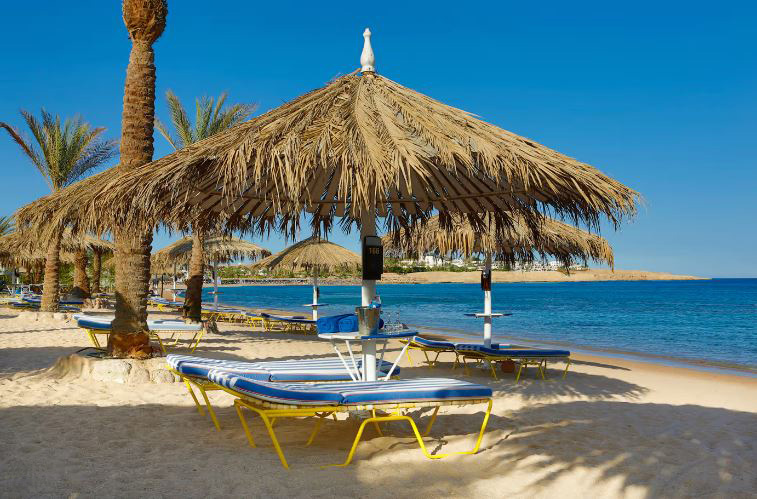
Another of those “Not a Diving Holiday” dives, to show I am not just a wreck-obsessed rust junkie, (Ok….I admit it…I am) was off the beach at the Hilton Dreams in Sharm el Sheikh, a simple walk across the road from the hotel, with all the gear being down at the beach ready for me….kitting up and walk in, as simple as that:
“06/04/13 RED SEA – Sharm – el Sheikh Bay at the Hilton Dreams Beach, in over the sand to see a large (5’) Green Turtle munching on Sea Grass. Down to 18m to a coral outcrop with very pretty Angels (Masked) and two Spotted Rays and over & round to see Pipe Fish, Clown Fish, Puffers, Nudibranchs & on to sand again to a feeding Eagle Ray (2’) a very pleasant holiday dive we ended on a 5’ Grouper sat in broken pipework – lovely dive Buddy Gary Air In 200 Out 65 Viz 20m”
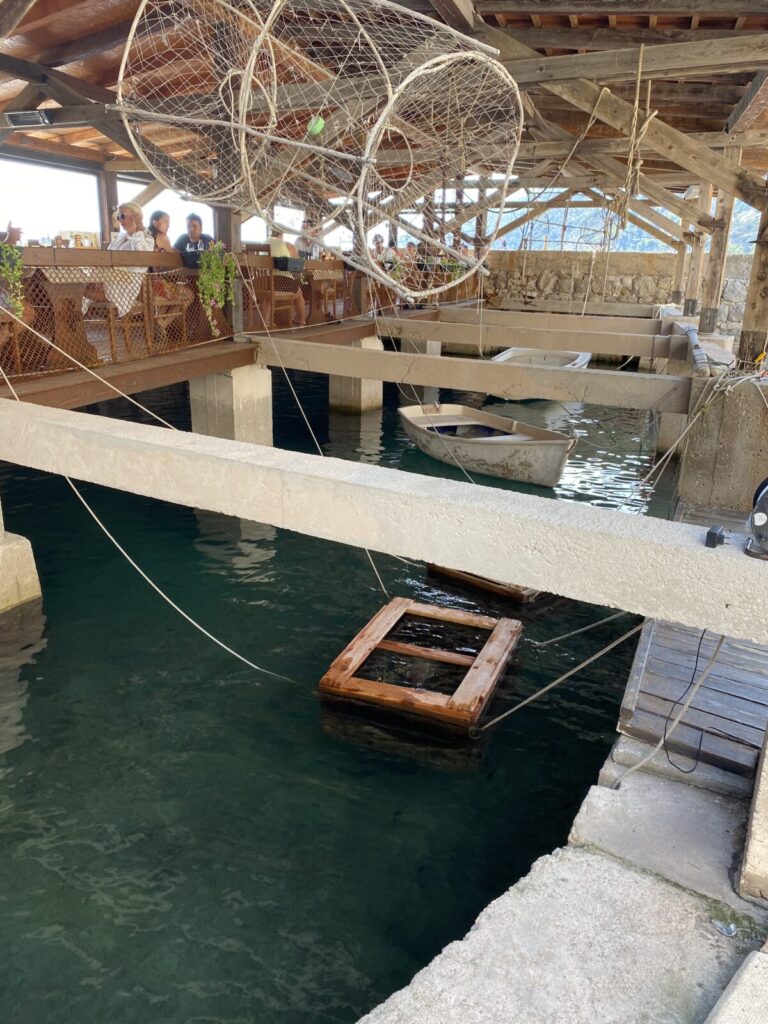
On one of my frequent visits to Croatia, I put aside my obsession with wrecks for a moment….alright, there was a day we couldn’t get to the wreck site I wanted…..and I decided to take my kit back around to the local Lobster and Sea-Food restaurant made far too popular in that damn movie “Mamma Mia”. Ellie and I love the place and I’d asked if they wouldn’t mind me dropping in that evening dressed in rubber….they said “fill your boots but do not dream of freeing the Lobsters”……:
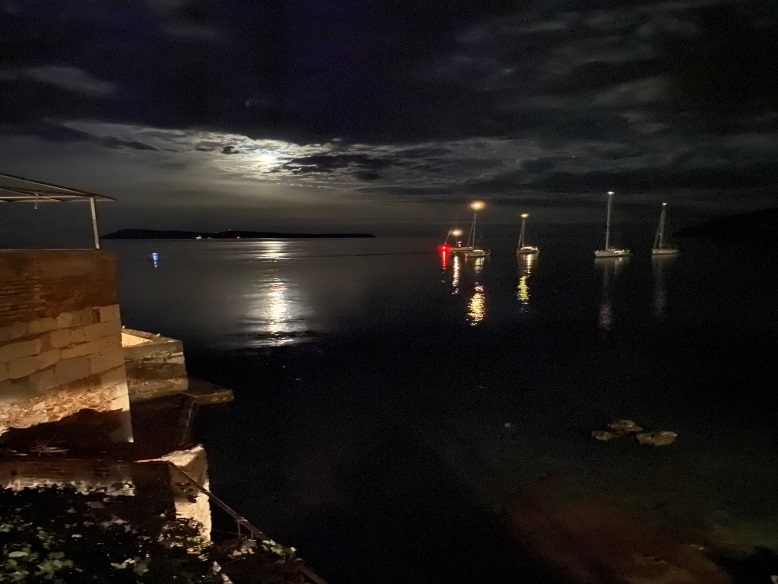
“31/08/21 SHORE DIVE Komiza Night Dive from the slip by the apartments just for the sake of it! Pain in the ass getting the gear in place from Manta to the slip but fun! Went round the rocks under a clear sky of stars & ferreted round a ridge to reach the Jastozera (Mamma Mia) restaurant & swam in & round their Lobster pen! Plenty of small fish around & the odd Urchin to be wary of. A great fun dive in 3m & less of water Air In 200 Out 170”
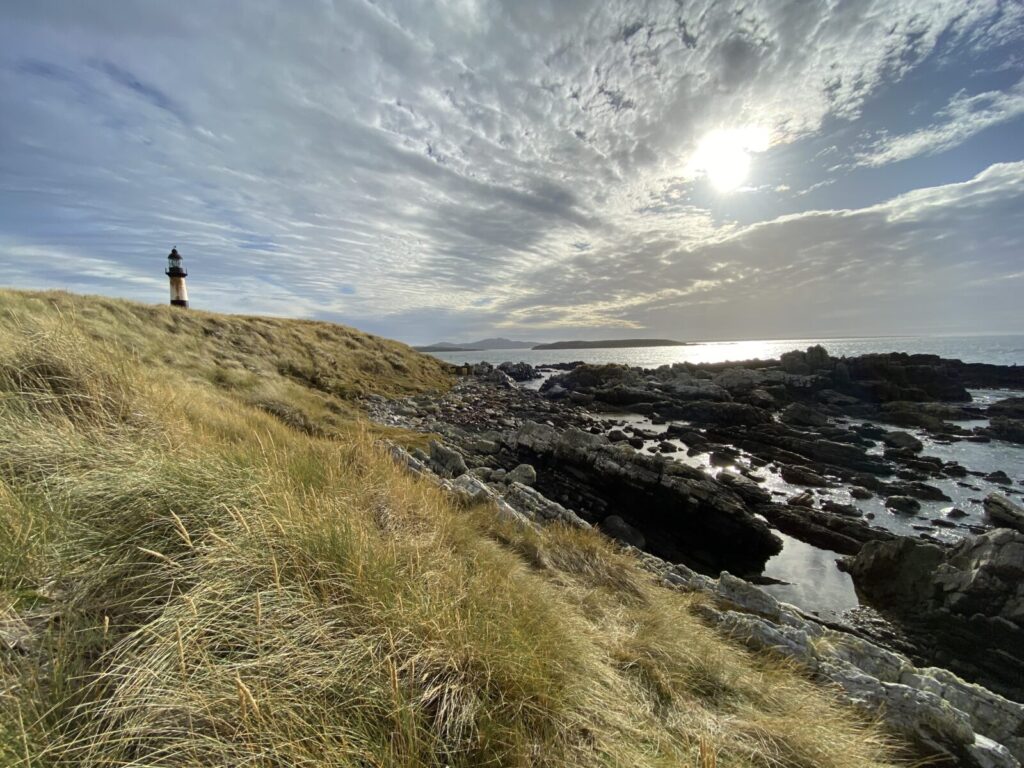
And so, to conclude this far longer than expected tome on Shore Diving, a piece I honestly believed I would struggle to get anything meaningful around……I offer my very last (so-far) shore dive, taken just a year or so ago whilst working in the Falkland Islands, off Cape Pembroke a couple of miles outside Port Stanley, under the watchful eye of the Pembroke Lighthouse, the most Southern Lighthouse in the world
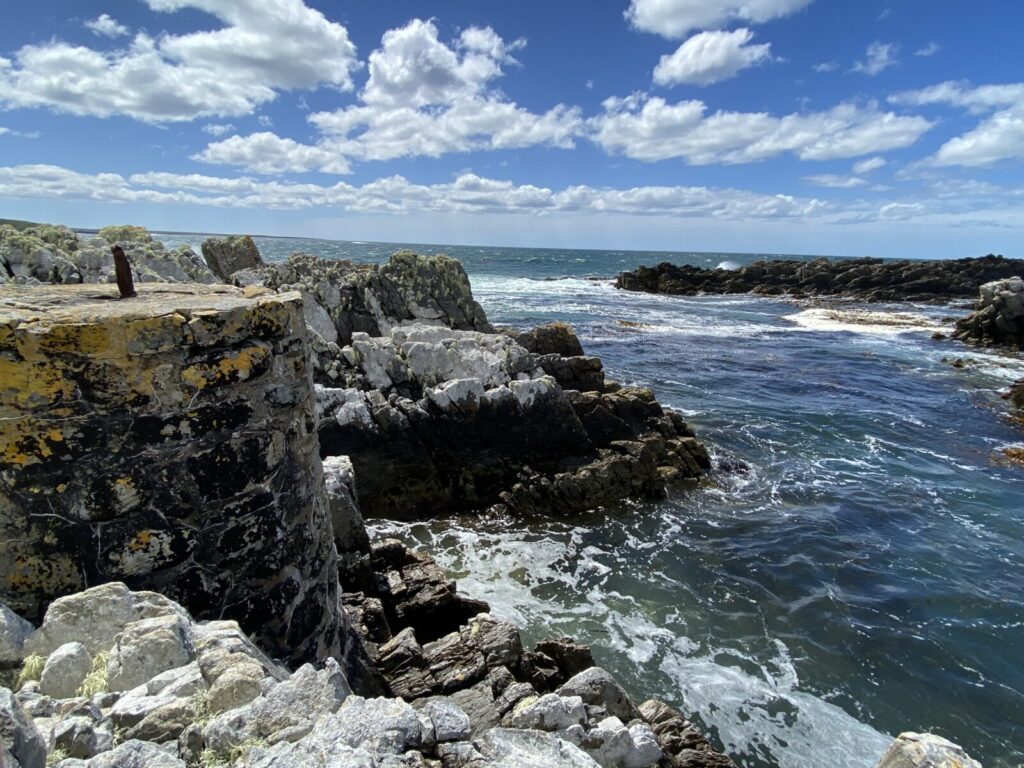
“02/04/23 CAPE PEMBROKE Falkland Islands 1st dive back in the Falkland Islands & a Shore Dive to the left of the Lighthouse @ Cape Pembroke, where the crane used to be sited at the pillars in a gully. Entry was easy but lower water than I expected Sea was full of Kelp debris perhaps a storm had trashed some fronds as the floor was a matt of “leaves” 20 minutes bimble around the rock walls out to the mouth & back Max Depth 8m Air In 150 Out 120”
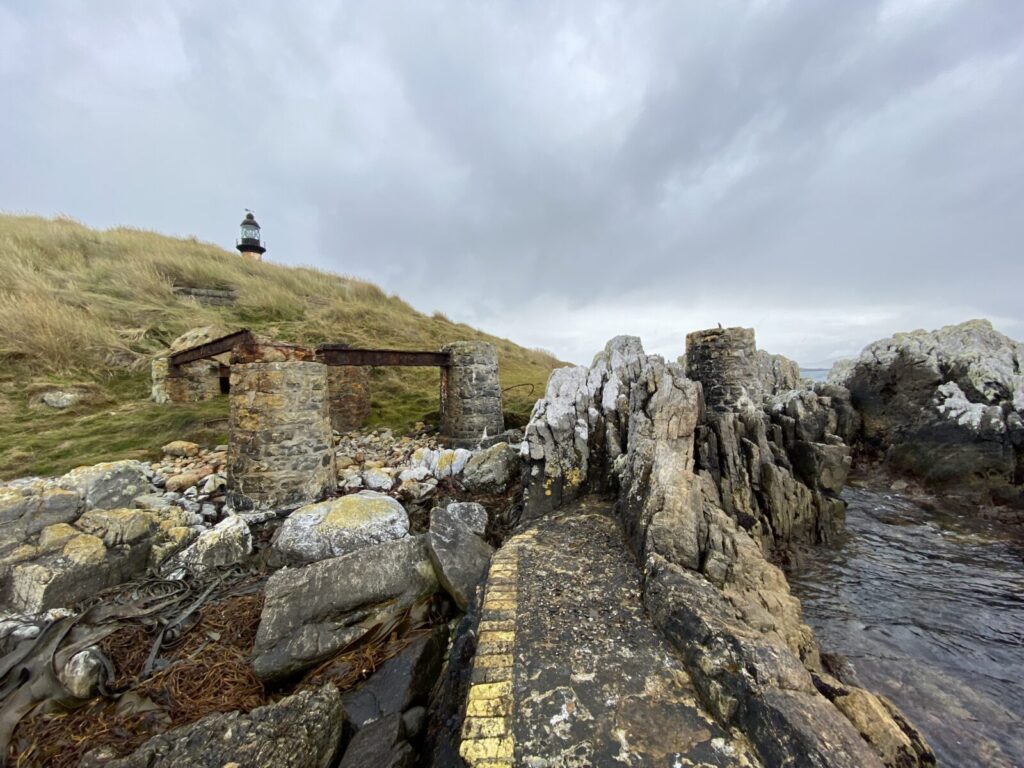
I had been lucky enough to get a “fill” from David Eynon, the writer of the dive book “Beneath Falkland Waters” written about David’s many diving adventures over some 20 years or more around the Falklands, which I’d read, but compressors out there are very few and jealously guarded….I had expected this to be the first of many dives out there, sadly that was not to be, the diving has essentially ceased, the military club disbanded in the Covid years, so there’s nothing unless you join the local conservation group, who catalogue the myriad small species in certain at risk & conservation areas, although I got in touch with them, sadly the contract I had taken turned out to be one I wanted to get out of….wrong people….wrong attitude type of affair I’m afraid, so that was the last Shore dive in my log so far, and, very sadly, the last dive I’d get in the Falklands….I hope one day to return, there is so much more there to dive……
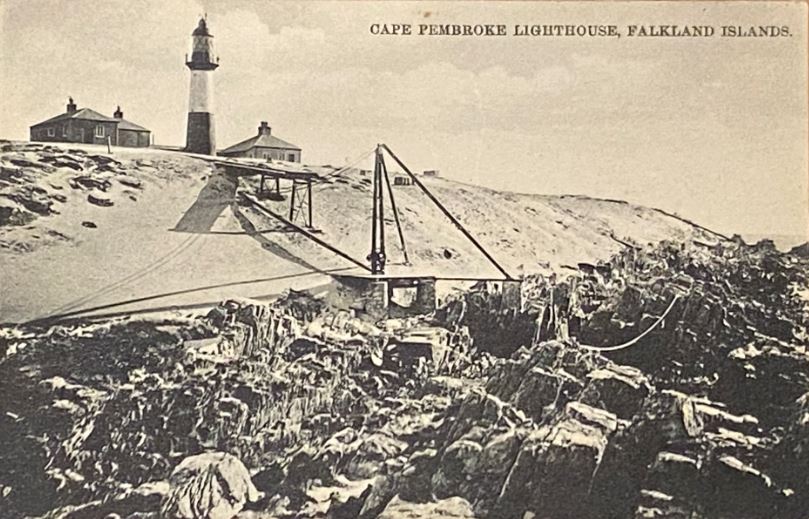
Why not take the last dive with me…….
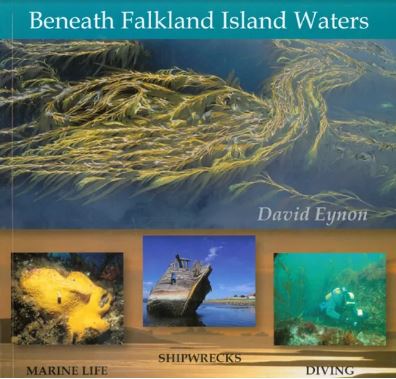
As always this piece would be far less interesting without the contributions of others, namely, for their excellent photos: viki@chronic-wanderlust.com, Edd Mitchell, reddit.com, Ginnie Springs, josoceanmedia.com & Vivien of diefwrmondivers@gmail.com to all of whom, including of course David Eynon for my Falklands air fill and his inspiring book, Beneath Falkland Island Waters, I am enormously grateful
